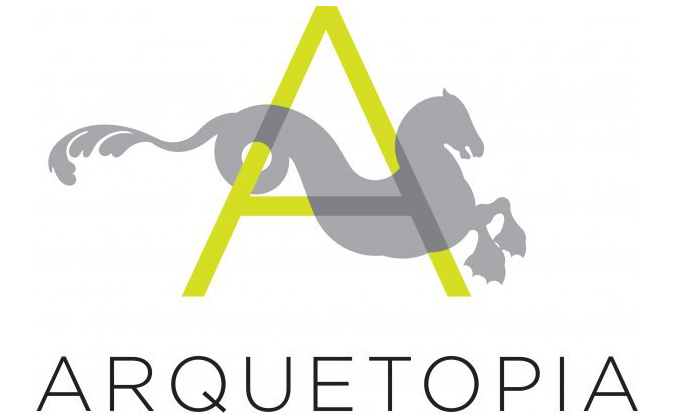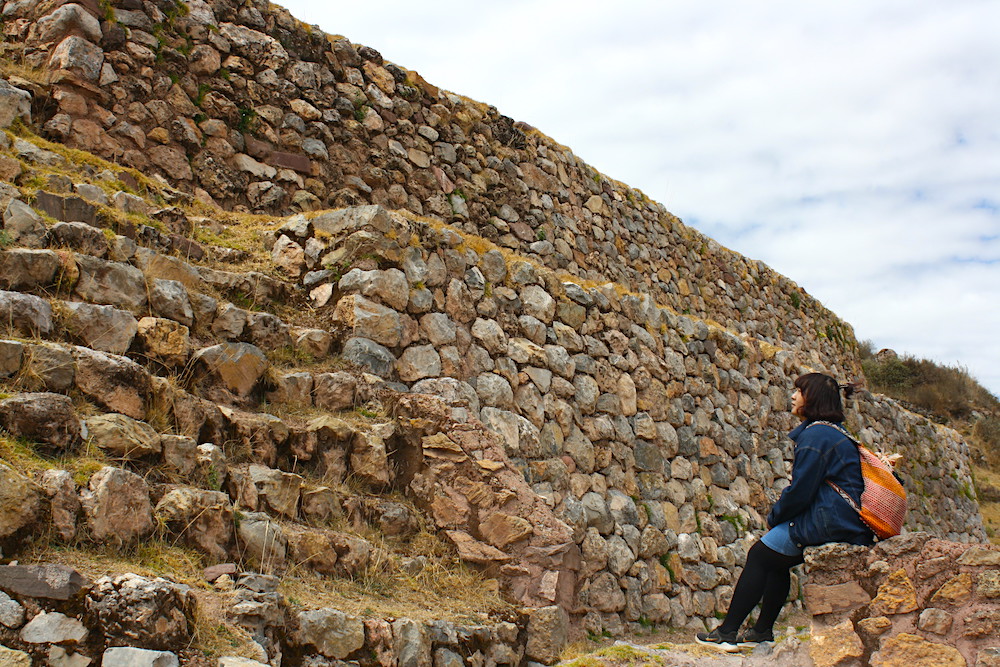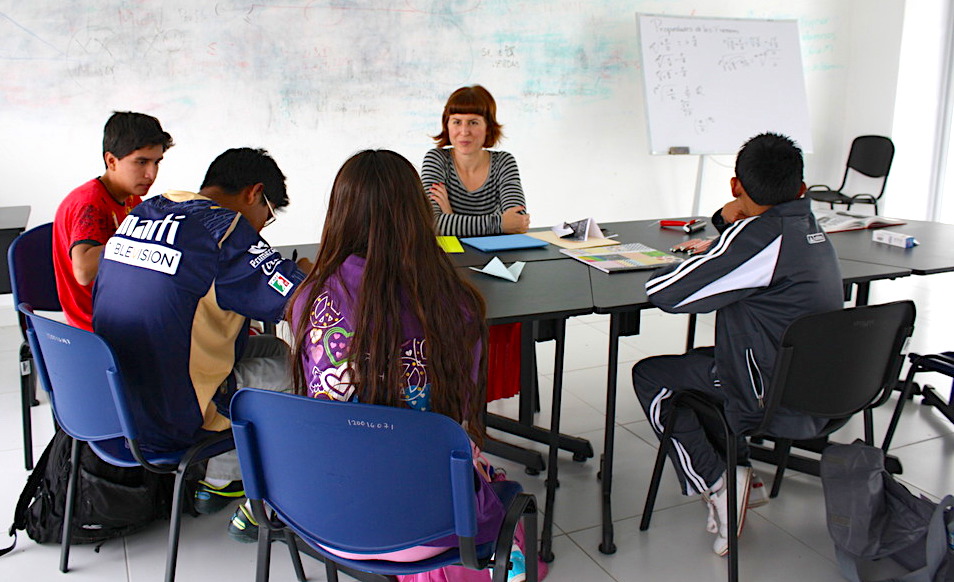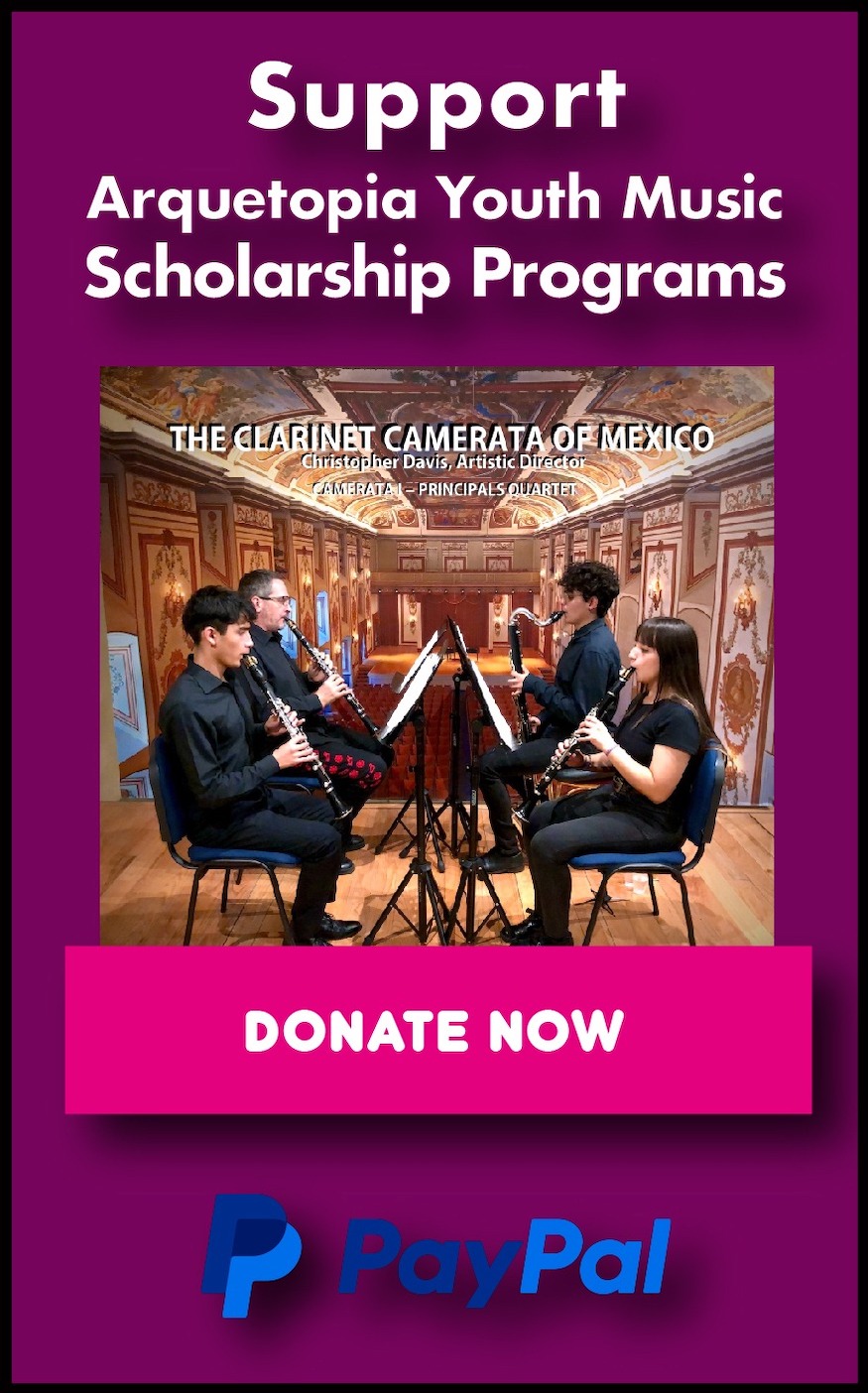Our Resident Artists & Writers
Spotlight on Outstanding Arquetopia Alumni – Updated August 2025
Carla Castro (USA) • Anne Meneley (Canada) •
Jördis Hirsch (Germany) • Alejandra Walzer (Argentina/Spain) •
Summer Puertollano (Philippines) •
Quanda Johnson (USA) • Kailey Mackenzie Brown (USA) •
Sofía Maldonado (Puerto Rico) • Anna Stuffelbeam (USA) •
Juarez Hawkins (USA) • Kat Manton-Jones (USA) •
Monserrat Tlahuel-Flores (USA) • Kaima Akarue (USA) •
Mike Kimball (USA) • Julia Kunze (USA) • Gastón Virkel (Argentina/USA) •
Sarah Delaney (Canada) • Aziza Murray (USA) •
Juvana Soliven (USA) • Naomi Friedman (USA) •
Valentine Abraham (France/Canada) • Madlaina Fontana (Switzerland) •
Will Oberlander (USA) • Alanis Vulpis (USA)
Click Here for Special Residency Programs for Arquetopia Alumni

CARLA CASTRO (USA)
Visual Artist – Printmaking
What is your artistic practice?
Intaglio printmaking.
Which has been the text, essay or quote that you read at Arquetopia that most influenced your practice and why?
The Mexican Picturesque. This reading influenced my practice since it has a lot to do with the time period of the stories I am illustrating. The description of the 19th century travelers that visited and heard about Mexico made me think about how to represent my illustrations accurately with understanding the history and modern thinking of today. How the depictions of the past are still prevalent today and what I can create to resonate it to the average Mexican viewer and Mexican American viewer. What subtle details I can create in my work that is inherently only in a Mexican setting. The reading really made me start considering much more than just creating a piece that is a direct translation from a page.
What is next in your artistic practice after the residency?
My hope is to continue creating illustrative works on more stories and legends that are common knowledge in Mexico and bring that to the United States to the Mexican American community and to anyone that love stories. I hope to create a book and collect stories to even urban legends and illustrate them in three story sequences for engagement.

ANNE MENELEY (Canada)
Writer
What is your artistic practice?
I’m a professor of cultural anthropology. We don’t usually get called “artists”, but Arquetopia in Oaxaca was a wonderful place to write.
What has been your artistic process during the residency?
I worked on a comparative paper about walking in cities and danger, both imagined and real. Along with research in New York, Singapore, Ho Chi Minh City, Tbilisi and Jerusalem, I reflected on moving from a car-centric environment in Calgary, Alberta to graduate school in New York City, North America’s most walkable city. Part of my project is reflecting on the role of plants and trees in making welcoming cities; our lovely neighborhood of Oaxaca, had many inspirational examples of plants-and-people coresiding, which I photographed as I walked every day.
Which has been the text, essay or quote that you read at Arquetopia that most influenced your practice and why?
I loved Karim Kattan, “At the Threshold of Humanity: Gaza is not an Abstraction” in The Baffler, published on 31 October 2023; it is so important in reminding us all to speak up about Palestine, even when that isn’t “convenient” for people.
What is next in your artistic practice after the residency?
I’m off to do some walking research in Mexico City for a few days, then I will teach on food in Italy for a week, followed by more research in the Republic of Georgia.
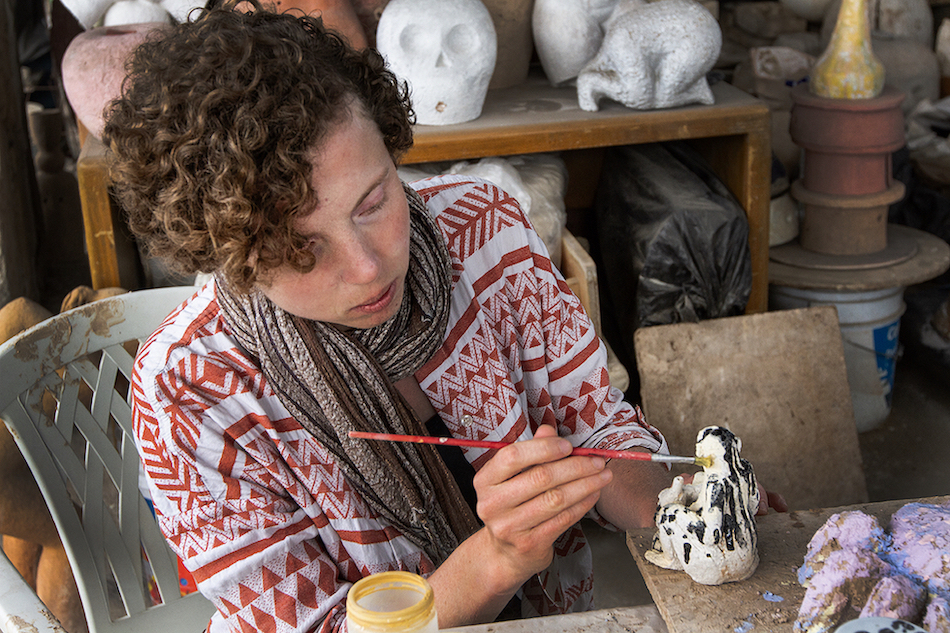
JÖRDIS HIRSCH (Germany)
Visual Artist – Graphic Art & Illustration
Click for Artist Website
What is your artistic practice?
I am working mostly in the field of graphic art and illustration, focusing primarily on the technique of screenprinting.
What has been your artistic process during the residency?
During the residency, I was developing my skills in sculpture work with clay, exploring the possibilities of traditional ceramic building techniques and engobe color production. In the theoretical part, Arquetopia offered the space to scrutinize perspectives and reflect alternatives to the Western education system which gave me the possibility to relocate my own artistic practice in the actual discourses of art theory.
Which has been the text, essay or quote that you read at Arquetopia that most influenced your practice and why?
I was deeply moved by the text, “The Chicken or the legue” by Marcy Norton and its critical reflection on the human-animal relationship. It fundamentally changed my perspective about our coexistence, which requires respectful interaction, responsibility and an open dialogue engaged at eye level between interspecies often underrepresented in observation and classification processes. In my art practice, the animal shape is one of my favorite themes which I often use fable-like to represent human nature. Arquetopia gave me the key to explore the multiplicity of dimensions in interspecies interactions.
What is next in your artistic practice after the residency?
In my future research project, I would love to focus on the human animal encounters by requesting the barriers between species and pointing out the complexity of relations between biological systems, focusing especially on the critical reflection on the tendency of humanization and mystification in the description of interspecies engagement and pointing out inequalities as well as successful cooperation processes.
Thank you so much for everything again, it was a big pleasure to participate in this residency, and I feel lastingly shaped by this experience and the warm way you have welcomed me.
At the moment, I am trying to catch up with the routines of daily life here in Berlin and looking forward to dive deeper into the texts Francisco kindly has sent to me.
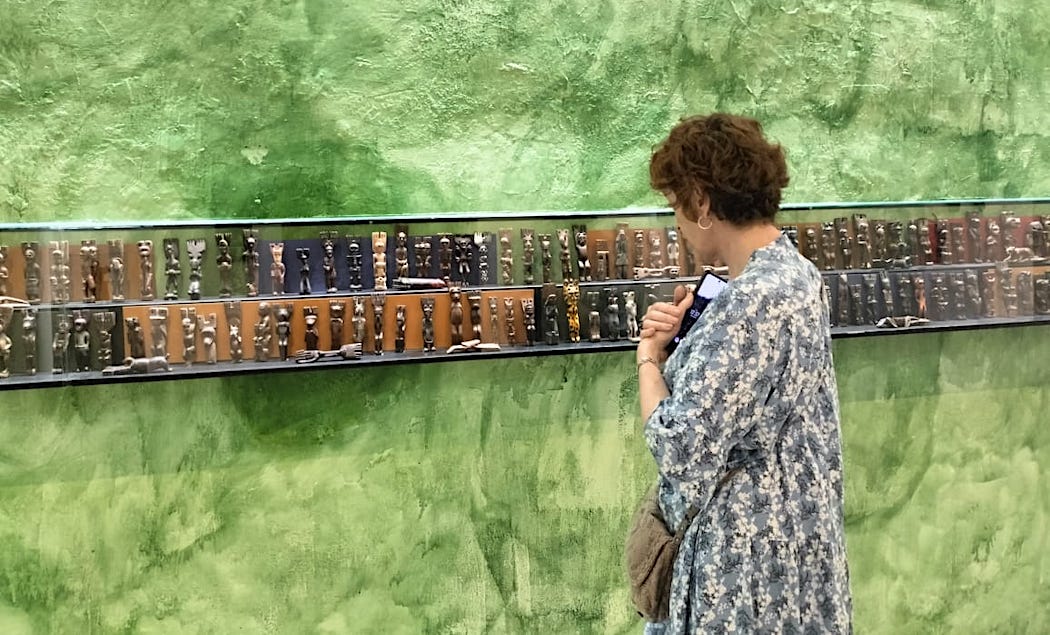
ALEJANDRA WALZER (Argentina/Spain)
Writer
What is your artistic practice?
I am experimenting with the writing of short literary forms, based on some observations made during more than a decade travelling and working in different countries in sub-Saharan Africa.
What has been your artistic process during the residency?
I came to the residency with high expectations and quite a few concerns: would I be able to write without constantly worrying about editing my texts? Would I be able to find the appropriate language and tone to express what I want to say? What finally happened was that I just started writing from day one. I was very focused but also in a loose, almost detached attitude. This was for me a fundamental factor for the process because, although it may be obvious to many artists, there are things that we don’t discover until we experience them first hand. For me, this was a very significant discovery because during my stay at Arquetopia residency I understood that I was initiating a process that was not going to have an immediate outcome, but rather it was a journey along a path that only I could walk. It is true that there were some afternoons when I wandered up and down in the garden looking for a word, a phrase, the best ending for a text, but fundamentally, I was more oriented towards the search than to the final result. I feel that the residency offered me the means, the mental and sensitive environment I needed to give shape to something I wanted to start for a long time but had been deferring.
Which has been the text, essay or quote that you read at Arquetopia that most influenced your practice and why?
For me, the weekly meetings were a crucial moment of encounter and exchange, and I say this because all the proposed readings spoke to me. They were all relevant either because they addressed intellectual, ethical or aesthetic questions that haunt my project. I felt that the texts were selected to suit my needs, and I also had the opportunity to read some authors who were new to me. I find it difficult, therefore, to select a sentence or a text out of all of them because I felt that a conversation was created in which everything was interwoven. Anyway, to answer the question, I would choose the concept of “epistemicide” raised by Ramón Grosfogel when he refers to the ways in which modernity was built on the elimination of differences (and of the different) and the construction of new hegemonies, and I would put it together with Audre Lorde’s phrase:“The Master’s Tools Will Never Dismantle the Master’s House”.For me, the critique proposed by both authors is a recognition of the dignity and hierarchy of the knowledge produced by any given community and also a call to find one's own forms of agency that do not submit to a logic imposed by power and its ways of exercising force. This resonates in a very essential way with my writing topic and also with my concerns about style.
What is next in your artistic practice after the residency?
My process is already underway; I must keep working and exploring. For now, I let myself flow, knowing that at some point the time will come when it does make sense to judge, correct, edit. When that happens, I hope to also be picturing my next writing project.
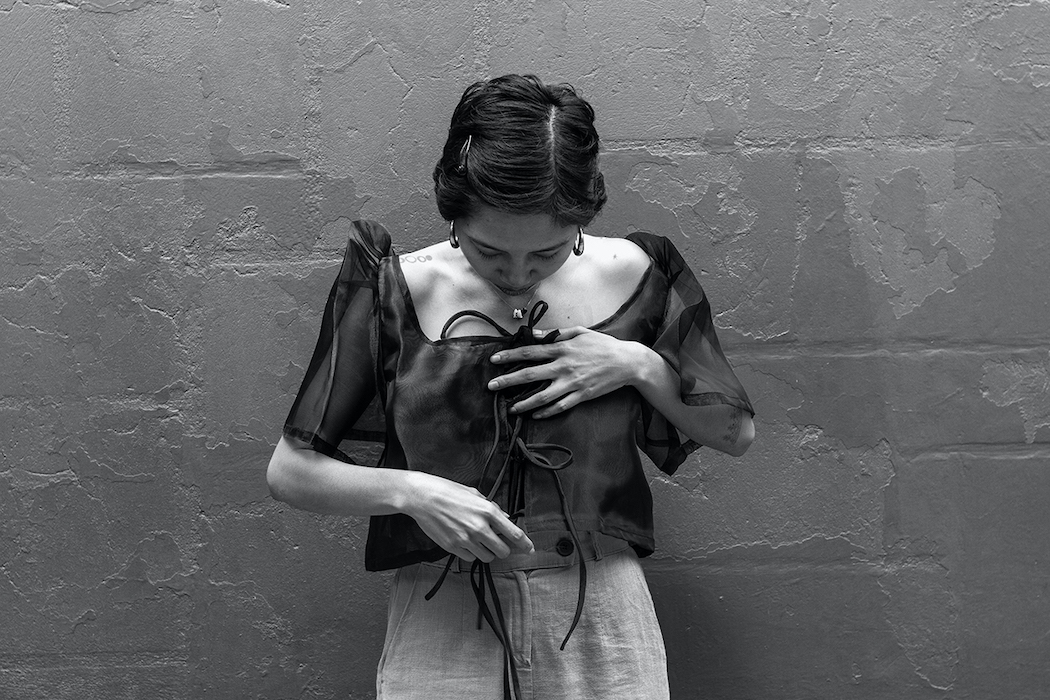
SUMMER PUERTOLLANO (Philippines)
Multidisciplinary Artist & Writer
Click for Artist Website
What is your artistic practice?
I find inspiration from spaces and stories, so I usually take my time immersing in the energy of a space and familiarize myself with the surroundings before getting to work. I like the challenge of finding materials I can work with and deepening the initial concept through the experience. I use photography and writing poetry or prose as part of the initial process; It acts as my guide for putting together the visual art work.
What has been your artistic process during the residency?
Puebla was a full sensory experience that definitely inspired my process. I found myself looking around town for thrift shops and digging through fabrics and potential materials. Taking the inspiration I gathered from our museum trips and my little adventures around Mexico, processing the inspiration through a discourse with the other resident artists or journaling after an excursion. The weekly readings and mentoring/critical discussions helped me in constructing the idea for the art work, and it made me look deeper into why I choose to do the work I do.
Which has been the text, essay or quote that you read at Arquetopia that most influenced your practice and why?
“Space lives; place is dead. Space is actualized; place is described.” This quote from a reading made me reflect on the way I make and/or consume art. It makes me question how I travel and experience what is around me. It puts me in a place of deep reflection and awareness.
What is next in your artistic practice after the residency?
I plan to continue the piece I started while I was at Arquetopia, and have it displayed at a space where I can talk about the work and residency experience. Dialogue/community has probably become the biggest lesson I learned from the residency, and through the art community I am part of back home, I was able to do a few events and an artist hangout/talk, since getting back. I plan to continue the conversation and investigation of art in personal human experience. It informs my art, and I’d like to somehow contribute to cultural identity by awakening a sense of nostalgia through the work.
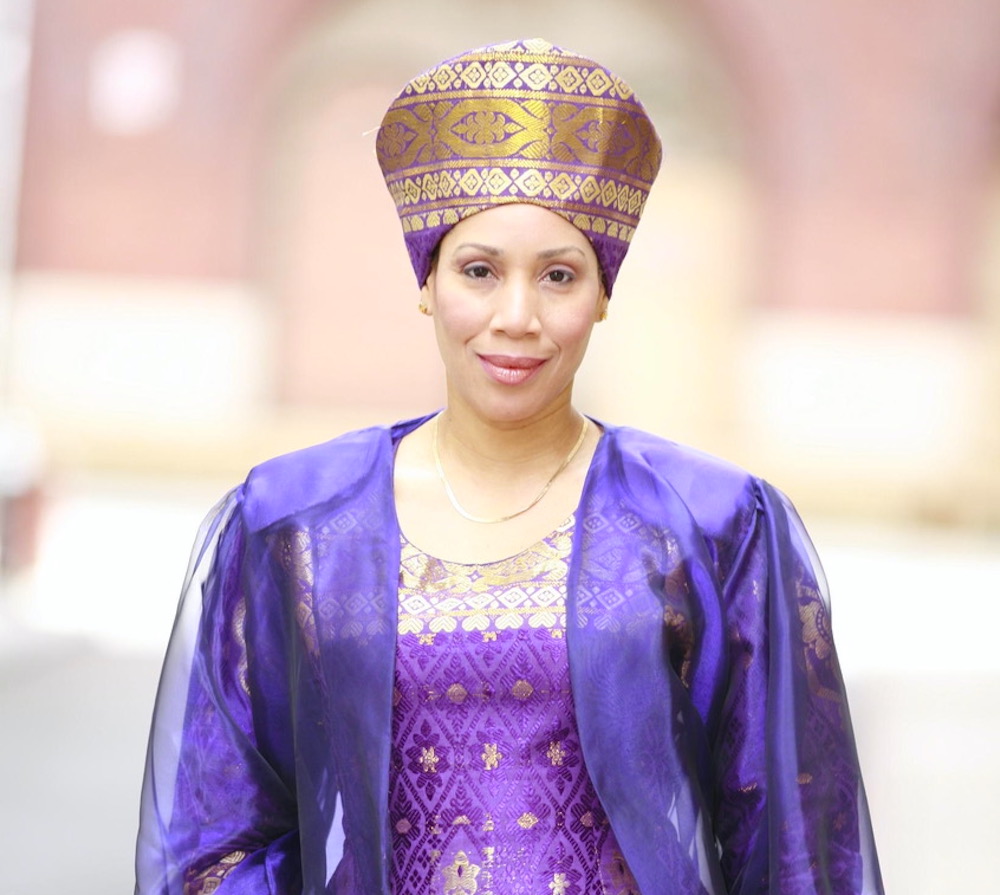
QUANDA JOHNSON (USA)
Multidisciplinary Artist & Writer
Click for Artist Website
What is your artistic practice?
Interdisciplinary Performance/Literary Art (poetry)/Visual Art (collage).
What has been your artistic process during the residency?
Researching enslaved African Mexicanas for my play, I Know My Robe Gonna Fit Me Well; I Tried It On at the Gates of Hell: Speak! Our Mothers and restructuring the first two chapters of my dissertation essay, Trauerspiel: Subject into Nonbeing.
Which has been the text, essay or quote that you read at Arquetopia that most influenced your practice and why?
I found my weekly conversations with Francisco and the Arquetopia team insightful and a source of enrichment supporting my residency research and experience. Among the many things that remain with me is our discussion of “Limpieza de sangre” and the role hegemonic ideas of blood purity or “cleanliness” played in the undergirding of systems of bondage constraining nonwhite peoples throughout the Americas, and Africans within the Iberian Peninsula. I found one of several readings provided particularly helpful, “Race, Purity, and Gender in Sixteenth-Century Spain,” from historian María Elena Martínez’s 2008 monograph Genealogical Fictions: Limpieza de Sangre, Religion, and Gender in Colonial Mexico. It was an excellent catalyst for our conversation, as it clarified my understanding of how the so-called “New World”and the people residing in this world complicated, creolized, and problematized any Euro-centered idea of “blood purity.”My research of enslaved African women in Mexico and the uniqueness of the “esclava” experience among indigenous and Afro women throughout the circum-Caribbean and Latin America provided me with valuable insight into the workings of hegemonic domination in this hemisphere and how it played out differently depending on the regions within the Americas, while always tied to economics and class.
What is next in your artistic practice after the residency?
Currently, I am completing the research, writing, and restructuring of my doctoral dissertation, Trauerspiel: Subject into Nonbeing (2022), a performance, art installation, and dissertation essay interrogating the violence of ridicule, the mob/vigilante, and hegemonically instigated violence the creeps or seeps into the safe Black space, namely, some homes of marginalized families of African descent within the Americas. I am earmarked to defend at the University of Wisconsin - Madison 2023-2024.
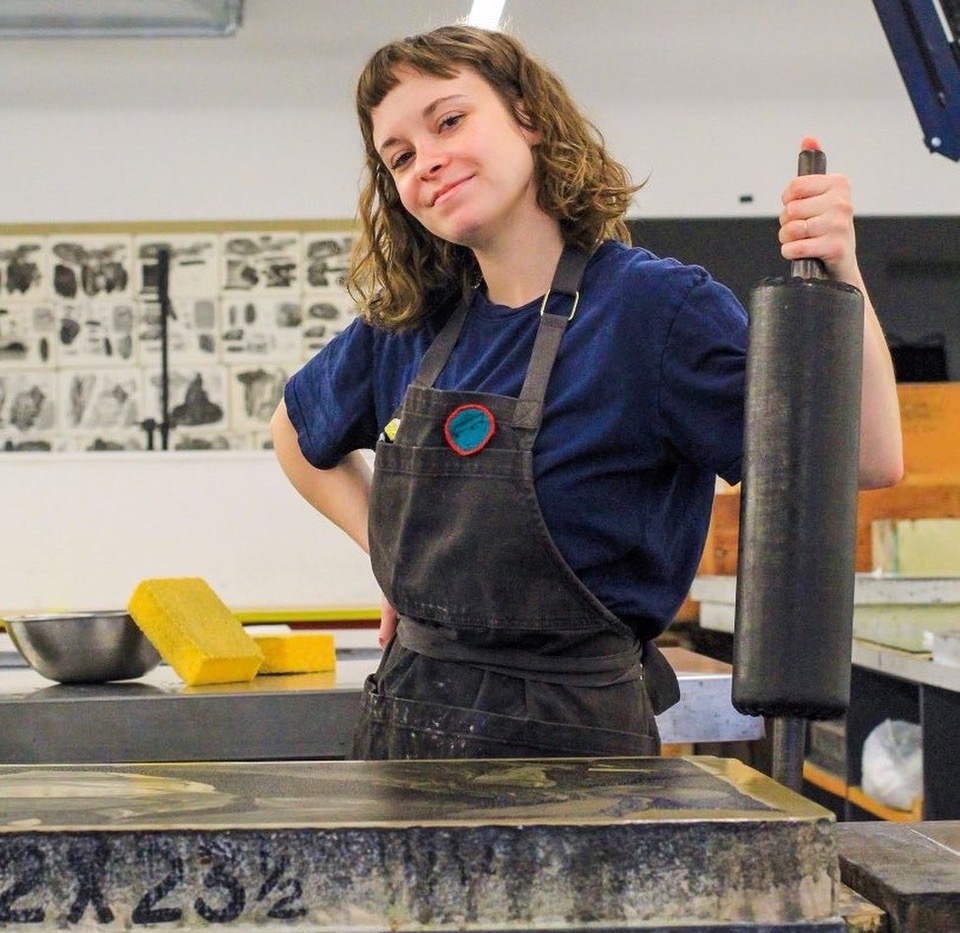
KAILEY MACKENZIE BROWN (USA)
Visual Artist – Multisciplinary
Click for Artist Website
What is your artistic practice?
I am a printmaker who also works in handmade paper, ceramics, and book arts. My practice is heavily process based, exploring the connections between material, thought, and print in relation to reimagining and reframing memories of landscapes into considered narratives.
What has been your artistic process during the residency?
I became interested in this idea of “mapping”and how to connect experiences and feelings we have with the world we see around us. I became interested in creating a map of thoughts and land together. Often when we think back to past experiences, how we are able to remember the full account is by recalling where we were at the time and the things around us. I felt creating work at Arquetopia in this mindset directly related to what my residency focused on: creating Natural Silkscreen Ink. My final project was a ’zine titled, “Void Mapping”,which contained my thoughts during my time in Oaxaca, silkscreen printed imagery using natural inks, and printed on my handmade cotton paper.
Which has been the text, essay or quote that you read at Arquetopia that most influenced your practice and why?
My favorite was Performing the Fantasy of Mobility While Enacting the Violence of Immobility by Francisco Guevara. I often think about the power of mobility in my work as someone who has often felt the effects of immobility in her life. I really enjoyed how it covered the systems of power that decide the rates of mobility and the history of why this is important to think about in our daily lives. I also think that my focus of “mapping”and “void”during the residency was greatly influenced by this work. One of my favorite quotes from the article is: “The capacity to move implies the condition of freedom, the ability to freely move through time and space. However, mobility is never just the fact of movement, it is a representation that carries several burdens, including how it is experienced and its effects.”
What is next in your artistic practice after the residency?
I am currently rethinking my visual practice in response to my residency. I am taking some time to write, sketch, and rethink how I can continue these thoughts I had during the residency so they can continue to grow and challenge my previous practice, beliefs, and systems of making.
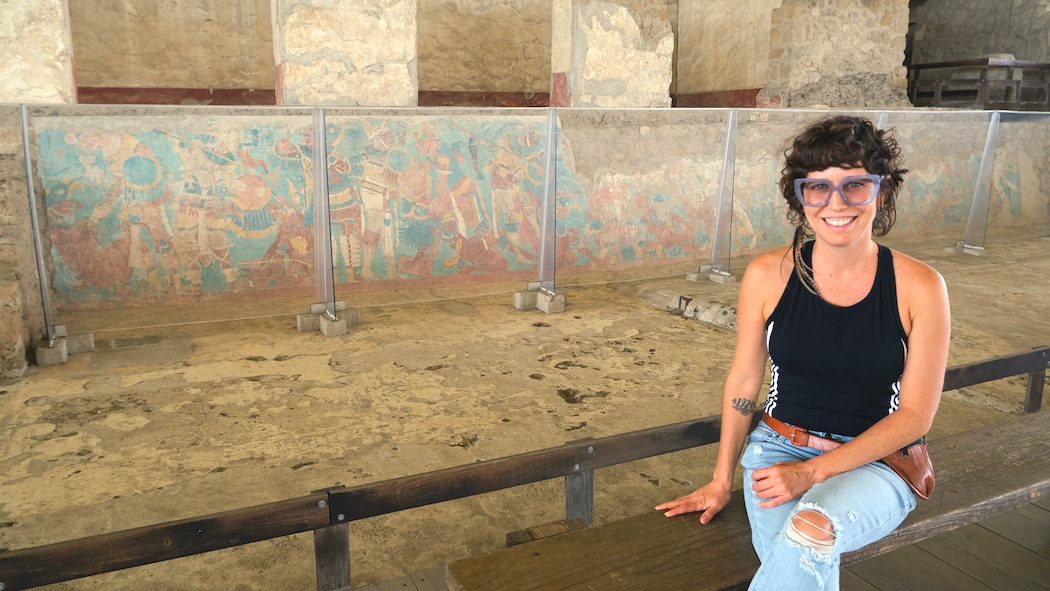
SOFÍA MALDONADO (Puerto Rico)
Visual Artist – Painting
Click for Artist Website
What is your artistic practice?
I am a painter, with a strong focus in murals and public art (for the last 20 years of my career), but since 2017, I’ve been experimenting with movement, photography and digital art. This year I’ve been revisiting my relationship with ceramics and natural pigments; also, I've started walking in nature as a meditative practice for the project of La Ninfaaa, deepening her simbiosis with water.
What has been your artistic process during the residency?
During this one-month residency in Arquetopia (2023), I was very open to expanding my horizons in art history and mesoamerican culture; while studying with Prof. Lara (art restorer) about natural pigments and pre-Columbian techniques in painting.
My process started since my arrival in Mexico. I stayed four days in Ciudad de Mexico with my mother. We visited the Templo Mayor, the Colegio San Ildefonso, the Museum of Arqueologia, and a diversity of spaces to get an idea of the local culture, prior to arriving in Puebla. Gotta say, it was the most fun mother-daughter adventure, it also set the tone to keep expanding on my self awareness as a latina artist. I believe that life sets small hints for you to keep self discovering your true self along the different experiences, conversations and encounters throughout your days. It’s only with silence and contemplation that we get to understand that language.
Upon my arrival to Arquetopia, I had already set my eyes on the Cacaxtla archaeological site and the “Mayan blue”. On our first group meeting, Francisco was kind enough to let me borrow a book on the history of Cacaxtla, which allowed me to dive deep into the subject. That same week, I had my meeting with Prof. Lara, and she noticed I had a genuine interest in “fresco painting”.
Most of my time during the residency was spent reading, preparing my project with natural pigments; where you need much patience, it’s a slow process to prepare each surface and let them dry properly. The exchange of ideas and traveling experiences with the other residents was crucial for me, because I enjoy bonding with female artists in search of their own truth.
Eventually, I made it to the Cacaxtla archaeological site, at Tlaxcala, on a “combi” (public transportation), that added another layer to my interaction with locals, their mobility and interaction with the authorities. Another subject that I dived into was their culinary diversity, either by buying street food (tamales or pastries around the corner) or just focusing my attention on the different dishes that were served by the in-house chef.
Aquetopia was like being guided via a shamanic trance, where I remained non-resistant to change of perspective, new visions and ready to deconstruct in order to reconstruct my beliefs systems in art, culture, and Westernized history.
Which has been the text, essay or quote that you read at Arquetopia that most influenced your practice and why?
Well, we dive deep from witch hunt, to the idea of the “Oriente”, domesticity, to America’s colonization history, but where I got the most poetic was on the trafficking of natural dyes:
“Indigo, poético como el mar, color turbio como el voyeurismo de esclavos que cantan y baten bajo el mando de soldados vestidos de azul, el color de la guerra, de los policías y marinos. Hombres de cuello azul, hoy se fajan a diario, bajo el mismo sol que presenció la opresión del tráfico de especies, color y extorsión. Travesías oceánicas – cadáveres de esclavos en alta mar – rutas de conquistas, gritos, sed de oro y plata bajo un cielo azul. Color que penetra almas, cuerpos y generaciones.” — La Ninfaaa
What is next in your artistic practice after the residency?
This past summer, I moved to the southeast side of Puerto Rico. It’s been a refreshing change! Living in a small rural town allows me to reconnect with my ancestral knowledge by walking along the shores of the Caribbean Sea, and interacting with local farmers/fishermen. Here, I am developing the next project of La Ninfaaa, a multilayer proposal that incorporates silent contemplation, natural pigments, farming, ceramics and painting. Its end result will be my next solo exhibition and first graphic novel, an artist book!
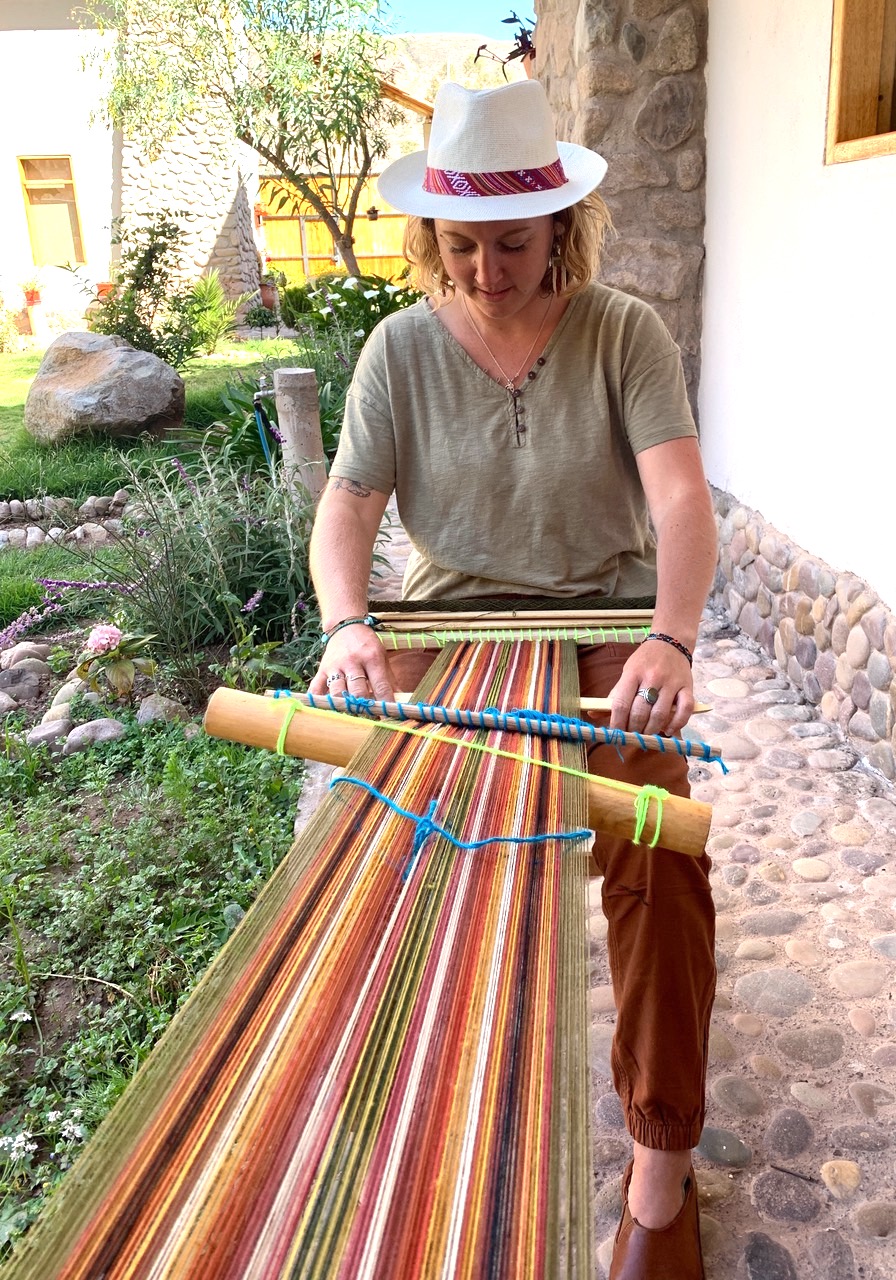
ANNA STUFFELBEAM (USA)
Visual Artist – Textiles
What is your artistic practice?
I work with natural pigments and fibers to create usable textiles and art pieces. For me it is about the experience of working with the materials and knowing the whole story of where they come from, participating in the process of transformation from raw wool and plant pigments to woven works of imagery and wearable fabrics. It is a process and shared experience. The imagery and textures are inspired by experiences in nature and my photography capturing those moments.
What has been your artistic process during the residency?
During the residency I was focused on learning from the experience and documenting the process through a series of mini woven and knit samples and a sample book of colors. During the three weeks focused on Andean weaving, I worked on weaving samples exploring different techniques and ideas inspired by experiences throughout the residency. I also expanded on the sample idea through knitting a mini sample in the same color sequence but with different textures. For the three weeks focused on Natural Pigments I worked on documenting every plant and every color we created. Using the dye bath I painted plant portraits and took color samples on paper and fabric along with the yarn. I developed a more thorough and consistent practice of documenting and keeping track of the colors and the process of using natural pigments. This residency gave me the opportunity to really develop my practice and realize it is the whole experience of the process that I am passionate about, not just the end product. It was truly a gift to have time dedicated to experiencing my process, allowing for change and discovery.
Which has been the text, essay or quote that you read at Arquetopia that most influenced your practice and why?
Many readings influenced a shift in my perspective of society, the art world and my work within these structures and sparked my questioning what narrative I want to be a part of:
1) The Structure of Knowledge in Westernized Universities Epistemic Racism/Sexism and the Four Genocides/Epistemicides of the Long 16th Century – Ramón Grosfoguel
2) Imagined Communities Reflections on the Origin and Spread of Nationalism, – Benedict Anderson
3) Landscape and Power – W.T.J. Mitchell
4) Racecraft, The Soul of Inequality in American Life – Karen E. Fields and Barbara J. Fields
What is next in your artistic practice after the residency?
There were many wonderful discussions that helped broaden my perspective and question ideas about belonging to a specific culture or distinct identity and what it means to be qualified to teach a skill. I have felt called to teach and share my passion for creating with textiles, but have been hesitant, like I am waiting for permission. These readings, discussions and this experience has helped me let go of that hesitation allowing me to take this next step into sharing my practice.
Thank you for all your support throughout this experience. I really appreciate how we were all well cared for and welcomed into the Arquetopia experience.
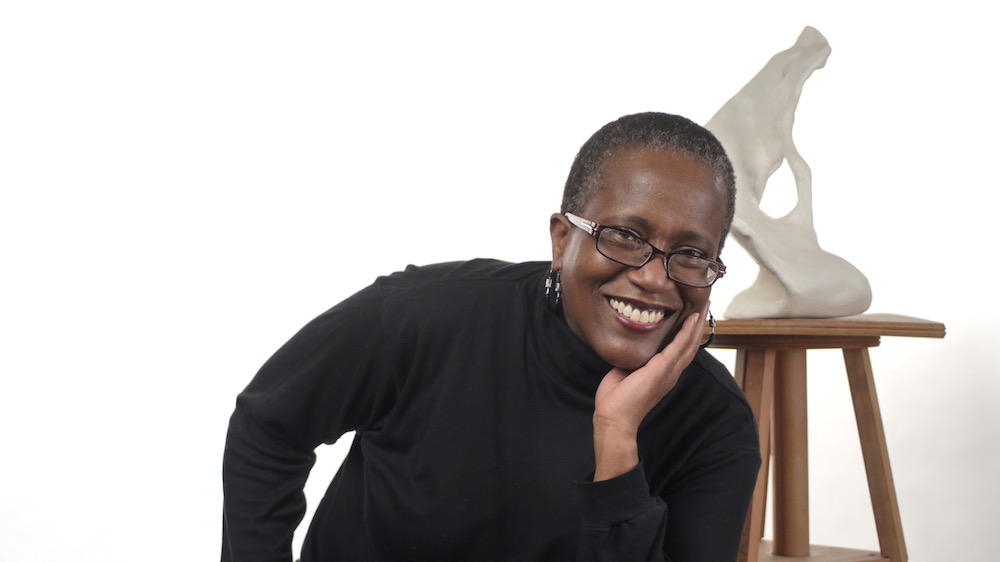
JUAREZ HAWKINS (USA)
Visual Artist – Ceramics
Click for Artist Website
What is your artistic practice?
I am a clay artist, educator, and curator.
What has been your artistic process during the residency?
Thoughts on process: Just before the residency, I visited several museums in Mexico City. I paid attention to which forms I was drawn to, what spoke to me. I researched them at the residency, delving into their functions and symbolism. I experimented with ways to tell my story—and theirs. I tried out multiple iterations of a single idea while getting acquainted with the local clay, a living, organic body with a mind of its own.
At my instructor’s urging, I examined different deities and symbols, particularly images of women. I experimented with a post-fertility figure for women who are post-fertile. What creative powers might they carry? The open-bellied works evolved into the two-faced Janice (a play on Janus) figures, also referencing Yoruba goddesses Oshun and Yemaya.
I became engaged with the little female figures from Tlatilco. In my research, I learned that they were usually buried with women. These full-figured pieces became the inspiration for an activation. As part of a libation ritual, I buried unfired clay figures along the site of a Puebla slave market in honor of the Africans who were sold there for their labor. Over time, the rains will break down the clay and germinate the chamomile seeds inside, lending healing to the narrative. This is an organic, earthy spin on the nkisi nkondi figures of the Kongo, which are riddled with nails to release the power contained in their abdomens.
Which has been the text, essay or quote that you read at Arquetopia that most influenced your practice and why?
The readings on urban slavery and the Puebla markets resonated with me the most. I got a deeper understanding of the profits at stake, the credit system, the role of the church, all the moving parts. This gave me insight into aspects of the African diaspora that I was unaware of. This feeds into my Ifani’s Tribe narrative, which tells the story of an African girl searching for kinfolk scattered by slave raids.
What is next in your artistic practice after the residency?
This fall, I am exhibiting with Sapphire and Crystals, a collective of African American women artists, in a show called “Freedom’s Muse”. The show opens October 13th at the David and Reva Logan Center for the Arts in Chicago. I am also curating two exhibitions: the first is a Climate Justice and Arts Exhibition, opening October 21st at Douglass Park Fieldhouse; the second is a portrait exhibition by artist and activist Irina Zadov, entitled “What Time Is It?” opening November 10th at the Chicago Art Department.
Once back in the studio, I look forward to revisiting the clay work I made in Puebla, expanding the scale and playing with color. I have ideas for a host figure as well; I started one in Puebla, but I had to leave it because it didn’t dry in time. I have also started work on a relief print series based on this work.
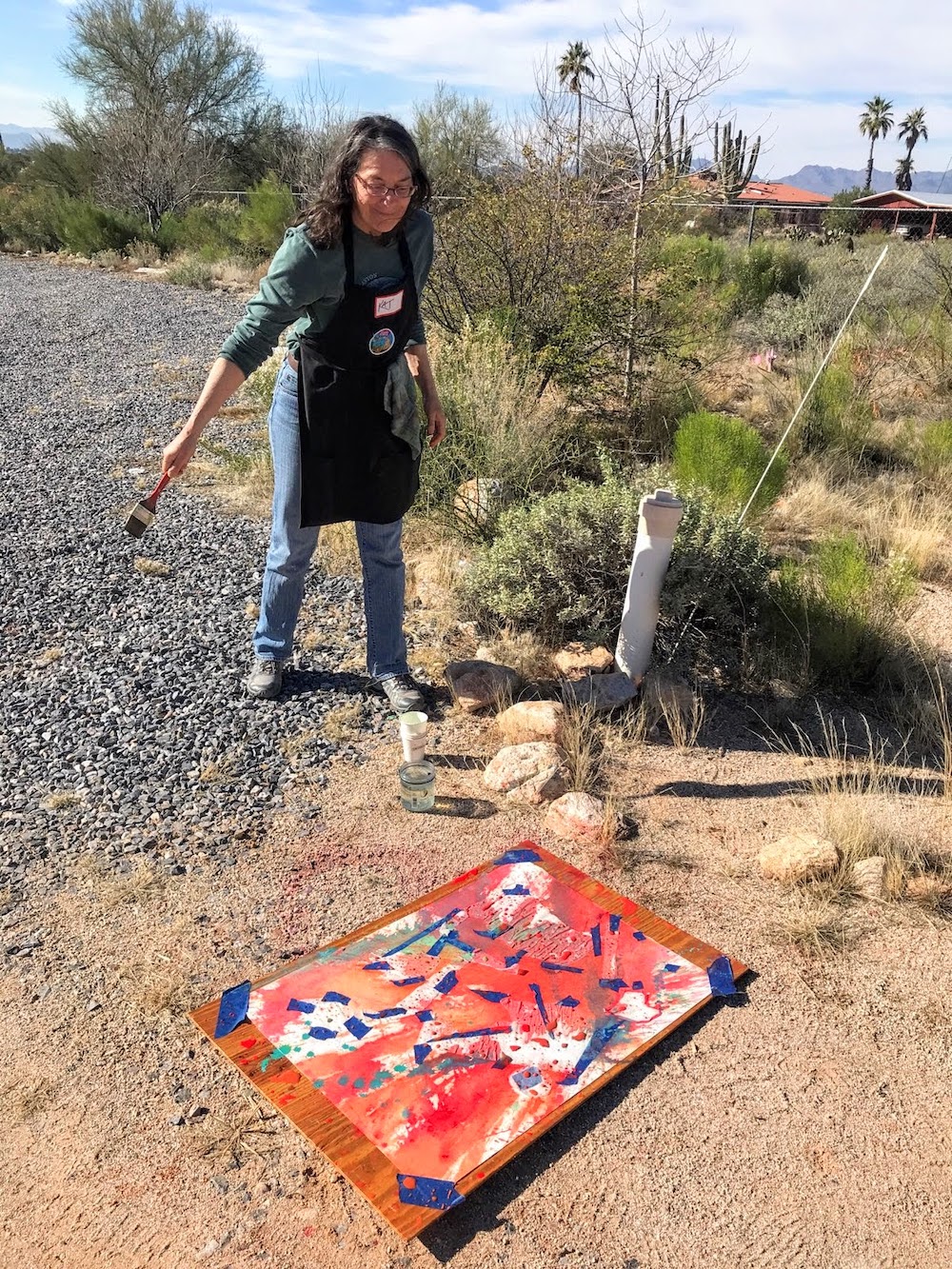
KAT MANTON-JONES (USA)
Visual Artist – Multimedia
Click for Artist Website
What is your artistic practice?
Watercolor Painter and Illustrated Sketchbook Journalist.
What has been your artistic process during the residency?
The sensory experiences of staying in Peru for five weeks and the weekly readings and critical discussions informed my illustrated journal and my painting process. Free from certain daily responsibilities and routines allowed me to walk, think, and sit with what I was experiencing and learning. The luxury of uninterrupted blocks of time to draw, paint, and research permitted me a flow of creativity and intuitive painting that I don’t typically enjoy. Although the expectations for the readings did not include incorporating those themes in my artwork, I was reflecting so deeply about them that related concepts and imagery appeared regardless.
Which has been the text, essay or quote that you read at Arquetopia that most influenced your practice and why?
Initially, I was focused on questions about sacred sites and practices. Through the readings Francisco provided based on our discussions, my focus expanded to include the roles of:
1) Sacred Sites – “Sacred Geography in the Nochixtlan Valley”
2) Landscape painting in colonialism – “Landscape & Power”
3) White middle-class feminist practices in oppression and inequality – “A Cyborg Manifesto”
4) Christian missions in imperialism, nationalism, and politics – “Manifest Domesticity”
Quote: “Art does not present reality, the practice of art presents meaning.” – Francisco Guevara
What is next in your artistic practice after the residency?
I made a list of all the ideas sparked by the residency and how I can carry the ideas and energy forward into my practice. Given the nature of finite time and a non-cyborg, human-bodied artist’s limitations, I will only accomplish a fraction of the list. As such, I present the highlights of some of the current and future projects on my mind:
Action: Currently eating more fresh foods and spending more time in my studio.
Art: Fractured Series – Deconstructing maps; endangered species; and cyborg figures and portraits. Look for another venue for showing art, one where a broader scope of inclusivity is represented.
Investigation: Infrastructure and labor required for a game of golf at a Tucson resort. Visit the SEIU Tucson office to learn more about local projects. Disrupt the “perfect” landscape painting genre by interrupting complacent, pretty pictures. Insert ironic and/or missing elements such as natural disaster, labor, infrastructure, and resource extraction.
Reading: Literature shared by Francisco as an ongoing practice of study. Feminist Science Fiction.
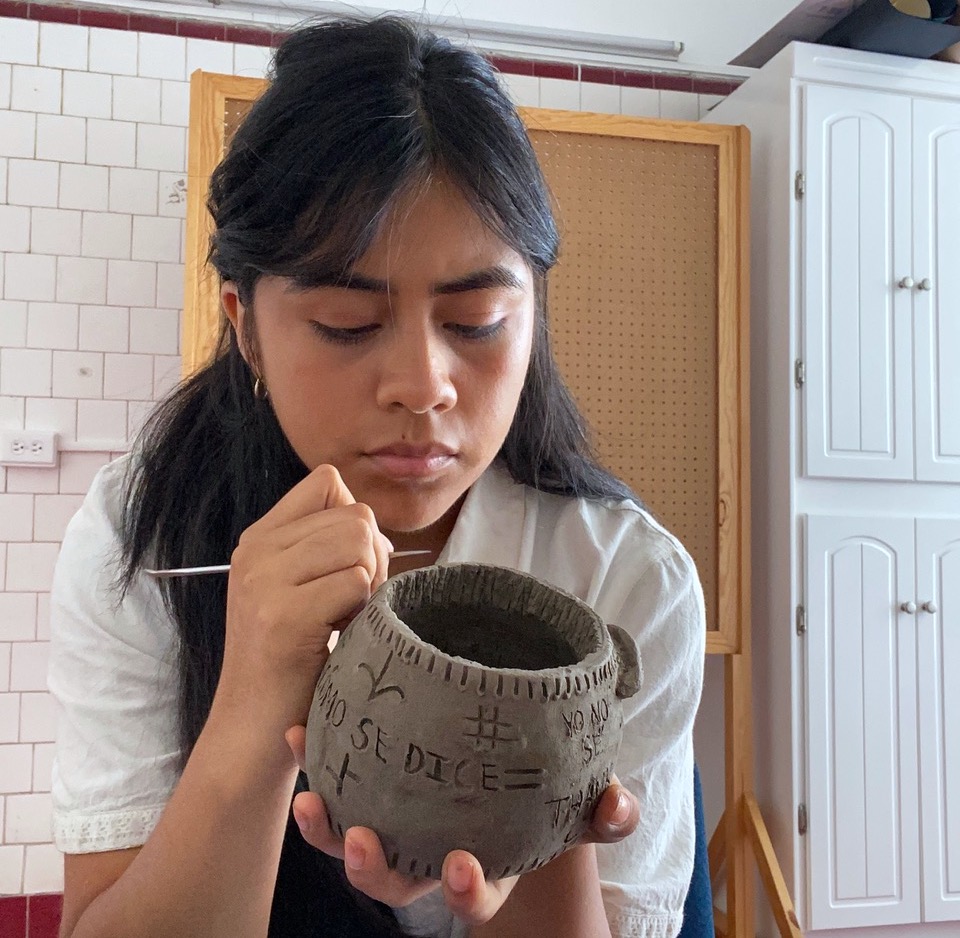
MONSERRAT TLAHUEL-FLORES (USA)
Visual Artist – Ceramics
What is your artistic practice?
Ceramics.
What has been your artistic process during the residency?
My artistic process during the residency was definitely something unexpected. I was inspired by the conversations I had with the directors, my teachers, and many different museums with pieces that I would have only been able to experience in person. I took little crumbs of other ceramics pieces I saw, feelings I had, conversations that touched me and different experiences in my past. I focused on the portrayal of different emotions through facial expressions all throughout my pieces because as an artist, at times, it feels as if the only way to express pent up emotions is by creating. Weather it be through tears, late at night at the studio or watching movies and singing to songs at 1:00 AM as you work, each and every piece expresses something distinct and memorable.
Which has been the text, essay or quote that you read at Arquetopia that most influenced your practice and why?
Throughout my residency, I was given the opportunity to read about an array of topics ranging from the feminist movement to toxic tourism culture. Through these many impactful and fascinating reading the one that stood out to me the most was a reading titled, “The Uses of Anger” by Audre Lorde. This text has stuck with me, and I have been able to share with my friends and family who have also gone through racial prejudice. This text as a whole truly spoke to me because as a woman, anger is an “ugly” emotion to have. I was taught to believe that anger is what you feel when you are bitter, resentful, and unable to move forward. I was conditioned into believing that my anger towards my own experiences with racial prejudice was a sign of my own lack of strength as a proud Mexican woman. This text not only expressed everything that I had been feeling for many years but embraced anger and all of its “ugliness”. Lorde quotes, “Anger is an appropriate reaction to racist attitudes, as is fury when the actions arising from those attitudes do not change”. I used these ideas, and feelings I had in creating my piece, titled, ANGRY.
What is next in your artistic practice after the residency?
After my residency, I am planning on continuing my understanding of the beautiful elements of natural clay making. I plan on continuing on the path of discovery by honing in on my skills by taking more ceramics classes, focusing on different techniques with the utilization of the wheel. I also plan on making a short film inspired by my pieces and taking what I have learned into different mediums.
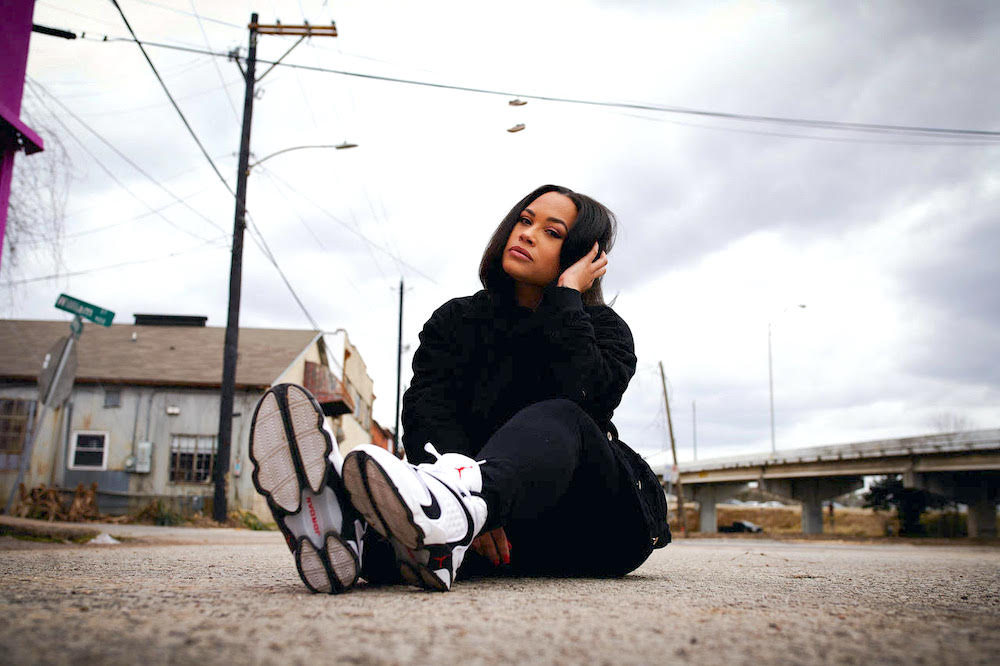
KAIMA AKARUE (USA)
Visual Artist – Multimedia
What is your artistic practice?
I am a multimedia artist who currently works predominantly in collage.
What has been your artistic process during the residency?
I used the residency as an incubation of thought and reflection. Through guided readings and research, I fleshed out themes of personal practice, motivation and purpose, discovering ways in which my mental debris informs my work and practice. I collected reference photos, documented the environment and journaled.
Which has been the text, essay or quote that you read at Arquetopia that most influenced your practice and why?
“Sister Outsider” by Audre Lorde was influential because I felt seen. It provided space for me to explore thoughts of differences and further substantiate the importance of identity investigation in my work.
What is next in your artistic practice after the residency?
I will continue school, working on my second year in the MFA program at the University of Houston. I also will be an artist-in-residence at the Harris County Cultural Arts Center, where I plan to really cultivate an arena for community to thrive.
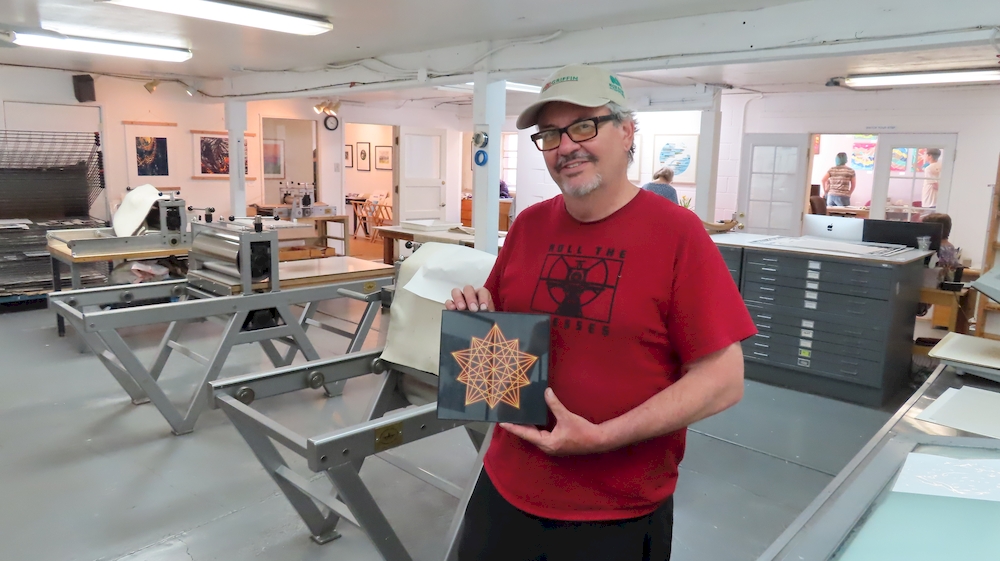
MIKE KIMBALL (USA)
Visual Artist – Printmaking
Click for Artist Website
What is your artistic practice?
I am a printmaker, and I print in all mediums, with a focus on screen printing and block printing.
What has been your artistic process during the residency?
During the residency, I worked on multiple-color screen prints based on ancient Aztec codexes, and Islamic design elements. Though not planned in advance, the subjects grew out of the readings and discussions.
Which has been the text, essay or quote that you read at Arquetopia that most influenced your practice and why?
For me, there were really two texts that interested me greatly and were good topics for consideration. The first was the subject of eroticism and empire in French Orientalist painting, and the second was the history and role of chocolate in colonial Mexico and Spain. Both very interesting essays that brought to light a number of ideas I had not previously considered. Im sure those ideas will somehow percolate into my practice in the future.
What is next in your artistic practice after the residency?
I will continue to focus on my printmaking, both as an artist and a teacher.
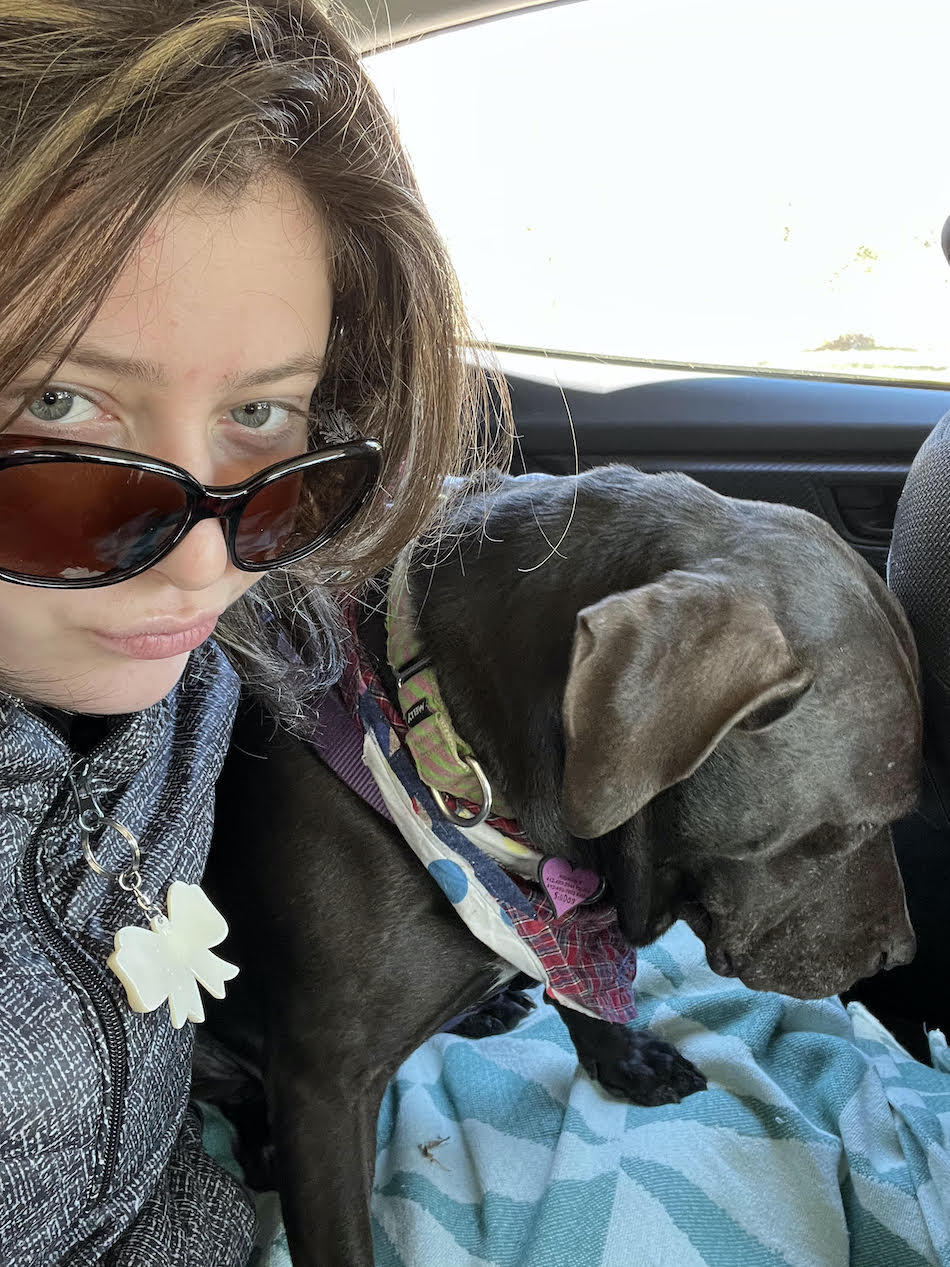
JULIA KUNZE (USA)
Visual Artist – Multimedia
Click for Artist Website
What is your artistic practice?
My practice ranges from elaborate textiles, giant ceramic charms bracelets, coptic stitch bookmaking, and most recently large, layered colored pencil drawings.
On what projects are you currently working?
Recently, I have been inspired by my study of expressive arts at The European Graduate School. I have been trying to make work that reflects what I desire most by layering images and words that are stuck in my head. They fill the page in a paradox of strangeness and charm. The avenues that I have chosen to do that are usually large drawings, but I am interested in incorporating my knowledge of textiles and fibers into this exploration as well.
What is the most relevant conversation that you remember having during your residency at Arquetopia?
I had a conversation about textiles based on a text I was given to read that altered my relationship with the medium. Francisco and I considered textiles as providing the verbs for thinking and communicating. Humans spin and piece together the world, and everything is connected by a thread. The history of female labor in the household, factory and childhood was striking in this conversation, for I understood the deep history and power of the work I was doing. Without my conscious consideration, I was contributing to an important history. This helped me to realize that my work springs into existence with meaning inescapable in it already, without a single personal thought. There is a woven history and I am taking the thread and continuing that story.
What changed after your residency at Arquetopia?
My work as a collaborator in an art clothing project came to an end, and my individual practice has begun to develop. I have started a masters program in the expressive arts, learning to facilitate art based workshops to foster growth and healing for groups or individuals. I am looking inward during this process as well, finding the materials and methods of expression that help me to understand my facing of the world, as well as to understand the space between me and my art.
How are artist residencies important to the artistic practice?
Residencies give the artist a space of permission to explore their work in a different, more supportive context. I believe that there is a “tapping in” when it comes to creating beauty or importance, and sometimes a push into that liminal space is integral. That is the push that a residency provides. This space is then tended to with materials, education, and conversation.
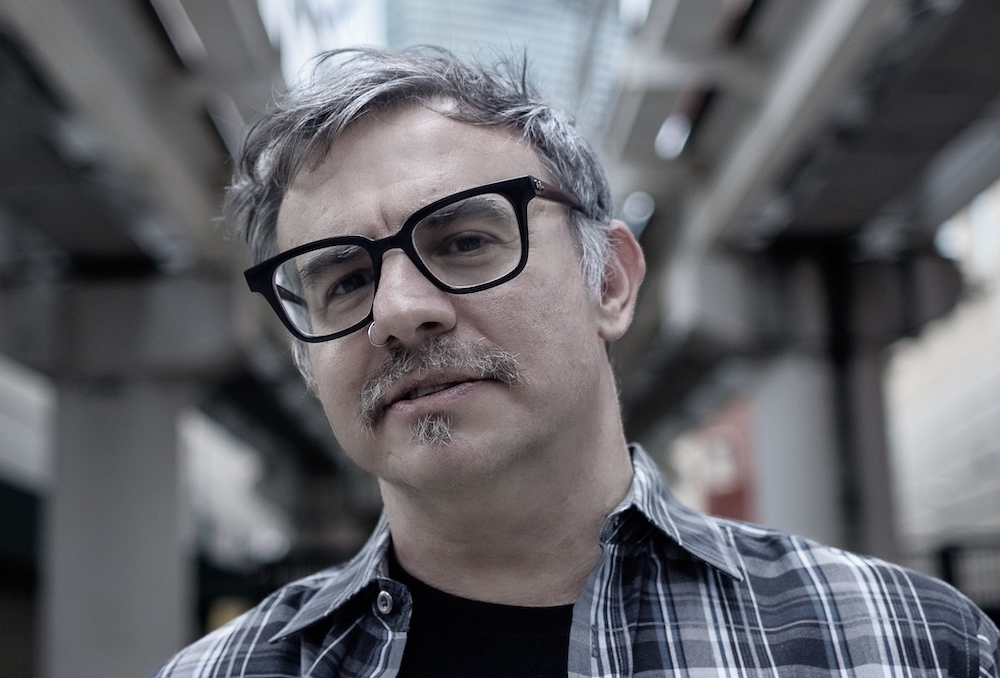
GASTÓN VIRKEL (Argentina/USA)
Writer
What is your artistic practice?
I’m a writer and screenwriter.
On what projects are you currently working?
I’m still working on the novel I worked on during the Oaxaca residency — the story of a family from Miami that is told in two days, 30 years apart. I am also working on a script about the Malvinas war and promoting my recently published novel, Neurosis Miami.
What is the most relevant conversation that you remember having during your residency at Arquetopia?
Ouch. Many. The most relevant for me was one I had with Francisco and Nayeli about the “symbolic assets” of the story I was working on. I want to mention many others with my fellow residents about art and life. And some memorable chats about mezcal.
What changed after your residency at Arquetopia?
First of all, I fell in love with Oaxaca. The mountains, the city, the food, the people. Then, it set the bar high regarding what I can accomplish when focusing on one project (something that is more and more complicated nowadays). I feel that chaos is part of my work, improvisation. Arquetopia impacted my practice, revealing the strength of some pause and the use of some topical approach that takes the themes of the fiction to another level.
How are artist residencies important to the artistic practice?
It allows artists to switch off some noise from daily life and focus on the practice. As well as put your art on the spot to be observed from the perspectives of artists from other disciplines. I have trusted readers (people I respect who give honest feedback about my projects). But they are primarily writers. That’s how it is mainly done. The residencies facilitate different approaches in a unique environment.
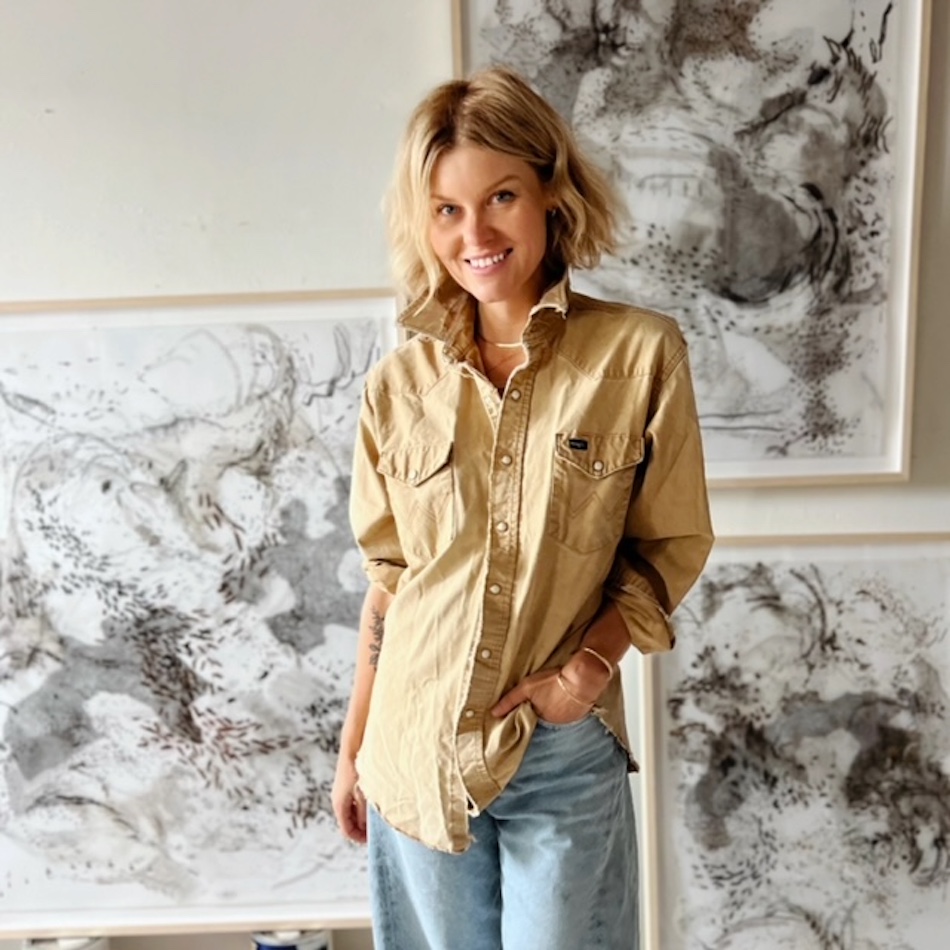
SARAH DELANEY (Canada)
Visual Artist – Painting
Click for Artist Website
What is your artistic practice?
I'm a painter.
On what projects are you currently working?
In my practice, I work in series, which consist of bodies of work centred around a specific theme and way of working.
Upon returning to Canada, I presented my most recent work in a show titled, “Shores of Lost Islands.” It consists of my own fanatical versions of maps that are told from a subjective point of view, observing the ever changing rhythms of the world. They aim to highlight the function of interpretation. Historic events often hold Eurocentric views, as they are told through the lens of the European ship captains and naturalists. These stories have shaped our story of history, giving power to the explorers who colonized the West.
I am in the initial all stages of creating a new body of paintings. I am testing out ideas and experimenting in the studio. This work will be tied to color and collage/quilting, and will (hopefully) implement some of the dyed wool that I produced in Teotitlán.
What is the most relevant conversation that you remember having during your residency at Arquetopia?
I was introduced to the power of interruption. Interruption can create, challenge, and change. It details progress, it impedes policy. Interruption is what makes history.
Something as small as interrupting someone mid-sentence, takes away their train of thought, their voice, their spotlight, and their power.
Just imagine what interruption on a larger scale can achieve.
What changed after your residency at Arquetopia?
What first seemed like we were speaking about art — my own art’s shadow, it’s function beyond my studio walls, its ability to have (positive or negative) effects, and the alternative readings outside of the context that I desired for it — became the same bullet points that would perform as clues in deciphering the broader systems in which we live and the structures that class, culture, nations, etc., are built on.
A similar way that understanding historical context and asking questions to extract meaning from art, can be applied to the processes in which the world functions.
I am a very intuitive and ethical-driven individual, and as such, my intuition questions the systems that it is faced with. By dissecting the history of our systems, we can understand their intention and meaning, thus providing a reason to believe in it. This subject interests me and fills my curiosity. That same ethically-guided heart wants to believe that the standards and rules that govern our lives were put in place to help each other and better our global society.
How are artist residencies important to the artistic practice?
For me, they are a form of continued education and an opportunity to naturally fall into a space where new perspectives arise. This can lead to growth, both personally and in my art practice.
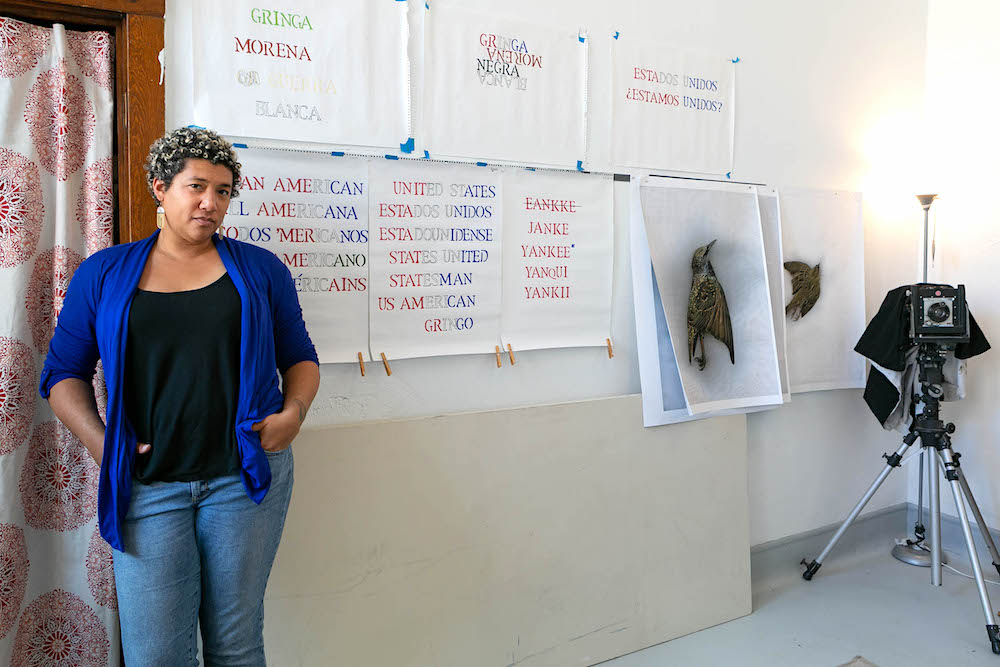
AZIZA MURRAY (USA)
Visual Artist – Photography
Click for Artist Website
What is your artistic practice?
I’m a visual artist working primarily with photography.
On what projects are you currently working?
I am currently working on a text project I began at Arquetopia Peru. I am diverting from photography with this work and using letter stencils to play with the language we (US Americans) use to identify ourselves. I am also picking up where I left off on a project called Ars Moriendi, which is about grief and mourning.
What is the most relevant conversation that you remember having during your residency at Arquetopia?
I don’t think I can pinpoint just one conversation that impacted me during my residency. Talking to fellow resident Kathryn Walton and Arquetopia staff member Rocio about the differences between our cultures – mine being US American, Kathryn’s being Australian and Rocio’s being Peruvian– was always interesting, enlightening and often funny. My conversations with Francisco were validating of my experiences as someone who identifies as female and brown, as well as of my experiences as an academic who is often frustrated by academia.
What changed after your residency at Arquetopia?
I’m not sure what has changed concretely since the residency, but I was amazed at how comfortable and connected to the space of Urubamba I felt while I was there. I was genuinely sad to leave, and the feeling of alienation upon returning to my home base in the US was something I had never experienced. To be able to be introduced to Peru through Arquetopia was a gift, and I am still processing my time there. Having the time to think about my art and my place in different art worlds was invaluable, and being in a country I had never been to was incredibly stimulating, especially after the last few years being homebound and US-bound because of COVID.
How are artist residencies important to the artistic practice?
Residencies where you feel taken care of and have some reprieve from the usual grind of life are essential for our survival as artists in an increasingly difficult world.
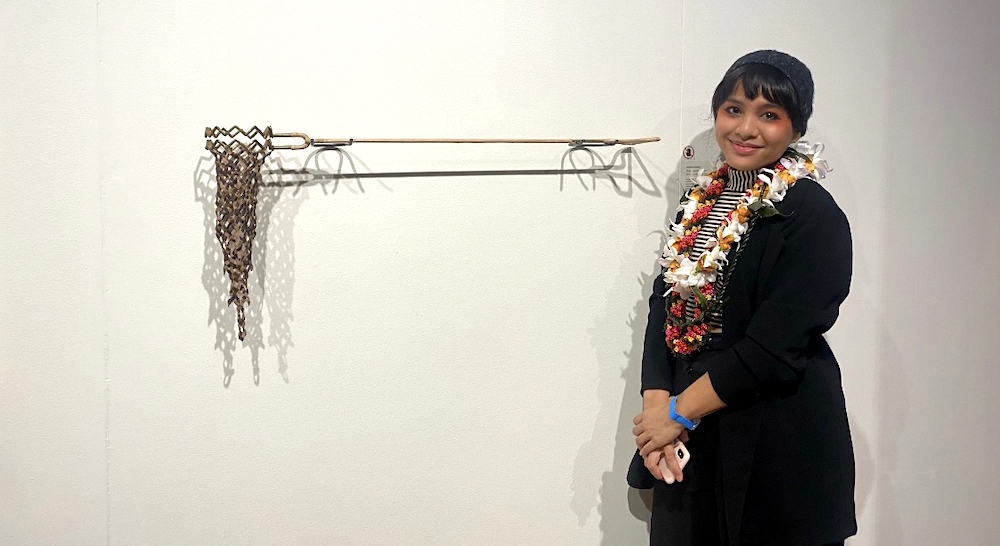
JUVANA SOLIVEN (USA)
Visual Artist – Multimedia
Click for Artist Website
What is your artistic practice?
I’m a sculptor working predominantly in metals and fiber, creating objects and installations. My work subverts and utilizes object languages to speak to issues regarding intimacy, labor, and women’s positionality within the patriarchal system.
On what projects are you currently working?
The projects I’m developing are extensions of work regarding the ways a woman’s body and identity may be weaponized, addressing themes of gender, racial, and social inequities. Technical processes explored are craft-oriented, considering labor and process as meditative actions that unpack histories of abuse and injustice. The mixture of metal and fiber in my work play on the dynamics between hard and soft and the assumptions of strength and fragility attributed. Technical processes include bead weaving, sewing, metalsmithing, enameling, and traditional throw-net sewing. These projects are meant to exhibit in two upcoming solo exhibitions in Boulder, Colorado, USA and Kyoto, Japan.
What is the most relevant conversation that you remember having during your residency at Arquetopia?
We discussed Audre Lorde’s “Uses of Anger” and Linda Bolton’s “Facing the Other”, regarding the problem of the universal, and to confront the reality of our differences to combat our erasure.
What changed after your residency at Arquetopia?
The readings and discussions I had during this residency provided some tools and approaches for mitigating and navigating critical discourse among my students. Learning techniques on the backstrap loom was an absolute privilege, and I am continuing to learn new weaving techniques both on and off the loom to explore aspects of labor and material processes connected to culture and gender performance.
How are artist residencies important to the artistic practice?
I always find the conversations I have in these settings where you get to meet a variety of people at different places in their career have always stuck with me more than any technique or class. I can make art in any room with some tools and a flat surface; that's not the point of a residency to me. It’s human connection, and the dedicated time and space of a residency that allow for contemplation, research, conversation, and exchange that create new understandings and new confusions.
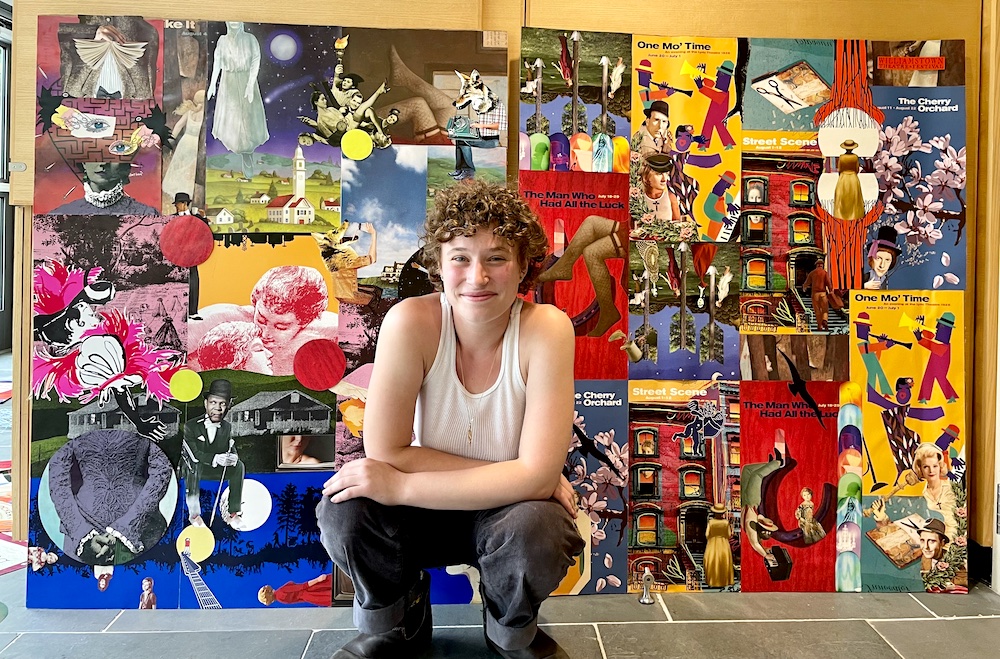
NAOMI FRIEDMAN (USA)
Visual Artist
Click for Artist Website
What is your artistic practice?
Collage.
On what projects are you currently working?
Currently, I’m working on two major projects. The first, which was a focus of exploration and development during my residency, is an abolitionist, early-childhood political education resource. The book hopes to provide resources and awareness for caretakers and their young children—specifically focusing on early abolitionist intervention for children racialized and socialized as white. Each page consists of a unique analog collage, which caretakers and their children will be encouraged to take apart and reimagine the information in a way that makes sense to, and excites their child. In this way, I hope that the book can provide caretakers with the opportunity to begin discussing race, class, and gender with their children, and for those children to delve into their own emergent understanding of how to move through space, and reach for real connection while being aware of the potential harm that they could cause. I pull heavily from Radical Black Feminist Scholars, including Audre Lorde, Bettina Love, Angela Davis and Saidiya Hartman, inspired by their call to interrupt the institutional flow of power, interrogate systems of discipline that police the concept of home, and commit to real connection.
Additionally, the artist collective which I co-founded in 2022—Boyz With Apple—will be bringing a devised piece of physical theater to the Edinburgh Fringe Festival. Purgatorio, inspired by Dante Aligheri’s Divina Commedia, will debut at theSpace Triplex in August 2023. For this project I will be working as a designer and scenographer, bringing together mosaic, stained glass and collage through an exploration of negative space.
What is the most relevant conversation that you remember having during your residency at Arquetopia?
In many ways, it feels difficult to pinpoint a specific conversation, since one of the components of the residency I appreciated so much was the interconnectedness and flow between readings and discussions each week. That being said, one pivotal moment that stands out was Fransisco’s succinct explanation of the relationship between space, place and landscaping. Through this conversation I came to understand landscaping as a verb, and a powerful mode of state discipline, which transforms space—which is about relationships—to inherently political places that can be more effectively policed. This redefinition served as a foundation for each subsequent idea or reading introduced and shifted my understanding of visual representations of the natural, the architectural, and the figural in my own art. This understanding of the violence of place was also the basis for my exploration of empire and home—specifically as they relate to the construction of the white, American mother—as the residency progressed.
What changed after your residency at Arquetopia?
Following the residency, I have found myself incredibly excited to continue pushing myself to let go of the body as a central figure in my work. I feel that the time and resources I was able to commit to my practice throughout the residency allowed me to further develop my physical skills as an artist as I further explored the work of theorists, historians, and artists that inform my own collage. Additionally, I was able to expand my understanding of racialization beyond the myopia of an Americentric lens.
How are artist residencies important to the artistic practice?
Here, I again have to refer back to the redefinition of space and place in order to honestly answer this question. The relationships that I developed while in the space, carefully and intentionally created through the Arquetopia residency program, serve as a continuing source of support and inspiration in my artistic career as well as my life. I feel incredibly lucky to have shared the space with wonderful residents and members of the Arquetopia team and look forward to continuing to share and create space together. Additionally, the opportunity to dedicate my full time and resources to my project for a month, while receiving consistent constructive feedback and materials to deepen my work, allowed me to expand my practice and the ideological positionalities which inform my process of creating collage
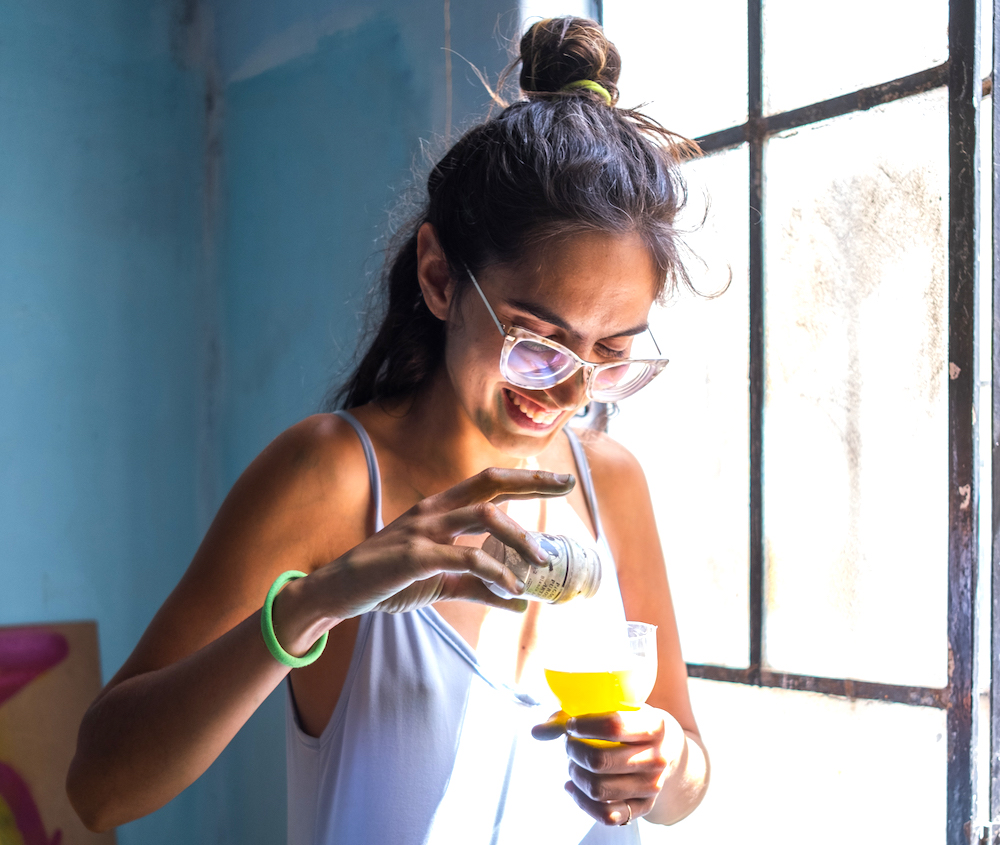
VALENTINE ABRAHAM (France/Canada)
Visual Artist – Multimedia
Click for Artist Website
What is your artistic practice?
My favorite medium is painting, although I’ve been known to also use ceramics, drawing, writing and others.
On what projects are you currently working?
I'm currently working on my first large scale project thanks to the support of a grant, exploring identity, relationship and the stories our bodies tell through the making of thirty partial body portraits. Divided at the hips, I am painting 15 tops and 15 bottoms that will be placed on a big wooden carousel, allowing the viewer to create 225 combinations out of the meeting of 30 different strangers.
What is the most relevant conversation that you remember having during your residency at Arquetopia?
That is a very difficult question to answer, as I feel like my whole time at Arquetopia was filled with conversations that shifted considerably my way of understanding the world and making art, both with Francisco and Nayeli but also with the fellow residents, so much so that all of these talks have become entangled in my memory; however, weeks later the conversation initiated on landscape is still running wild in my brain as I continue wrapping my head around it.
What changed after your residency at Arquetopia?
So far, it is hard to say, as I haven’t yet returned to my normal studio practice and am exploring Mexico, but in Arquetopia I abandoned my usual medium of oil painting and discovered new ways to paint that will, undoubtedly alter the way I make art forever, if only because it reawakened my curiosity for different materials than the classic ones.
How are artist residencies important to the artistic practice?
This was my very first residency, so I couldn’t talk as a general rule, but this was a life changing experience for me. Getting out of my usual space, working in a different studio, surrounded with other passionate artists, in a new country, pulled me completely out of my comfort zone and I think that is always where the magic happens. I found more inspiration in my five weeks at Arquetopia than in the year before. But more than that, I feel I got to know myself better as I was faced with new questions posed both by the space, the readings, the new materials and all the new people. It helped decenter my experience and consider my practice in a broader, wider, wilder world. I left Arquetopia transformed, and I am both excited to see what comes next and full of gratitude for this great gift in an always complex journey.
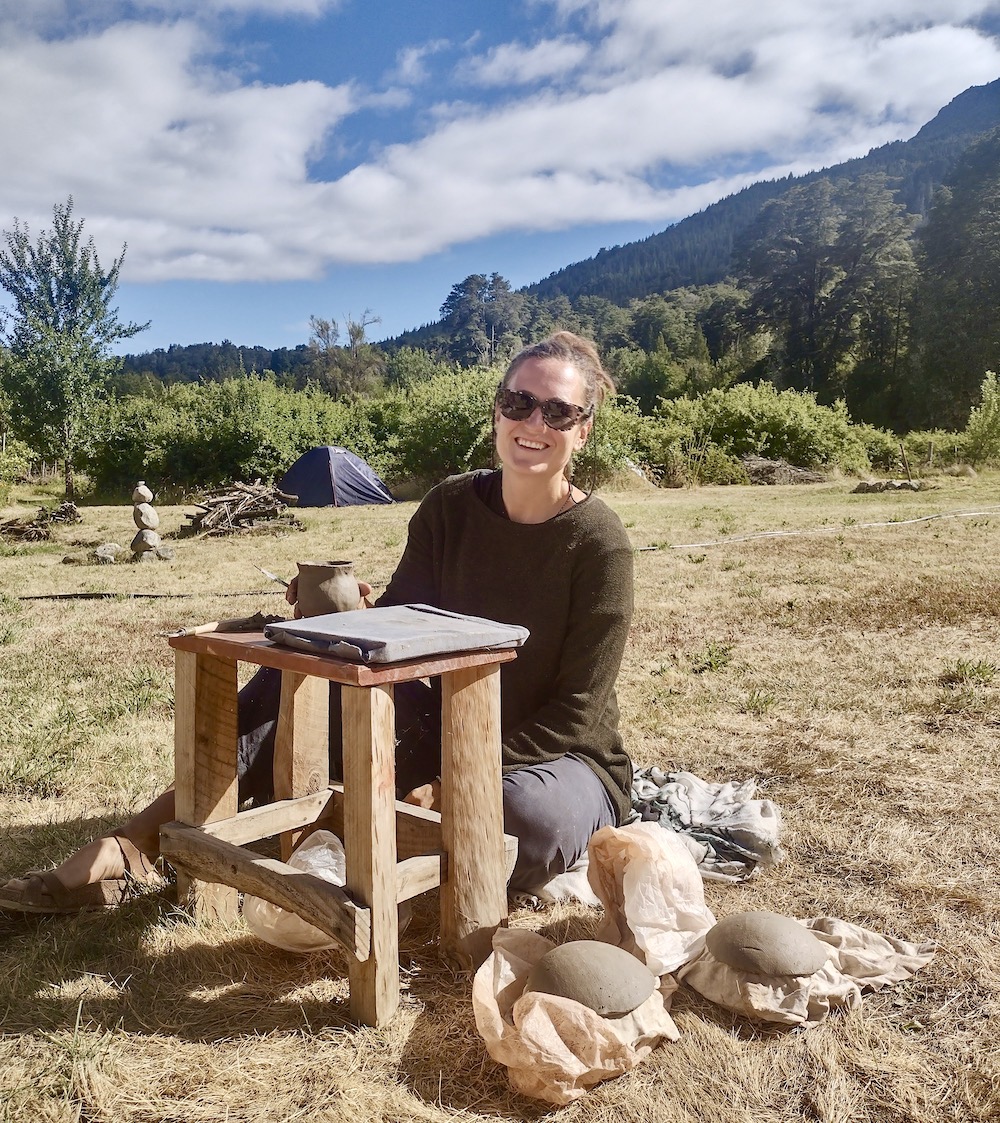
MADLAINA FONTANA (Switzerland)
Visual Artist – Photography, Ceramics
Click for Artist Website
What is your artistic practice?
I work in photography (etching) and ceramic sculpture.
On what projects are you currently working?
In Argentina, I am still doing pre-Colombian ceramics. Firing in a traditional oven with clay from the region. Questions around the colonial behavior from myself and others are present in the work. How I do art and not “what” or “why”is central for my work.
What is the most relevant conversation that you remember having during your residency at Arquetopia?
There is not one most relevant conversation for me; many of them were very important to me. Even when the intention is good, the impact could be bad. The discussion about “the other” was important for me, and for sure, the questions about time and space or place and history.
What changed after your residency at Arquetopia?
My perspective about place and history changed a lot. What if we see art more in space and time! To think about space as a ceramic artist is very important, and after the residency, I could see that history and time play a profound role in artistic practice. The colonial mindset is very present in art. This connection is new for me and opens a variation of questions and possibilities.
How are artist residencies important to the artistic practice?
I began working in ceramic art two years ago. My art practice changed from photography and etching to sculpture. This residency was very important for me, to learn from Señora Alcione and Señor Bernardino, how they work with clay. And I came closer to my goal to do sustainable ceramics, to sculpt without electricity and work in a better way with nature.
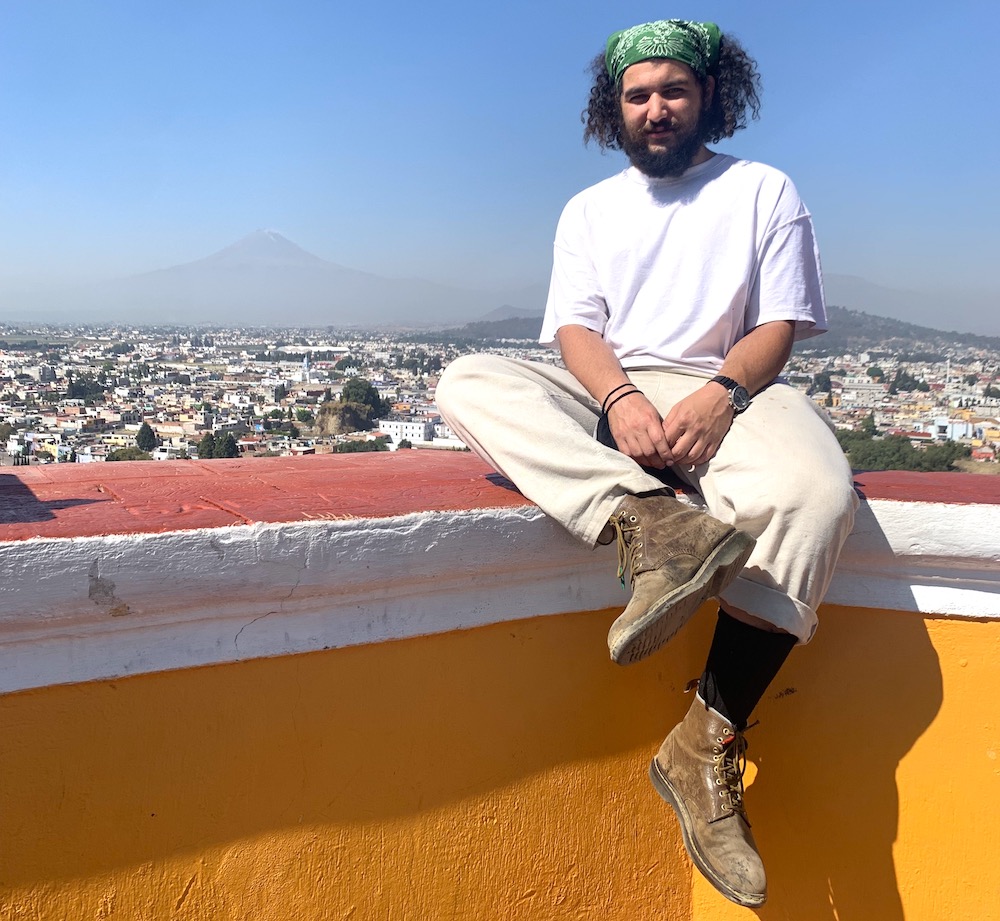
WILL OBERLANDER (USA)
Visual Artist – Printmaking, Illustration
Click for Artist Website
What is your artistic practice?
I am an illustrator and printmaker.
On what projects are you currently working?
Currently, I am continuing work on block prints in linoleum. I am experimenting with different techniques to achieve more distortion and experimentation in my process.
What is the most relevant conversation that you remember having during your residency at Arquetopia?
All of the discussions I had at Arquetopia were extremely thought provoking. Artistically and philosophically, I found them to be important conversations and immensely helpful in my understanding of myself and my work. One of the moments that remains in my head was a discussion on the value of the artistic process, rather than product itself. In my work I often become hyper-focused on a vision of a finished piece, this conversation with the Arquetopia team helped refocus my energy back into process; inspiring me to develop new techniques and explore the different ways in which I can create a print. This was very empowering and opened the door to many more questions.
What changed after your residency at Arquetopia?
I have a broadened excitement for my craft and creation in general. I find myself more open to exploration, and less concerned with certain aspects of personal expression.
How are artist residencies important to the artistic practice?
I find it important to remove myself from typical routine, it is often the first step in recognizing the ways in which stagnation and oppression has influenced my life and my work. Living with and learning from other artists can be a wonderful experience, especially with people who are willing to challenge underlying ideology and identity. I will continue to search for similar programs and relationships.
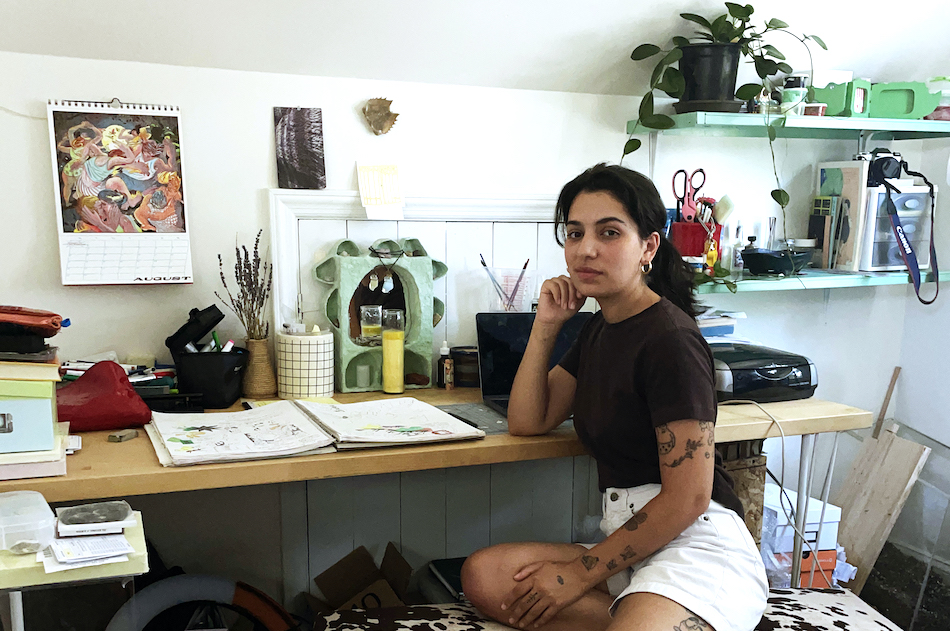
ALANIS VULPIS (USA)
Visual Artist – Multidisciplinary
Click for Artist Website
What is your artistic practice?
Much of my work begins in visions on long stretches of road or in the still moments before falling asleep. They’re translated into notes and sketches, but once they enter the 3-D they take on a life of their own. It’s a constant dance between myself and the agency of what I’m making. My mind is both off and on in the same moment; it’s like staring at something through your periphery, and trusting the blurred silhouette enough to know where it needs to be taken next. For this reason, my work spans a large range of mediums, and I am always trying to learn new skills and communicate with new materials.
On what projects are you currently working?
I am currently concluding a couple of projects in hope of pursuing some new ideas: finishing the ceramic altars from my time in Urubamba, archiving photos from the trips I’ve taken this year, posting a series of bandanas exploring organic networks and resist-dyeing processes, illustrating a calendar for the coming year, and so much more.
What is the most relevant conversation that you remember having during your residency at Arquetopia?
So much of the focus of my conversations with Francisco and Nayeli were about language. I really got to unpack the way words and labels that I have been so accustomed to using actually continue to reference a “center” and further work to oppress and exterminate rather than serve the function of liberation that they might promise. Words hold a lot of power, and as someone who works with existing in a space that is neither here nor there, it has been extremely eye opening for me exploring the ways language can actually perpetuate the binaries and barriers I am trying to detach myself from (if that is even possible). Space becomes a place. Time becomes a history. And we won’t find our liberation in either of those devices.
What changed after your residency at Arquetopia?
A lot. The residency could not have come at a better time for me. It had been postponed two years from our first summer with COVID, and although upsetting in the moment it proved to be the perfect amount of time for me to come back into my practice. From Francisco and Nayeli, I gained something from Arquetopia that was a lot more meaningful than a finished body of work. I gained a sense of trust with myself as an artist – they encouraged me to not only follow my drives, but to expand on them. From Bernardo and Alcione, I learned to regard clay in a whole new way. They walked me through every step from earth to finished ceramic piece and encouraged within me a stillness I had lost in the pace of New York life. From the other residents there who told me about their journeys as artists, I gained an outlook on our futures that had been so difficult for me to imagine through the last two years. From the people I met along the way and from all the family I have in this country so far from my home back in the States, I gained a new sense of togetherness that disregards language and borders. I feel so blessed to have gotten this time in Urubamba and the surrounding Sacred Valley and I cannot thank the program enough.
How are artist residencies important to the artistic practice?
There’s a complicated relationship between artist residencies and the countries they are located in. One of my first conversations with Francisco was about this dilemma; artist residencies are inherently harmful, as is the idea that traveling is a mandatory part of an artist’s practice. Our presence in these countries makes an unavoidable impact. Being there, I was able to fully see how much of the Sacred Valley has been manipulated to revolve around people like us, and being artists doesn’t separate us from this phenomenon. Being able to travel this freely at all is a privilege in itself that I’ll never take for granted. That being said, and as this was my first (of many) artist residencies, I found my time with Arquetopia incredibly rewarding. As much as an artist residency is a great opportunity to disconnect from our day to day patterns, it is at the same time an opportunity to reconnect. I cannot speak for all artist residencies, but so much of Arquetopia’s motivation was in this connection – in understanding our role as artists, and how we impact all life around us from people to animals to plants. Maybe it is only through this moment of disconnect that we are able to truly see just how much we do connect. Thank you all again for having me!
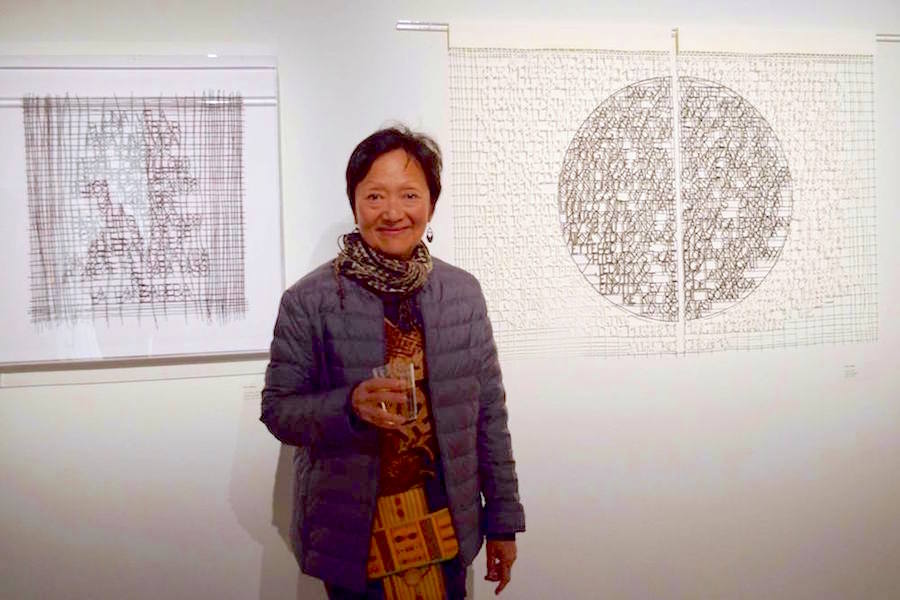
ELLEN BEPP (Japan/USA)
Visual Artist – Mixed Media, Hand-Cut Paper
Two-Time Arquetopia Artist-in-Residence: Oaxaca
Arquetopia 2015 Residency Scholarship Award Recipient
Click for Artist Website
What is your artistic practice?
MIxed media, hand-cut paper.
On what projects are you currently working?
I continue to explore handcut paper as a format to bring attention to acts of injustice, xenophobia, racism, particularly in the context of the current regressive political climate in the US. During my recent stays in Oaxaca and short visit to Chiapas, I learned more about the history of political upheaval and resistance in those Indigenous communities, past and present. This has propelled me to further attempt to address struggles here in the US through art and activism.
For example, as a Japanese American, it is important for me to continue to educate the public about past incidents of racism and injustice based on my personal experiences. I consider it my obligation to remind people of the wrongs perpetrated against Japanese Americans, including my family, during WWII in this country and their incarceration in concentration camps by the US government. The scenario is much too similar today against Muslim citizens and other immigrants and the xenophobic hysteria is palpable. I will show my work in a group exhibition slated to open in September 2017, addressing these issues and honoring the 75th Anniversary of Executive Order 9066, which was issued by President Franklin D. Roosevelt. His signing ordered the removal of Japanese Americans from parts of the West Coast and today it is crucial to speak out to never allow this to happen again.
What is the most relevant conversation that you remember having during your residency at Arquetopia?
What I recall most is a conversation I had with one of the Arquetopia board members, Raymundo Fraga, while I was visiting the Puebla residency site in 2015. The Arquetopia staff had set up a meeting for me because I had expressed interest in the Indigenous history of Mexico and a desire to learn about traditional papel amate (bark paper). I wanted to research names of groups of original inhabitants who still survive today. It turned out that Raymundo Fraga is one of the most knowledgeable educators and textile collectors around, so I had the honor of meeting him. He generously shared his time and knowledge, books and resources so that I could look up names, indigenous languages still spoken and learn how the amate paper was made and used. I had read that there were areas in the state of Puebla where the paper was still being produced so he gave me directions on how to reach a small community named San Pablito, Pahuatlán, about eight hours away by bus. I made my way there and visited the taller (workshop) of Juan Santos where he demonstrated step-by-step how the papel amate has been made and used for generations. It was a privilege to spend time with him and his family. I procured a large sheet of amate paper that day from him and created an art piece dedicated to the 68 current indigenous communities of Mexico.
What changed after your residency at Arquetopia?
After returning home from each of my two residencies at Arquetopia, I found myself asking more questions about what was important to me in my art practice. When I had first arrived in Oaxaca on July 26, 2014, we received news about the kidnapping/disappearance of 43 student teachers at Ayotzinapa Rural Teachers’ College in the state of Guerrero. Then when I returned home after my 2014 residency the news about more killings of unarmed African Americans was also weighing heavily upon me. I wanted to create work around those issues of racism, police brutality, and social injustice. I decided to experiment with the Mexican paper cutout art form (papel picado) which has always struck me as both ethereal and powerful. I wanted to address these killings in America in particular and in my community in Oakland, CA. This is when I began cutting out the names of 100 unarmed African Americans killed by police in 2014. It was a cathartic process and I have been told by viewers that reading these names cut out of a delicate sheet of paper is somehow much more impactful than reading printed names.
After my 2015 residency, I continued doing handcut paper, experimenting with text and with figurative pieces as well. As the 2016 US presidential race ramped up, I wanted to address the border wall, anti-immigration issues, etc.
Today, as a result of so many backward changes in policies by this American government and an atmosphere of fearmongering and hatred, people of color and people with fewer financial resources are struggling. Many of us in the artist community are taking a stance of resistance and realize once again the importance of art as a tool and a weapon.
Artist residencies allow us to break out of our usual routines and escape our daily distractions. They allow us to commit ourselves to our art with the luxury of a concentrated chunk of time. They expose us to experiences outside of our everyday lives if we take the opportunity to actively get involved in a new environment and remain open. They expose us to new people and viewpoints if we embrace the opportunity to engage, exchange and learn from them. All of this gives us a richer and deeper well to draw from in order to enhance our artistic practice.
How are artist residencies important to the artistic practice?
I had the rare fortune to attend my first Oaxaca residency in 2014 but was able to immediately return the following year, thanks to an amazing gift from Arquetopia. Because I had become familiar with the area my first time there, by my second time I was able to travel around even more easily, to visit local friends that I had met the year before. This gave me opportunities to learn directly from people in the community about their personal lives, culture and the many-faceted environment of Oaxaca.
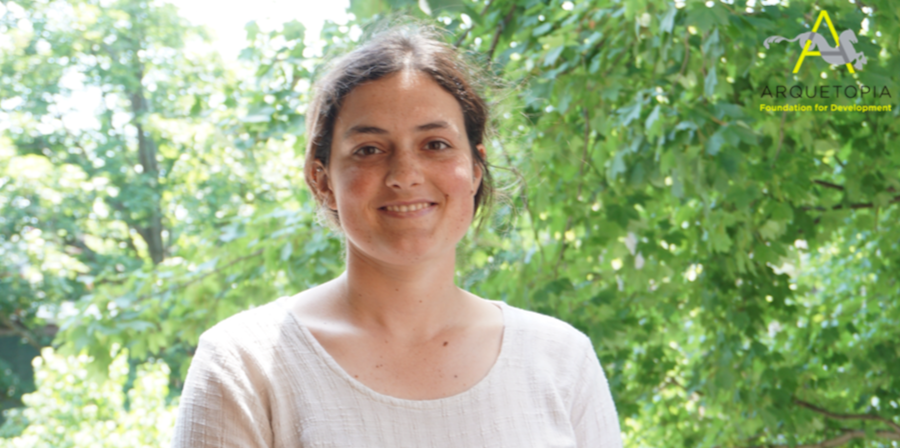
ANNABEL BIRO (Canada)
Visual Artist – Ceramics
Click for Artist Website
What is your artistic practice?
I am a visual artist working in ceramics.
On what projects are you currently working?
I am currently working on a large scale installation project. My goal is to create a ceramic floating dock and to install the work in the water of the Halifax NS Waterfront. This project is a continuation of the conceptual framework I started to explore during my time at Arquetopia. I am interested in the concept of ownership over space/property, I am working on creating a dialogue that examines this concept further. The dock form I am pursuing to create represents an abstract form of land; a dock could be described as an extension or island of land for our bodies to stand upon. By creating this object I am inevitably creating something that is seen to be owned by someone.
What is the most relevant conversation that you remember having during your residency at Arquetopia?
The readings and weekly meetings were so beneficial during my residency. One of the discussions that has stuck with me was about making work with intention and being conscience of the shadows that your work creates. Artists create work with their own experiences and the audience will have many more perspectives to the work that may not be what the artist had anticipated. By having the skill to see where those shadows are in your work will only guide you to refine your arts purpose further. Another important discussion during my residency was one about the use of language. Specifically the use of words that are relative to an individ- ual experience, like authentic, traditional, primitive, exotic, ect. Many of the amazing essays I read highlighted and emphasized the issues and implications of the use of language. These are just two examples of the conversations I had at Arquetopia.
What changed after your residency at Arquetopia?
From this experience I am motivated to create work with more awareness to the multiple perspectives and experiences of my audience. I have learned so much from Francisco, Nayeli, the other amazing talented artists I had the opportunity to meet during my stay. It was also my first time traveling outside of Canada and I absolutely loved exploring and learning about Puebla, Mexico. I am inspired to travel more and to keep pursuing my artistic practice through residencies. I am so grateful for my time at Arquetopia. It was truly a once in a lifetime experience.
How are artist residencies important to the artistic practice?
Artistic practices are strengthened by stepping out of your comfort zone and putting your work out for more people to connect with. By participating in artist residencies you have the opportunity to make connections with a group of diverse creative minds. It also provides artists with the space and resources to create work. In addition, this international residency gives artists the chance to travel and work which is truly amazing. All the things that an Artist Residency provides has the potential to motivate and guide an artistic practice through growth.
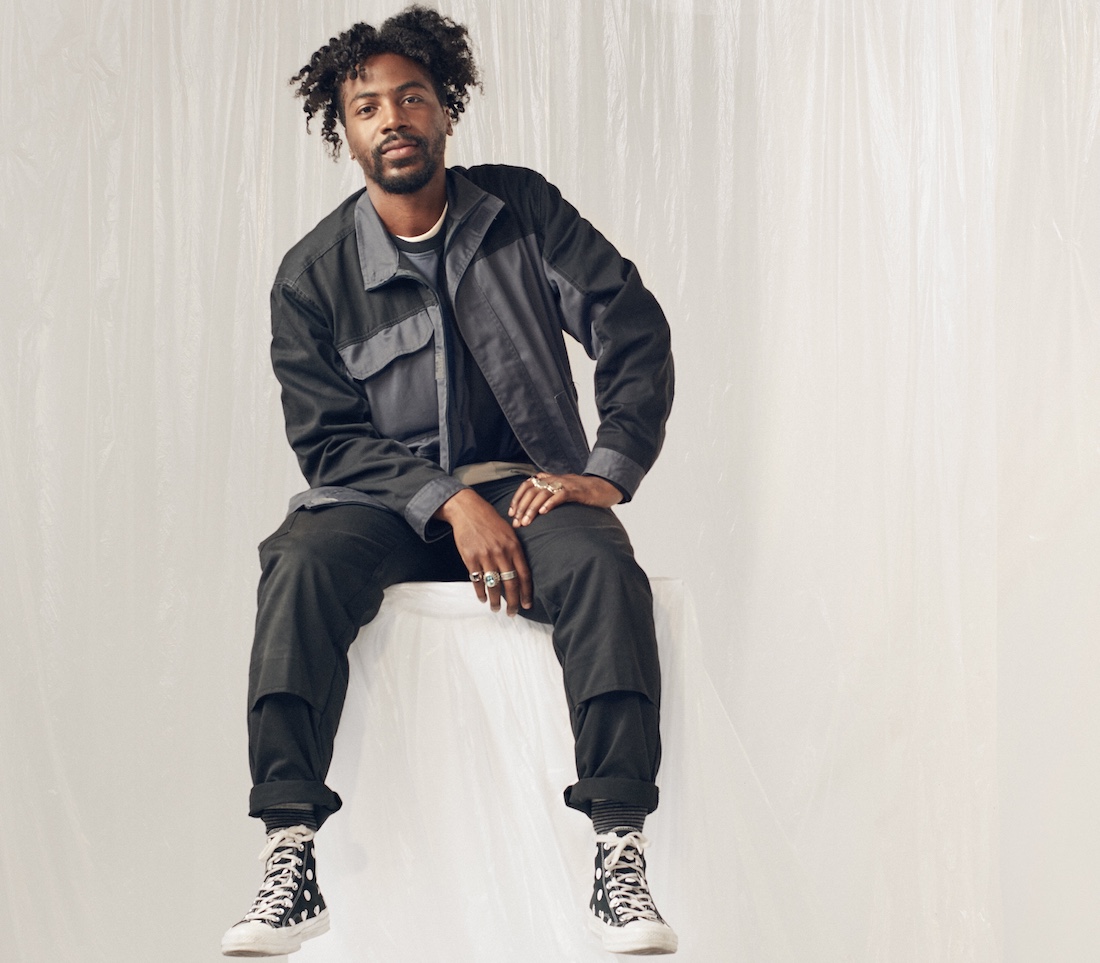
JOEL BOYD (United Kingdom)
Visual Artist – Textiles/Fashion Design
Click for Artist Website
What is your artistic practice?
I am a fashion designer.
On what projects are you currently working?
My latest project is an adaptation of one of my first projects I ever worked on. It is a fashion collection inspired by pioneer black surfers looking at surf culture and surrounding elements such as marine life, surfing iconography, etc.
What is the most relevant conversation that you remember having during your residency at Arquetopia?
I found all of the conversations that I had with Francisco and Nayeli really thought provoking, inspiring and relevant, but if I had to pick one, I think it would be the last conversation we had. We spoke about various texts, one called “Text and Textile”, and then we began to discuss another text, “Woven Heaven, Tangled Earth”. Both texts were interesting because they mentioned the storytelling aspect of cloth which is something we try to do with clothing, but this spoke of it on a level that I've never considered, so I found that very insightful.
What changed after your residency at Arquetopia?
I think it opened my eyes to looking at my practice through a new lens. The talks with Francisco and Nayeli were really pivotal because they made me think about things I hadn't and when you are faced with those types of realities it makes you rethink a lot.
How are artist residencies important to the artistic practice?
I find them a great way to refresh yourself. When we have a practice, I think that we don't tend to learn new things once we feel we are in a self-sufficient place, but it allows to leave your norm and enter a new world fresh for a brief period of time, which I think we as creatives need to do in order to keep the spark alive.
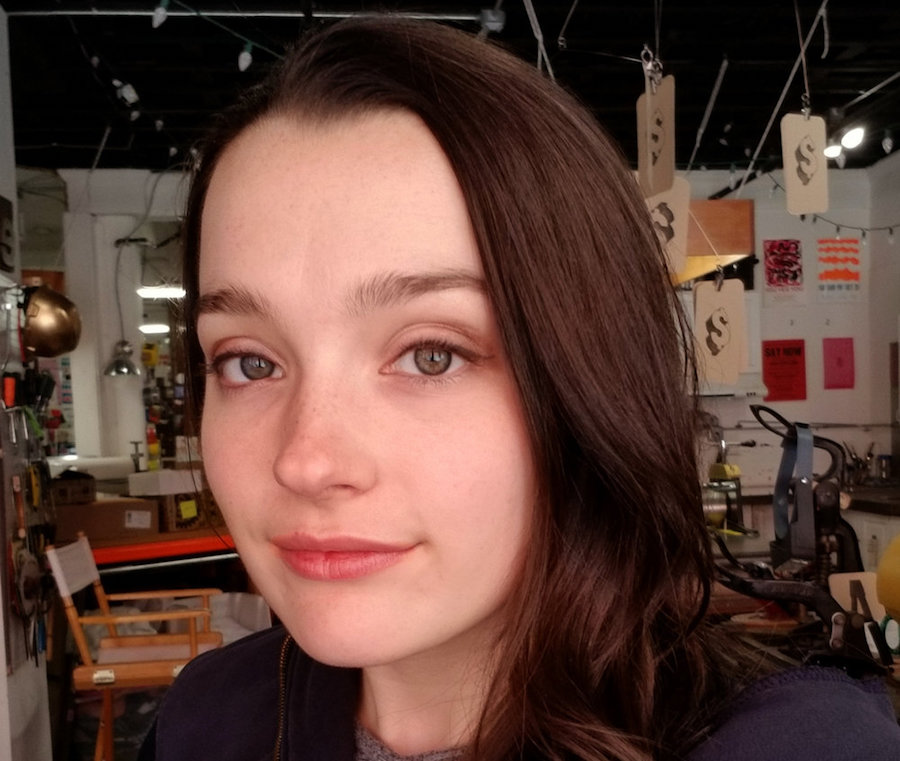
QUINCY BRIMSTEIN (USA)
Visual Artist – Printmaking
Click for Artist Website
What is your artistic practice?
I'm an artist based in Portland, Maine. A majority of my work is printmaking based. Unlike most traditional printmaking, I usually don't create editions. I use the multiple prints and the unique textures within them to reinvent imagery by using collage techniques.
On what projects are you currently working?
I recently completed a fellowship at Pickwick Independent Press in Portland, Maine. The fellowship, Printers Without Margins, allows for individuals to create radical printed matter with a social message to share with the larger community. The social message I chose to focus on was volunteering and idea that free-time is a privilege that can become a vehicle of positive change. Now that I have completed the fel- lowship, I'm very interested in continuing to incorporate text into my imagery and I have been writing a lot to inform my visual practice.
What is the most relevant conversation that you remember having during your residency at Arquetopia?
The conversations I had with Francisco and Nayeli were very insightful and illuminating. I found our most interesting and multifaceted conversation was regarding the politics of space and how its crucial to consider the audience and how their background relates to the experience of viewing. I was particularly moved by the idea that the history of art has always favored power and has established many artists as being the “masters of time” thereby positioning the viewer as “stuck in space.” Additionally, we discussed who has the right to represent specific places and the complex histories that permeate landscape art. From this conversation I began to ask: when depicting landscapes and ecology, who is the artist claiming space for and why? What is the source of this place and what is the epistemology of that area?
What changed after your residency at Arquetopia?
After my residency at Arquetopia, I developed a critical curiosity for many topics and areas of art. Many of the articles that I read about Mexican art history revealed that art was used as a tool for colonialism. Now my eye is trained to recognize this phenomena in art and media which can be a startling and illuminating realization. I was also lucky enough to continue traveling throughout Mexico after my stay at Arquetopia. I traveled with new friends and sometimes traveled alone and so I really had to trust my intuition when navigating these new spaces. I found friends in the most unlikely of situations and am forever grateful for all the great connections I made in Mexico.
How are artist residencies important to the artistic practice?
As a recent graduate, I am still developing my artistic practice and the financial flexibility to regularly and consistently produce art. Artist residencies have provided me a supportive and immersive environment to continue my exploration and education. I go into each residency with a the goal of learning new techniques and connecting with other artists from different backgrounds than my own. International residencies are also great opportunities to travel solo.
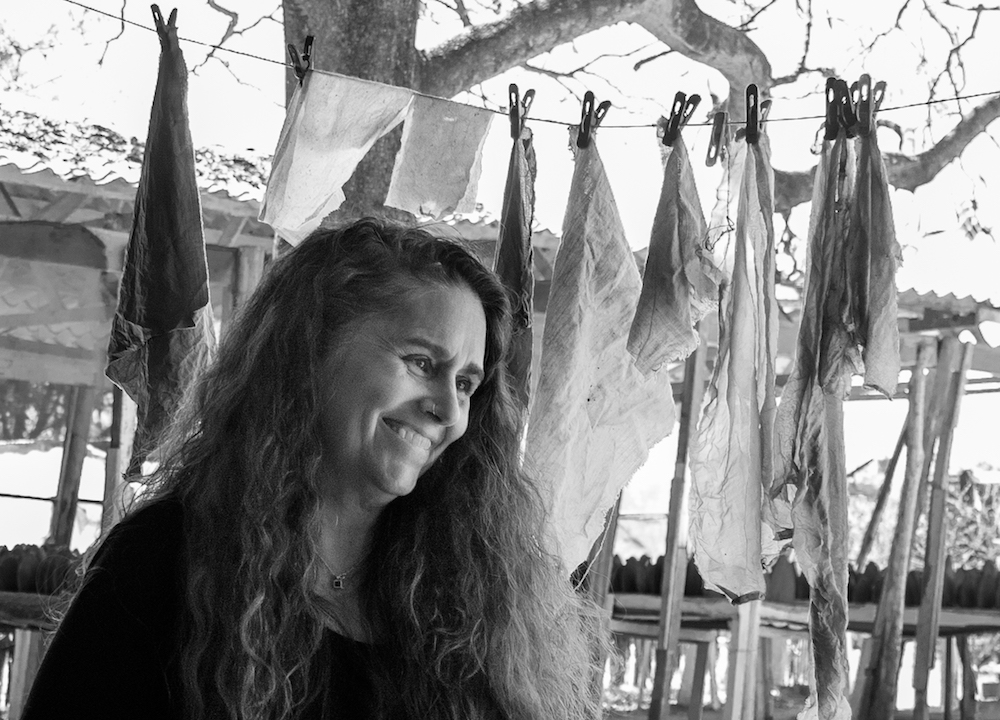
MARGARET BYRD (USA)
Visual Artist – Mixed Media, Installation
Click for Artist Website
What is your artistic practice?
I am an installation and mixed media artist with a passion for extracting color from nature to use in my creative practice.
On what projects are you currently working?
Thanks to the hand-dyed textiles I created from organic material sourced in Oaxaca during my residency at Arquetopia, I am currently building a series of mixed media two-dimensional pieces on canvas. Simultaneously, I continue my exploration of natural colors by experimenting with new substrates including paper and testing new mediums like natural ink. All of this activity informs my ongoing installation practice where I’m pushing the limits of organic dyes by incorporating them into my ephemeral sculptures in ice and bioplastics. I’m excited to place a kinetic abaca fiber installation, Swizzle Sticks, in a three-month public exhibition in the Seattle area this summer (July-October 2020), and I will have my first full-length print feature highlighting the influence natural color has had on my artwork in What Women Create.
What is the most relevant conversation that you remember having during your residency at Arquetopia?
I have fond memories of several conversations about creativity and artistic practice during my residency in Oaxaca. The weekly discussions with Francisco and Nayeli were rife with historical critiques that challenged the common misperceptions perpetuated by the Western Imperialist agenda and its impact on the myth of the artist. It was a refreshing perspective that has provided an opening for a shift in my mindset. We also had meaningful conversation about the artist’s responsibility to discover the ‘why’ in their unique voice and freely share their vision without expectation.
What changed after your residency at Arquetopia?
After my residency at Arquetopia, I had a deeper understanding of natural dye material and technique, which in turn has elicited more creative questions and an insatiable curiosity to fuel my pursuit of nature’s palette. I have returned to my home studio with a new confidence and an expansion of creative ideas rooted in the world of dye and earth pigment.
How are artist residencies important to the artistic practice?
Beyond the priceless experience of immersive creative time dedicated to one’s art practice, a residency is an excellent time to take risks and push all boundaries. Change of any kind – environment, culture, routine, medium, etc. – brings us alive, and in this energetic shift, expansion is inevitable. I intend to seek artist residency opportunities annually to broaden my creative vision and celebrate the wonder of being an artist.
YUCHIN CHANG (Taiwan)
Visual Artist – Illustration
Click for Artist Website
What is your artistic practice?
I am an illustrator, visual artist and storyteller.
On what projects are you currently working?
During the time in the residency, I was working on a picture book project based on my own writing, I Would Like to Travel with the Monster.
What is the most relevant conversation that you remember having during your residency at Arquetopia?
Oh, that’s quite a bit, I mean, most of the conversations between me and Maritza about foods were quite memorable. I liked when I was discussing different ideas with other fellow artists; I liked talking about the seasons changing of Peru with Luiselen; I also enjoyed a lot exchanging thoughts with lovely Nayeli and Francisco during our meetings. Everything could be most relevant about this experience, from how those interactions have changed my way of understanding about this world, to creating a long series of interests and curiosities about how the world in front of us was formed.
I have learned about how to find the purpose of my work by self questioning with the right questions, and to remind myself that overall, we came to this world alone, and would go alone as well.
What changed after your residency at Arquetopia?
Nothing and everything, I guess. Life still goes on the way it was, kept on observing, being curious, walking around, painting and all that. But at the same time, I changed the way I look at the world that I have been in for almost three decades. I figured how complex my working process is, that I am really obsessed with layers of thoughts, research and the combination of multiple experiences within different senses. At the same time, I would like to present my thoughts with simpler, vivid images to engage with people.
As well, Peru and Arquetopia have given me amazing experiences of learning, literally from every second while I was there, that created a whole new desire for me to want to experience the same feeling more. It does give a better direction for me to decide what or what to do and where to go next.
On the art point of view, Peru definitely changed the way I look at colors, and creating layouts of landscapes. Also, I felt more comfortable and relaxed while sketching and coming up with ideas.
How are artist residencies important to the artistic practice?
I think residency programs are generally really helpful for my life as an artist; it creates a safe space and time to not just create my art works, but to feel relaxed about experimenting, learning and to do nothing (which is sometimes really important). As well, having opportunities to live in whole other environments for a couple weeks does create the excitement of art practice. Recently, I just did a residency in Taipei, my home town, even though it was where I grew up, but I got to see the area and the city with a newcomer’s eyes, which was pretty amazing.
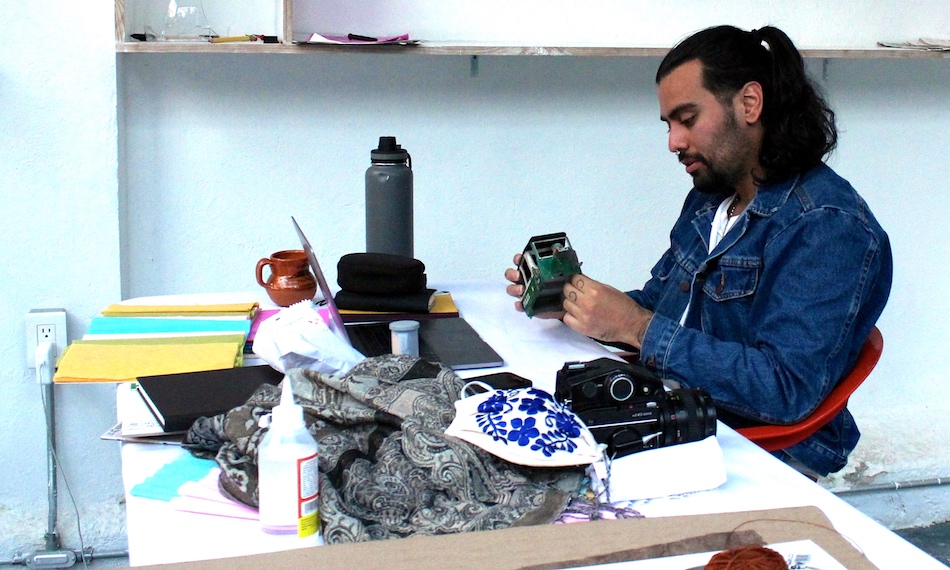
JOSÉ “CHICLE” CORCOLES (USA)
Visual Artist – Multimedia
Click for Artist Website
What is your artistic practice?
My artistic practice heavily involves photography while incorporating collage and video elements.
On what projects are you currently working?
Currently, I am working on a buffet of new projects; most importantly, I’m developing a portraiture series on hickeys (yes, the love bites on necks) looking at them as performance and love as resistance. I’m also developing more abstract photography projects focused on exploring the tension in Chicago neighborhoods between class, gender and culture.
What is the most relevant conversation that you remember having during your residency at Arquetopia?
The most relevant conversations I had during my residency revolved around the de-centering of the artist in the art making process, it’s something I’ve been able to carry into my classrooms as an art teacher and hold more meaningful conversations around the topic.
What changed after your residency at Arquetopia?
So much changed after the residency for me! What followed was a burst of energy. I rented an artist studio space, I moved into a new apartment, got a dog. Those things are small in comparison to the effect the residency had on my work, my thinking and it reflected in my curriculums and my art making.
How are artist residencies important to the artistic practice?
The residency changed my life, I’m aware of how dramatic that sounds, but that is truly how I feel.
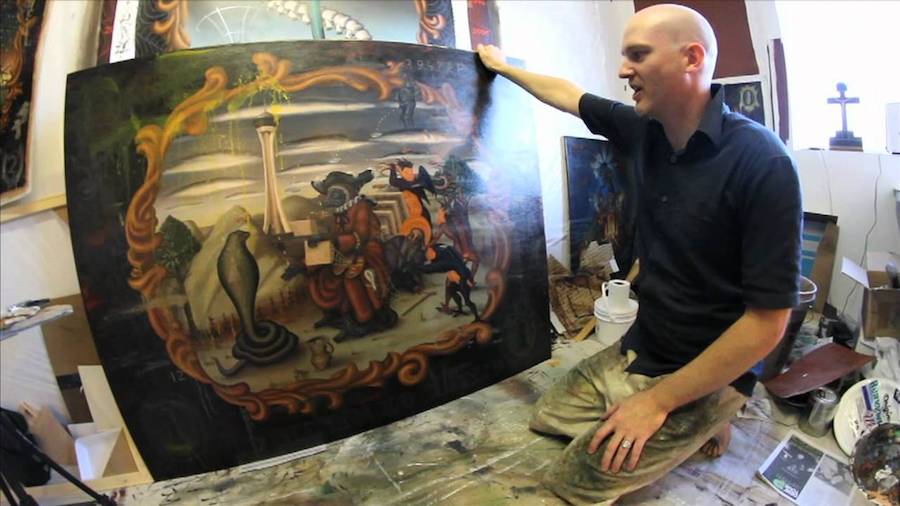
MATTHEW COUPER (New Zealand/USA)
Visual Artist – Painting, Performance
Click for Artist Website
What is your artistic practice?
Primarily painting as main artistic practice, but also performance.
On what projects are you currently working?
New paintings for a group exhibition and art fair in New Zealand next year. I’m just about to leave the USA for a month to attend a group exhibition I’m part of – ‘Zoocryptage’ at Crypte Saint Eugiene in Biarritz, France and I’ll be artist in residence at Arthémuse in Normandie, France.
What is the most relevant conversation that you remember having during your residency at Arquetopia?
They were all relevant! I think the best aspect of the conversations was getting a range of answers about the history of Puebla and cultural vagaries that helped me to start developing an understanding of the area and history.
What changed after your residency at Arquetopia?
My time at Arquetopia really piqued my fascination with Mexico and I really want to return and explore more cities! I’m actually still processing a lot of the things I learnt at Arquetopia and researched in Puebla and Mexico City.
How are artist residencies important to the artistic practice?
Very. From a pragmatic viewpoint, they allow for a concentrated continuity of time to work on your art. Context and location is important too. Being in a new city or country sometimes throws a spanner in the works of your practice and makes you re evaluate your work. It can feed in new information you may not be able to respond to in your own studio context. Being around other artists is also a great time. You get to compare your art, processes and thoughts regarding your art and life in a safe environment.
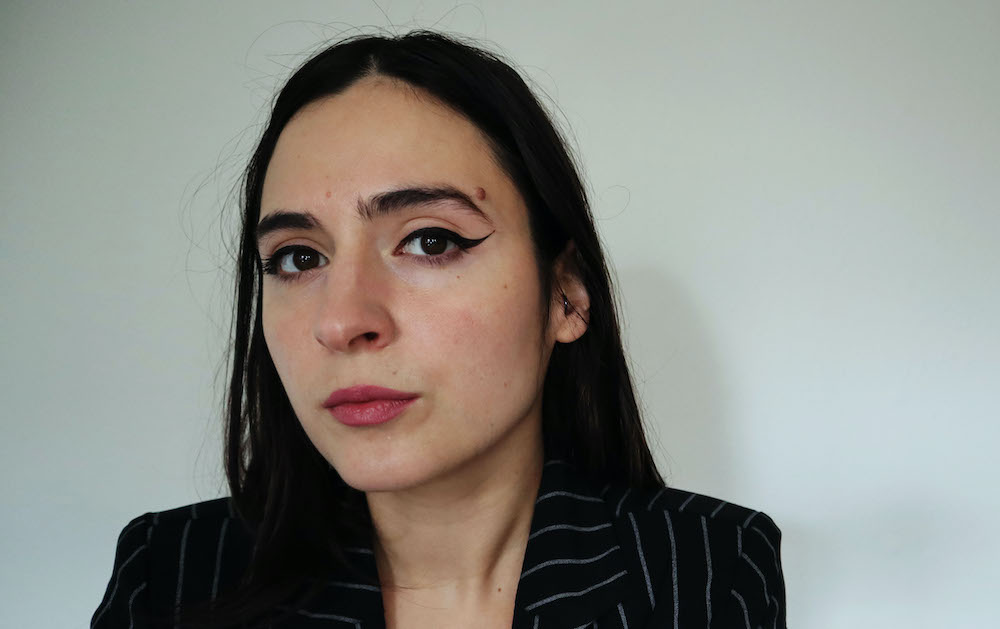
ROMINA DEL CASTILLO (Peru/USA)
Visual Artist – Multimedia
Click for Artist Website
What is your artistic practice?
Multimedia.
On what projects are you currently working?
I’m working on a series of interpretations of ancient Peruvian textiles and iconographic language into straw marquetry. My focus is on pieces that are found in major museums around the world. This project is an exploration of culture but also colonialism in art. How were these items made, what do they represent, and how did they get into these institutions so far away from the place they were created.
What is the most relevant conversation that you remember having during your residency at Arquetopia?
We had many insightful conversations during my residence at Arquetopia, but what made a profound impact was learning about the concept of ‘epistemicide’ or the destruction of knowledge and language as a colonizing tool. This violent and systemic effort created hierarchical structures that deemed knowledge and wisdom from the Global South as inferior while elevating European culture as the highest canon of thought. This Eurocentrism, so felt and normalized in my own experience in academia, had never been challenged to this degree. This conversation shook me to my core, and the questions it brought up still reverberate in my head: How can we break beyond a capitalist, patriarchal and western-centric world into a decolonial pluriversity that values and cherishes our cultural differences? I still don’t have the answers and my search goes on.
What changed after your residency at Arquetopia?
The month I spent in Urubamba at Arquetopia was magical and just the reset I needed for my practice. Getting out of my comfort zone and my routine, learning to work in a new environment while getting accustomed to the elevation, being surrounded by the most epic mountain landscape, playing with new materials and being introduced to new concepts and ways of thinking. It was a soul nourishing experience and I came back home to Oregon reinvigorated, inspired, and ready to create.
How are artist residencies important to the artistic practice?
It is important for artists to always feed our curiosities and find new ways of learning so we can continuously grow and our art can evolve. In the United States where arts education is extremely expensive and out of reach for the majority, artists residencies and mentorships can be a formidable alternative to a more traditional academic path.
Because my residency at Arquetopia was postponed by a year due to the pandemic, I took the time to find a couple of grants that significantly helped me with the traveling costs and the burden of taking a whole month off work. I want to encourage other artists to pursue these experiences for growth and learning, and to apply to grants. And to our governmental and philanthropic institutions to continue elevating the contributions of artists and providing us with financial opportunities so access to these spaces can be equitable.
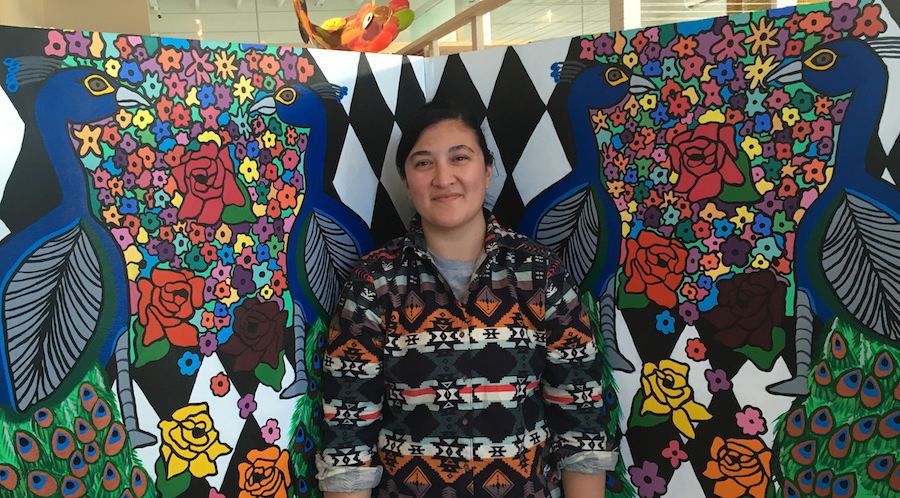
PRISCILLA DOBLER (Mexico/USA)
Visual Artist – Mixed Media
Two-Time Arquetopia Artist-in-Residence: Puebla
Arquetopia 2019 Residency Scholarship Award Recipient
Arquetopia International Mentorship Program Award Recipient
Click for Artist Website
What is your artistic practice?
I am multimedia artist. I do a little of everything. I am currently working on a series of woven paintings based on the layering of images from different cultures that have influence Mexican art-identity. In addition, I am also weaving cotton thread panels called Fallas en la Infraestructura.
On what projects are you currently working?
I am currently working on a series of woven paintings based on the layering of images from different cultures that have influenced Mexican art-identity. In addition, I am also weaving cotton thread panels called Fallas en la Infraestructura.
What is the most relevant conversation that you remember having during your residency at Arquetopia?
All of my conversations with Francisco Guevara at Arquetopia were mind blowing. He has so much knowledge on the political and social structures of gender and imagery. I have always been interested in the representation of images and where they come from. One of my most relevant conversations with Francisco dealt with how the same imagery is used to represents gender, race and social class. As a female artist of color, you have to challenge the existing notations and preconditions of the exotic and seductive representation of Mexican women, to create a new image that not only represents yourself but the systematic colonization of cultures and influences of those cultures that represent who you are. It’s too simple to re-create an image that already exists and we are precondition to understand that image. I want the viewer to spend more time analyzing the layers in my paintings rather then just saying that’s a cool painting.
What changed after your residency at Arquetopia?
The way I view art changed the most. Especially in figurative paintings and how individuals are represented in those paintings. I have a great desire to continue researching and exploring different processes of creating art.
How are artist residencies important to the artistic practice?
Artist residencies are very important to the artistic practice because they allow the artist the opportunity to play and discover new techniques. In addition, an art residency like Arquetopia, will challenge you to rethink of the process and provide the tools in research to increase your understanding of art, history and social structures.
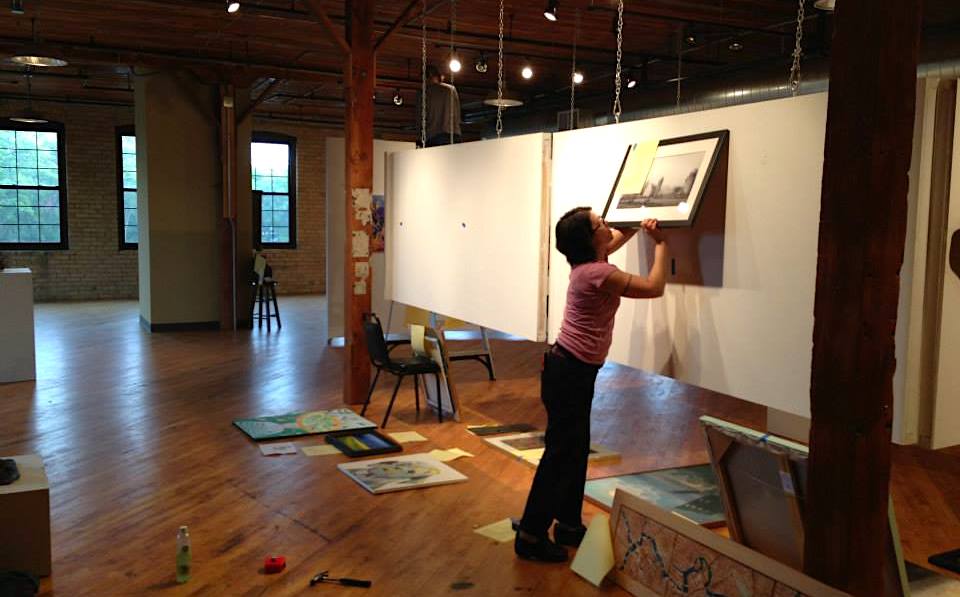
EMILY DONOVAN (USA)
Multidisciplinary Artist
Click for Artist Website
What is your artistic practice?
I am a painter and multimedia artist who explores color including natural pigments and plant-based materials.
On what projects are you currently working?
I am preparing a show that includes paintings created during my residency called Practical Source. The exhibit opening in late April at the Edina Art Center reflects on what I learned about natural color and includes ideas about different engineering systems that supply natural resources, i.e. water, electricity and how they vary and influences habits of everyday life.
I am also a recipient of a 2019 Minnesota State Arts Board Artist Initiative Grant and am beginning a new body of work called Migration and Motion that looks at human interaction and patterns of migration of birds in Minnesota. In this project, I will continue my exploration of natural pigments and color and I am partnering with area birders, neighbors and the local Audubon chapter to share their stories of migration visually.
What is the most relevant conversation that you remember having during your residency at Arquetopia?
Arquetopia supplied so much insight about during my residency and afterwards, especially as I continued to travel in Cusco and within the Sacred Valley. Discussion art, literature and the readings we were assigned provided rich discussions with the other artists as we found something that related to each others work and interests. Specifically, I had the best conversations with the artists and Astrid about color and the use of natural dyes. Everyone loved to join in and help with foraging and finding the plants and materials we used and what they colors we could make.
What changed after your residency at Arquetopia?
I’ve a noted a different approach to my work and habits in my life after returning home. I find that there is certain ease to everyday life, especially in the US that I in many ways took for granted. A have a more mindful approach to my water use, electricity and the things I own or buy. My studio is huge, bright and sunny and I have many resources are available to me and ready to purchase, but so different than how I made work in Urubamba. I think of the trips in the collectivo with Astrid to find Cochinilla or paper in Cusco and the time and effort and time it took to find things, reminding me to remember what I have is valuable and precious. I am more careful about what I have and how I use it.
I also think about color in a new way with additional meaning that includes rich tones, smells and adventures. Color now holds stories and history for me from Maria’s instruction and the insightful readings provided by Arquetopia. I think of green as chill'ka and large pots of boiling greens and red as cochinilla, remembering the wonderful neighbors in Urubamba that helped me find the insects fresh when I was unable to find the store in Cusco. I look at the variety of tones I created and their vibrancy and I remember Maria’s instructions, our way of communicating without a common language, sitting on the floor while smashing plants with rocks and the results of color she made look so easy from generations of knowledge. I look forward to using these skills and knowledge in my future work.
How are artist residencies important to the artistic practice?
Changing your environment and comfort zone provides a new test for your work. It makes you diverge from your normal, comfortable or trained practice and forces confrontation about what and why you are doing things. For myself, it made me face what is easy about the way I make work and challenged me too look at new solutions and ideas about what I want to create, why and the message I want my work to convey.
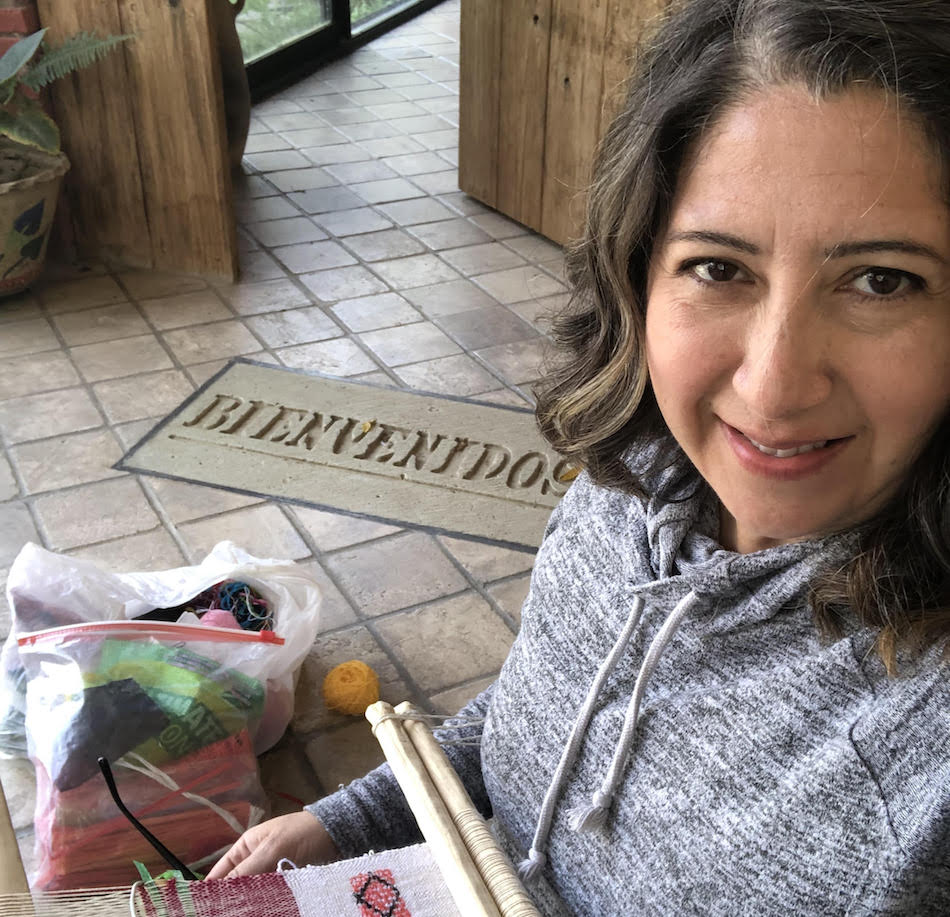
LAURA DREY (USA)
Multidisciplinary Artist
Arquetopia 2020 Residency Scholarship Award Recipient
Click for Artist Website
What is your artistic practice?
My artistic practice is interdisciplinary.
On what projects are you currently working?
I’m currently working on a couple of things—Primarily, a creative writing project. Secondarily, a sculptural/installation piece that incorporates hand made papers and back-strap-loom weaving techniques that I learned while in Oaxaca.
My primary project is a creative writing project that is funded by The Idea Fund, a re-granting program administered by DiverseWorks, Aurora Picture Show, and Project Row Houses and funded by The Andy Warhol Foundation for the Visual Arts.
With this project, I have been able to travel and immerse myself into the Texas border towns that make up the Rio Grande Valley. These towns were navigational stopping points for my ancestors as they migrated to the United States from Mexico. With this gained experience I am producing a vignette of short stories and poetry that reveal cross-generational ways of belonging in the world as I draw from the experiences of my grandmother, my mother, my daughters, and myself. The work speaks to the complexities of migration, focusing on the nuances of personal and cultural identities as they intersect with themes of geography and government, labor and movement, economics and culture. There is to be a public reading and performance of the work to share with the larger community.
What is the most relevant conversation that you remember having during your residency at Arquetopia?
I remember Francisco often saying “The residency begins once you leave here” and I wholeheartedly agree with him. It's the residency that keeps on giving and giving. All that I've experienced through my time in Oaxaca has been profound. There was relevancy in everyday encounters and conversations with the fellow residents, instructors, staff, and the community. Everyone coming from different points and sharing their perspectives and experiences in life was an invaluable source of shared knowledge and information. The readings and discussions regarding the politics of race, class, and gender were particularly insightful and significant.
What changed after your residency at Arquetopia?
A greater appreciation for Mexican art history and the deepened awareness of its complex histories that are apart of my cultural heritage and the role I have in its livelihood. The stress-free and low key technology-based environment influenced my practice as it helped me adopt a more solitary and organic approach to working.
How are artist residencies important to the artistic practice?
The immersive environment is vitally important to an artist’s practice. It allows one a safe place to explore and build a deepened understanding of self-questioning, exploring intuition, navigating spaces and new places, creating new relationships and connections.
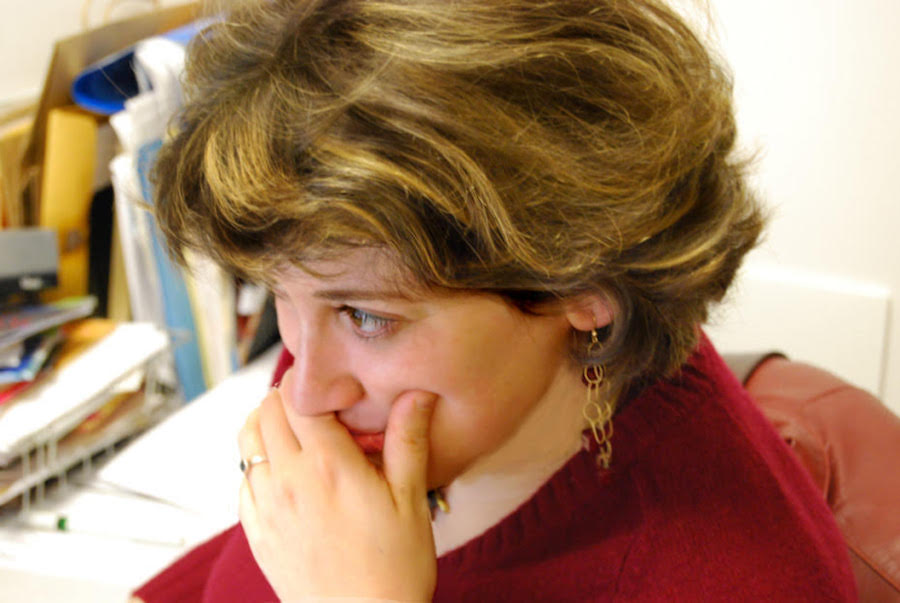
VERA FAINSHTEIN (Ukraine/USA)
Multidisciplinary Artist
Arquetopia 2020 Residency Scholarship Award Recipient
Artist Website Currently Under Construction
What is your artistic practice?
Experimentation and the use of digital technologies is a big part of my creative process. My main area of specialization is interactive large-scale video installations. I also have background in academic drawing and painting as well as graphic design. Unlike my digital work, which is very research-based and concept-driven, my drawings and paintings are more observational.
On what projects are you currently working?
During my artist residency, I started a series of watercolor paintings, which consisted of symbolic still-lives celebrating the rich traditions and cultural heritage of Mexico. I wasn’t very happy with the direction that the work was taking. The readings, educational field trips and the critiques, which were a big part of the residency experience, has helped me to move away from observational, realistic painting to a more conceptual approach to making art.
I am currently working on a project, which I started towards the end of the residency. The artwork is an interactive sculpture, consisting of several overlapping acrylic circles. Each circle features information and imagery related to popular objects often associated with the Mexican culture: a piñata, a sombrero, and others. While rotating the circles, the viewers will be able to uncover unique historical facts about the objects that they initially thought they were familiar with. My hope is that the educational component of the piece, will give the audience a better insight into Mexican traditions, history and culture, which is very rich and complex at the same time. I am learning laser cutting and engraving techniques in order to complete the artwork.
What is the most relevant conversation that you remember having during your residency at Arquetopia?
It’s hard to pick just one conversation or experience that was relevant because all parts of the residency were very meaningful to me: from the readings to the painting workshops to the critiques. I found the critiques, reading discussions and conversations with fellow artists to be especially valuable because they helped me to look at my artistic practice from a different angle and more critically. Phrasing work as a question, rather than a statement was one of the many indispensable suggestions that I received.
What changed after your residency at Arquetopia?
The international artist residency at Arquetopia gave me a better insight into the art of the colonial period as well as modern Mexican art. I really enjoyed the readings and the critical approach to art, which was emphasized during the program. It made me question the Western approach to art and introduced me to a different perspective/ a way of looking. Looking at the power distribution as it relates to art, the carefully crafted iconography and the color symbolism in colonial Mexican painting was an eye opening experience. The painting workshops, led by two professional local restorers, Lupe and Memo, were also extremely valuable, as they introduced us to the pre-columbian mural painting techniques, the novohispanic oil painting, and the history of the cochineal red. I have recently purchased the cochineal and is looking forward to experimenting with it further.
I teach graphic design at a community college in the San Francisco Bay Area. When I came back to the United States, I was very excited to share some of my experience and the new things that I learned at Arquetopia with my students. I updated the curriculum in order to place more emphasis on the social and cultural connotations of color. For example, in some of my courses, we looked at the history of the cochineal and discussed art as propaganda (specifically the use of religious iconography and color in colonial painting).
How are artist residencies important to the artistic practice?
The residency at Arquetopia was my first artist residency experience, and I could have not picked a better place to learn about Mexican history and art. The residency not only gave me a different outlook on art, but also helped me to approach my artistic practice more critically. Being able to receive honest feedback about my work was important for me. Seeing the work of other artists who were part of the program, was very inspirational. The residency provided a safe space for discussion and the exchange of ideas. It was kind of like a mini grad school experience. I would do it again in a heartbeat!
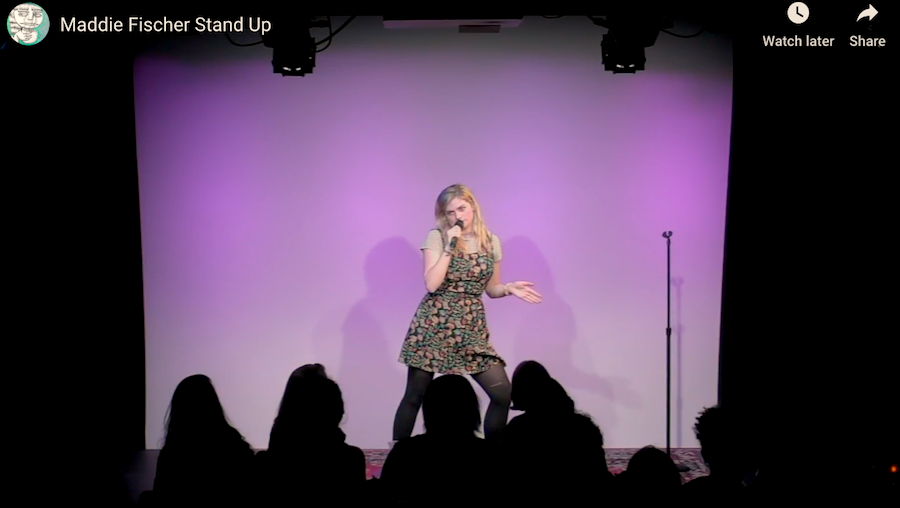
MADELINE FISCHER (USA)
Visual Artist & Comedian
Click for Artist Website
What is your artistic practice?
I make acrylic and multimedia paintings and drawings.
On what projects are you currently working?
I am currently working on producing an interactive painting show in New York with my friend and collaborator, Marissa Crider.
What is the most relevant conversation that you remember having during your residency at Arquetopia?
There were so many important and relevant conversations I had at Arquetopia that really shaped my artistic practice. I think something that keeps echoing in my head whenever I sit down to work is a conversation I had with Francisco. We talked a lot about how representations of the figure are inherently problematic. They can uphold and celebrate dominant culture and powerful bodies in ways that the artist may not be aware of. Francisco and I would sit down with my paintings and he would point out specific strokes and marks I made and would ask "why did you do that" "why those colors" "why that stroke" "why that shape". Those conversations challenged my practice in such transformative ways. I'll never think of my painting practice in the same way.
What changed after your residency at Arquetopia?
I think I have turned away from bodies and figures and more toward abstract compositions, focusing on colors and form. It also changed the way I think about my work and what I'm trying to communicate with my paintings.
How are artist residencies important to the artistic practice?
For me, the residency was so important to be able to have the space to explore and experiment within a structure. Arquetopia also stands out because it doesn't let you aimlessly create, it is rigorous in the questions it makes you ask and accompanying academic material you're expected to read. My paintings will never be the same after Arquetopia, and I am so grateful for my experience there.
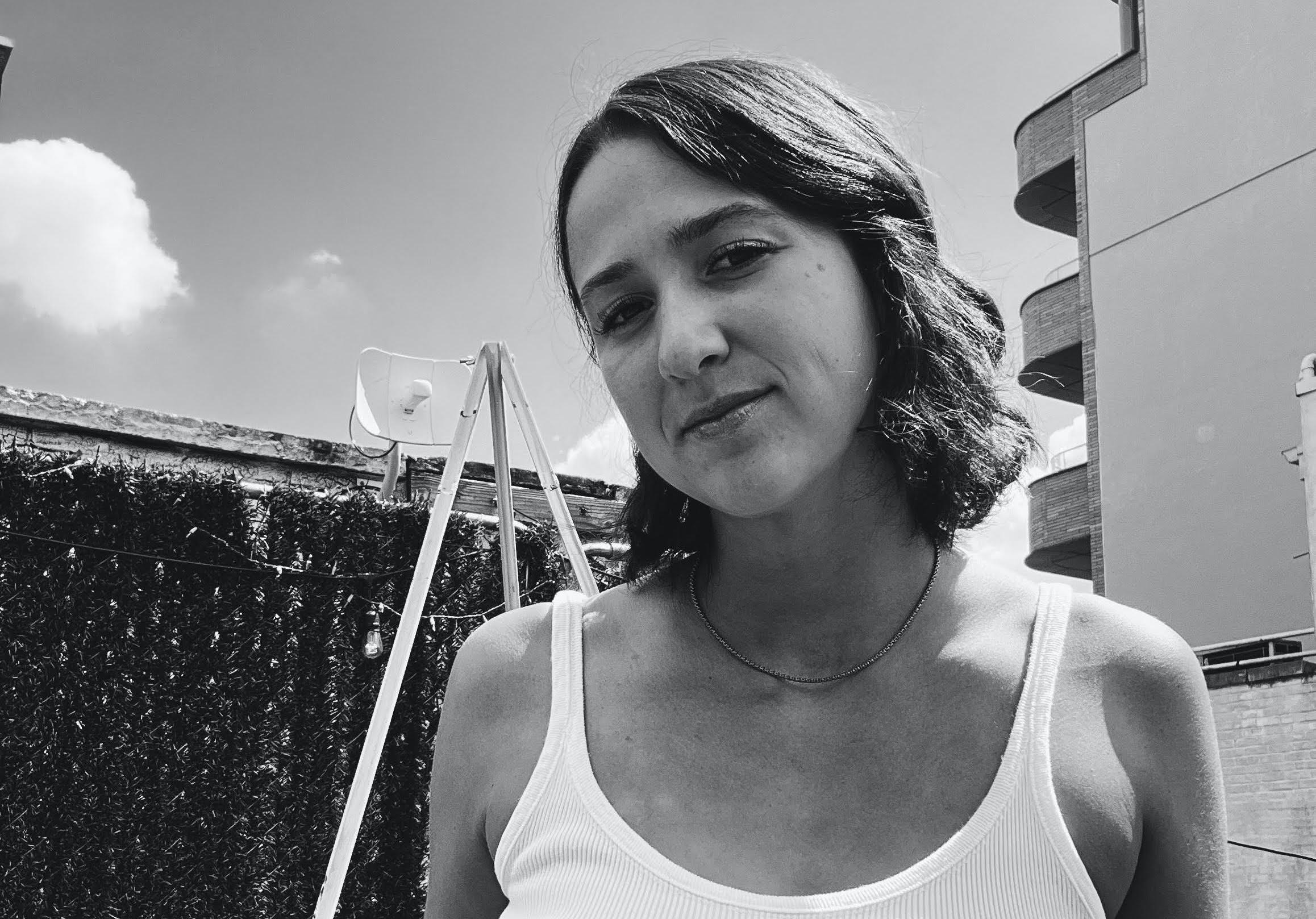
TAYLOR GAERTNER (USA)
Visual Artist – Multidisciplinary
What is your artistic practice?
I am a New York based artist currently working with collage on paper. Stitching/combining found materials with a vigorous paint application, I’ve been depicting simple scenes of my family. My work is collaged, torn and pieced together over many sessions, showcasing the raw and imperfect nature of the relationships highlighted within.
On what projects are you currently working?
As a member of a large, midwestern, Catholic family, my fascination with familial life and what we hold as sacred has driven my current work. I’m working on a series in which each piece is intended to capture a glimpse of the complex undertones within the family dynamic. The images are highlighted with recurrent ideology, in particular “sacred” motifs juxtaposed by objects representing temptation and indulgence. I’ve mixed in a few still life pieces to further hone in on an object’s impact over multiple generations within a family.
What is the most relevant conversation that you remember having during your residency at Arquetopia?
There were so many, it’s difficult to choose just one. “The Trouble with (The Term) Art” was the first reading assigned to me; therefore, I had ample conversations around these themes. The author stated that much of what is today called art was not made as art, and that there is no globally accepted definition of the term “art.” This was incredibly relevant as I began to explore the museums and galleries of Mexico. I was forced to break down my art education and criticize the language and terms I have been taught to use when classifying “art” of various regions and time periods.
What changed after your residency at Arquetopia?
Prior to Arquetopia I was working solely with acrylic on canvas. But after an early critique from another resident, I was inspired to pivot to something more sculptural. I discovered collage and was immediately hooked. Through the encouragement of Francisco and the other artists, my subject matter became my family. I explained to Francisco that I was having “fun” again, criticizing myself for not being academic enough. “That’s great!” he said, and I was off to the races.
The encouraged open dialogue and inclusive environment of the residency space, facilitated very deep relationships between the artists present together. It was the trust I felt with the other artists that allowed me to dig deep into the “why” behind my work. One of the residents in particular helped me draw significant conclusions as to why my family was so top of mind for me at this moment. Since then, I do not underestimate the power of the subconscious and the ways in which it manifests within my work. My perspective has been forever altered.
How are artist residencies important to the artistic practice?
Residencies are incredibly unique, in that they allow artists to create space for themselves outside of their day-to-day lives to reflect and create. They facilitate open and honest discussion through their communal nature, and remove the distractions that muddy an artist’s practice. For me, it had been years since I found myself in a creative flow space. But the ample studio time and lack of rigid structure gave me the freedom to sit with my practice. There was no pressure to produce quickly; therefore, I could prioritize conversations with the other residents and absorb our discussions on a deeper level. The friendships formed with the other residents was unlike anything I’ve known. The residency pushed my thinking and my work in ways could never have been possible at home.
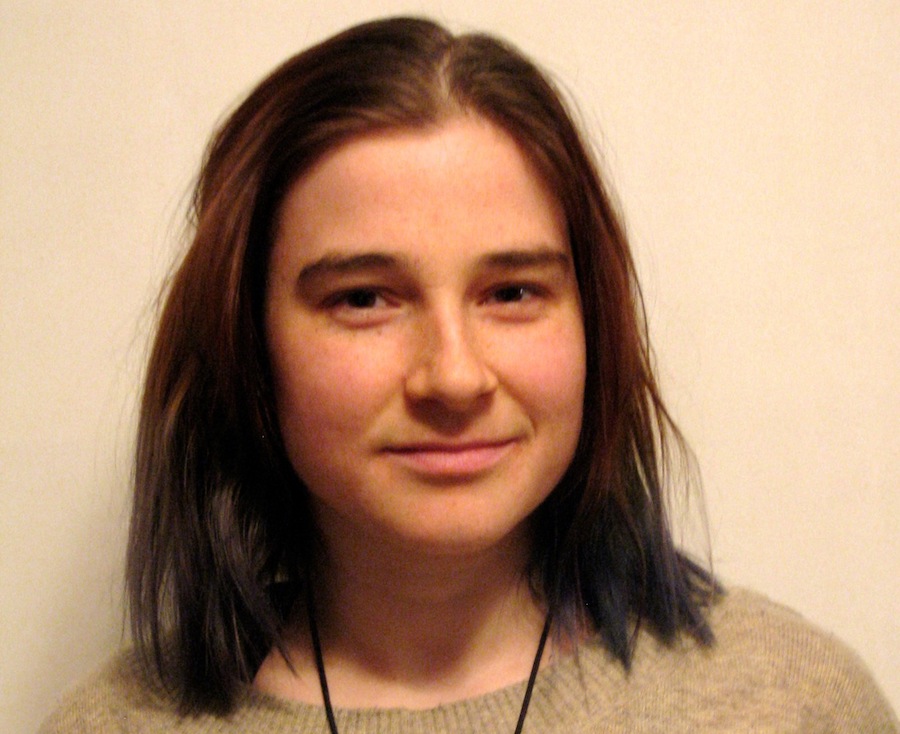
SARAH GALARNEAU (Canada)
Visual Artist – Printmaking
Two-Time Arquetopia Artist-in-Residence: Puebla
Arquetopia 2018 & 2020 Residency Scholarship Award Recipient
On what projects are you currently working?
I’m not currently working on a specific project, but I have several ideas brewing. I would like to make more print-based wall installations inspired by nature and vegetation, which would continue a phase in my work that I started while at Arquetopia.
What is the most relevant conversation that you remember having during your residency at Arquetopia?
What changed after your residency at Arquetopia?
How are artist residencies important to the artistic practice?
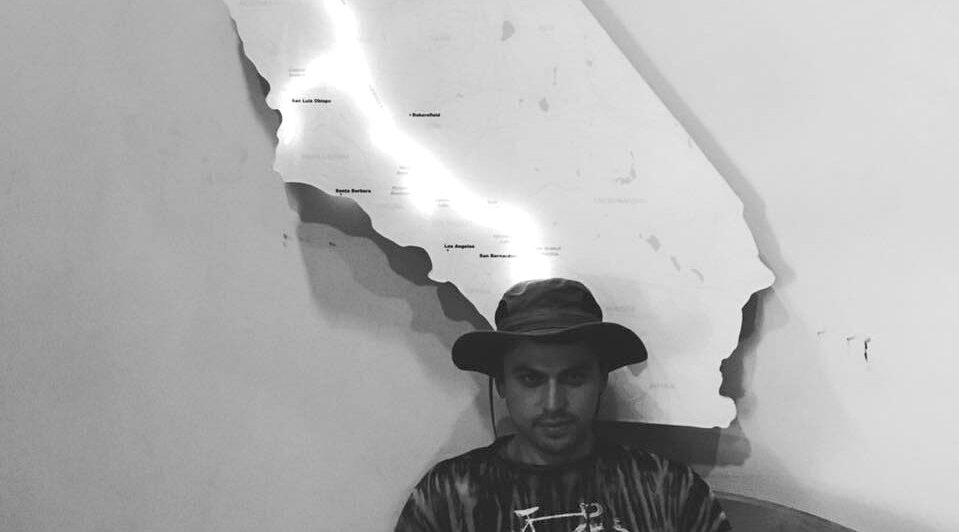
MICHAEL GALLAGHER (USA)
Writer & Poet
Click for Writer Website
What is your artistic practice?
I am a poet from Oakland, California.
On what projects are you currently working?
I am currently working on a project that involves decentralized philosophy and bold, graphic images of poems I wrote. The Idea is to take poetry off the page in terms of visual experience. Eventually, I would like to have public displays and street art campaigns with these images.
What is the most relevant conversation that you remember having during your residency at Arquetopia?
I think the most relevant conversation I had at Arquetopia involved subject matter and voyeurism. As a poet who regularly writes from direct experience and observation, the complicated conversations based around who I was depicting in my work was really important to me. The questions of subject matter allowed my work to become more complex and unsure of itself, which was probably one of the best things for it at the time because it allowed me to grow in new ways.
What changed after your residency at Arquetopia?
After the residency at Arquetopia I felt a renewed sense of reflection. My work is a bit more naked, a bit more raw and unprocessed. As a poet, it feels amazing to get to the core of my feelings. Arquetopia helped me navigate those inner workings in a way that a poetry workshop in the United States has never done. I felt smaller than I once did - which was actually a really positive thing to experience. My ego was reduced and with its reduction came an expansion of consciousness that stuck with my heart and ultimately rewarded my artistic practice.
How are artist residencies important to the artistic practice?
Artist residencies are vital to long-term development of artistic practice. Staying in the same pattern-driven society and trying to experience new ideas can be very tricky. We often find ourselves reproducing the same type of piece over and over again. But once you break out of your artistic bubble and see a different path you realize that the challenges of changing yourself and your work are only for the better. Residencies give us space to evolve.
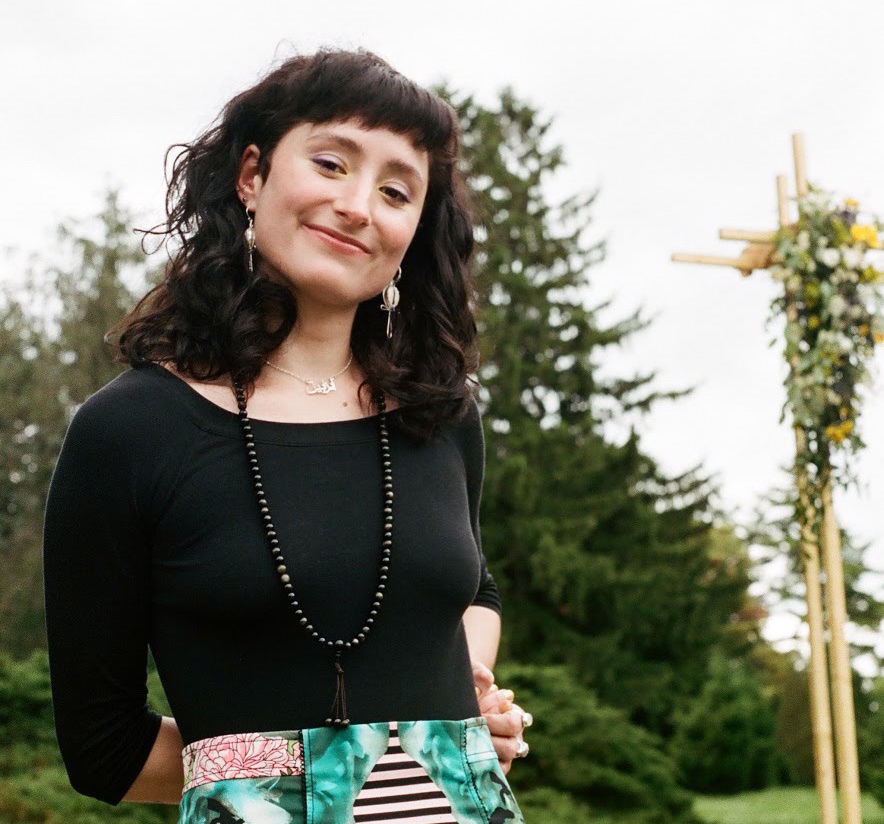
ISA GHANAYEM (USA)
Multidisciplinary Artist
Click for Artist Website
What is your artistic practice?
I am a multidisciplinary artist with concentrations in printmaking, textiles, papier-mâché, mold making, and sculpture. I create repetition with multiples and produce patterns because that is how I experience the world, and is the modality through which I wish to impact it. A lot of what I do becomes installation because I desire an immersive experience. I have also been playing around with the term installation in my practice. I consider wearable objects to be installation in the same way, as they are “installed” onto the body, creating an opportunity to merge with the work.
On what projects are you currently working?
I am currently creating a body of work that I started during my residency in Oaxaca involving plants, women, technology, and the origins of and true meaning of intelligence. On returning back to Chicago after the residency and continuing to embroider, I realized what I was trying to convey needed more than one piece to express itself completely. I liken myself to an octopus at times because I can juggle more than one piece at once, which is how I am functioning now as I watch my work grow, evolve, and shift. I create room for personal conversation with my work, both through its materiality and conceptually. I know I am doing something right if it’s keeping me on my toes.
Additionally, I am continuing to explore mask making through printmaking, hand embroidery, and papier-mâché. I envision my masks as both sculptural talisman, and theatrical displays of what I wish to capture: an individual’s raw energy & unique essence. I believe that the first medium any artist works with is the body in that it is the first tool we begin to express soul through; I see masks as potent extension of the human vessel. The metaphysical reality as being part of physical nature is simply based on reciprocity; if an outcome is desired, the visualization and creation of said outcome is necessary for fruition. Essentially I am creating talisman for the people I love, not only because I love them, but also because unveiling the sacred that is still alive in art is part of my mission.
What is the most relevant conversation that you remember having during your residency at Arquetopia?
This is a hard question to answer, and I don’t want to answer it because to pin point one conversation I had with Francisco and Nayeli specifically would seemingly lower the importance of the conversations I had with them otherwise. The beautiful thing about this program and the extremely thoughtful discourses that occurred was that each new article or topic presented flowed into the next in a way that felt like the cracking of an egg, but from the inside out. The back doors of academia unknown to me at the time were unlocked to present alternative paths of thought. Our conversations were like puzzle pieces fitting together, and I am grateful for all of them.
What changed after your residency at Arquetopia?
After the residency, I felt both much closer to what I wanted to express in my work, as well as just beginning to scratch the surface of something I had never consciously explored before, but had been dancing around conceptually for quite some time. I was able to talk about my passions in a way that I never could have been able to in school due to the discussions I had with Francisco and Nayeli revolving around colonization and its role in aesthetics, as well as colonization’s role in the collective perspective of time and space. I am liberated by these new ideas, as well as feel the responsibility they require to be held.
How are artist residencies important to the artistic practice?
Residencies, especially international ones I feel, are a way to test ideas and perspectives on a bigger stage outside of ones comfort zone, outside of their city, and outside of their usual community. This bringing of ideas to a new environment to see how they stand is crucial in discovering the strength they hold. The combination of learning about the place the residency is located, the application of craft or practice, and the bouncing around of theories and concepts is an energetic mixture sure to impact in exciting ways.
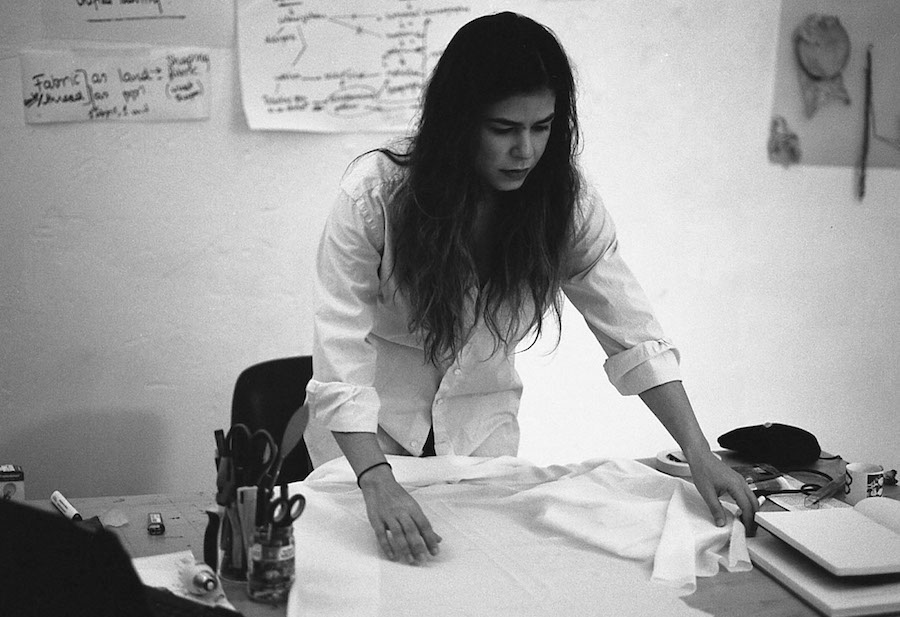
SAMAR HEJAZI (Palestine/Canada)
Interdisciplinary Artist
Three-Time Arquetopia Artist-in-Residence: Oaxaca & Peru & Puebla
Arquetopia 2019 Residency Scholarship Award Recipient
Arquetopia International Mentorship Program Award Recipient
Click for Artist Website
What is your artistic practice?
I am an interdisciplinary artist. As a trilingual woman of Palestinian descent, born in the US and raised in diverse communities in the Middle East and Canada, I use my art to question ideas surrounding identity.
Through meditations on traditional practices and my present environments, my work merges eastern and western styles to express how the crossing of cultures can form new identities. My choice in medium follows the conceptual needs of the piece which has primarily been embroidery, but also includes works on paper and new media.
The cross stitch embroidery technique is a way of honouring tradition. Both the female and Arab elements of this practice share a similar need for dialogue that I am interested in bringing to the forefront of conversation.
On what projects are you currently working?
I am currently working on two projects: and installation and an abstract embroidery series.
The idea of the installation is to simulate the internal experience of the Arab diaspora living in the west through the appropriation of the English language. The piece involves a combination of typographical artworks spanning across paper, embroidery, soundscapes and video of the anthem Mawtini (homeland), an Arabic song by Palestinian poet Ibrahim Touqan.
The second project is a series of embroidery pieces inspired by abstract painting that merge traditional Palestinian embroidery techniques and contemporary abstract paintings from the west. The resulting series will be small monochrome embroidery pieces that attempt to push the already innate qualities of textile while maintaining the compositional and emotional aspects of an abstract painting.
What is the most relevant conversation that you remember having during your residency at Arquetopia?
The first meeting I had with Francisco and Nayeli set the trajectory for the rest of my month there. We were discussing one of the readings concerning the "performance" aspect of art making and the "shadow" the artist casts on it. To say I didn't understand what I had read would be an understatement, so when Francesco asked me what I thought my shadow was I had nothing of substance to say. After that meeting I made sure to reflect on the mental, energetic and physical experience that I was having while embroidering and pushed myself to question the experiences. I examined my internal narratives as well as the cultural and societal conflicts I embodied concerning the craft. This lead to the development of the theme of my new art practice, the formation of identity in diaspora.
What changed after your residency at Arquetopia?
My process of making became more confident and fluid. I learnt to be the observer of my creation and to trust in the direction it is going in. The practice of embroidery taught me patience and presence and the guidance of Francisco and Nayeli helped in the evolution of my perception an analysis of art.
How are artist residencies important to the artistic practice?
Residencies take artists out of their comfort zones and into spaces that require them to transform in order to adapt. This transformation creates shifts in creative, behavioural and mental patterns which in turn allows for new patterns to flourish. In my opinion, art residencies work as catalysts in the evolution of an art practice.
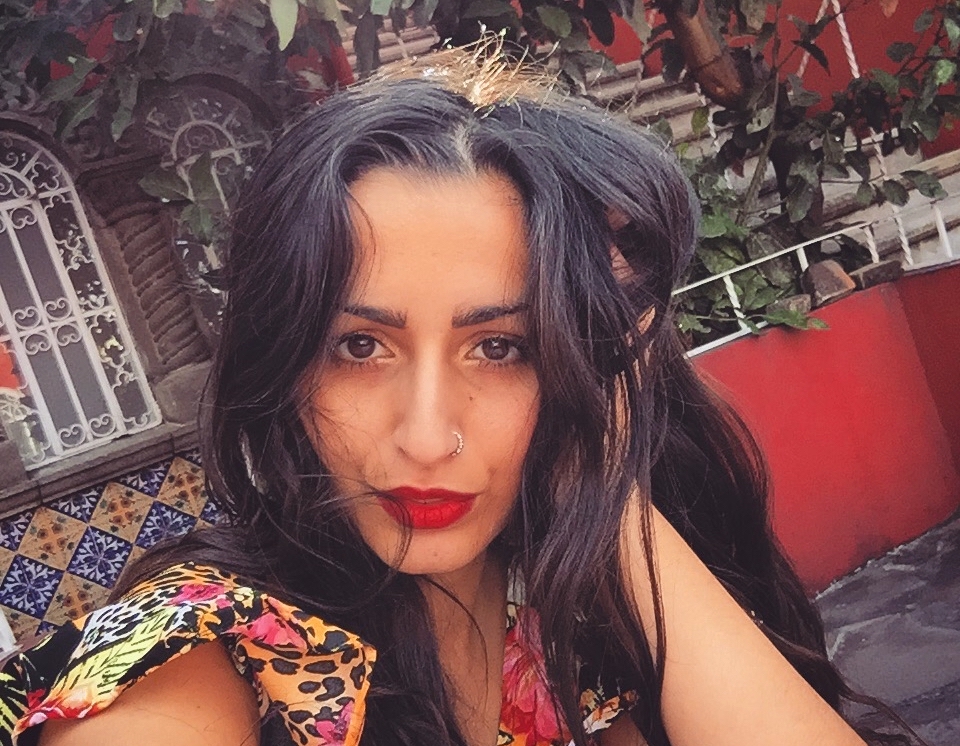
AMBRIN HOWELL (United Kingdom)
Visual Artist & Designer – Jewelry
Click for Artist Website
What is your artistic practice?
I am a contemporary jewelry designer. I like to create pieces which surprise, delight and push boundaries. Within my practice, I take great inspiration from the ancient tale of King Midas and The Golden Touch. Legend dictates that everything the King touched was turned into gold. Even the lowliest, most invaluable objects become trophies. Influenced by this fantasy, I apply my own golden touch when designing, in order to add a little sparkle and wonder to the overlooked and the everyday!
On what projects are you currently working?
Each time I develop a new project, I create jewelry which has a playful concept and tells a story. Currently, I am continuing a body of work entitled “Chewing Gum Pearls.” Throughout the collection, beautiful freshwater baroque pearls are used to represent squished up pieces of gum. Discarded chewing gum is conventionally seen as gross and unremarkable; however, each time somebody squishes up a used piece of gum, an entirely unique shape and form is created. In this way, each piece of old gum can be interpreted as a unique and rare jewel! I love the weird and wonderful forms that baroque pearls feature and I love that no two pearls are ever the same. To make the jewelry, I use an ancient technique called lost wax casting which allows me to form individual settings that fit each pearl perfectly. I also use a lot of pearls that have been cultured into specific shapes, such as stars or crosses!
What is the most relevant conversation that you remember having during your residency at Arquetopia?
A common thread throughout my practice is the idea of taking “normalised” ideas and subverting them in order to challenge traditions and push upon the boundaries of convention. I had many conversations with Francisco and Nayeli about this, and what has resonated with me most is the notion that there is a difference between subverting something as opposed to setting something free. By subverting ideas, I create alternative conventions that still stem from a point of control; however, by completely re-imagining and de-constructing, I am able to contribute much fresher narratives to the world of contemporary jewelry. These conversations have helped me develop and design pieces of conceptual jewelry that I believe to be multifaceted and timeless.
What changed after your residency at Arquetopia?
I have continued developing the work I started at Arquetopia, and in 2021, I plan to exhibit a new collection of jewelry featuring seven complex designs. I researched and developed these designs whilst on my residency and I am currently producing each piece by hand back in the UK. The jewelry will explore the seven deadly sins and aesthetically is inspired by the sugar skulls (calaveras) I collected whilst on my residency in Puebla. The working title for the exhibition is “I Sin, Therefore I Am,” a play on the famous Descartes quote and an idea that came to me as a result of reading the essays assigned to me by Arquetopia.
How are artist residencies important to the artistic practice?
I believe that artist residences are invaluable to artists at any stage in a career. Speaking as an emerging designer, it can be so incredibly difficult to balance oneself between creativity and commerciality. Making a living and making masterpieces don’t always go hand in hand. Taking the time out to immerse yourself within a residency project gives you the space to develop truly thoughtful, considered and well researched concepts, which ultimately allows you to create richer work and contribute the best you possibly can to your field.
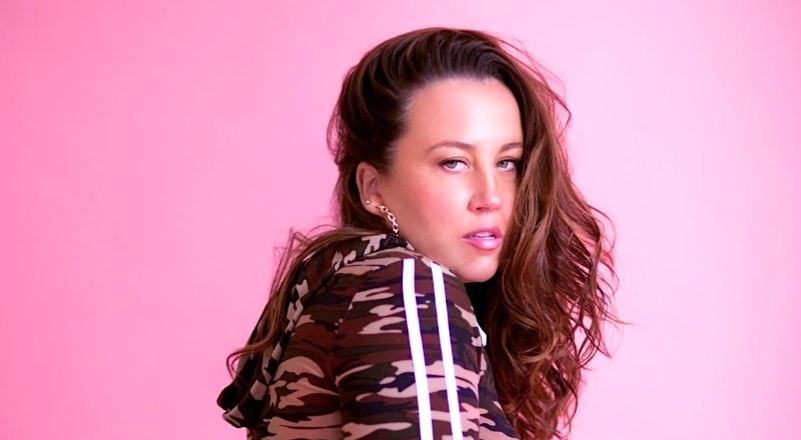
KATTI KHAN (Australia)
Writer
What is your artistic practice?
Creative Writer – novelist and script writer.
On what projects are you currently working?
Currently, I am working on my debut novel called None of Your Business, based on a collective group of women working in the inner city of a legal Melbourne brothel. I am also working on two screenplays. One is loosely based on my novel set in the years 2016-2020, which saw a huge shift and a forever change in the industry worldwide as we knew it. The other script is an Australian “western” called Hang Her Head, set in the Gold Rush era in the early 19th century.
What is the most relevant conversation that you remember having during your residency at Arquetopia?
My project all came together in my mind when I was speaking to Francisco and Nayeli about the weekly essay readings. Two things were said to me that stood out. 1. Disrupt the system / Interruption = distortion; and 2. (paraphrasing) Suggested my project is based on the social construct of what is the masculine. This is what got me excited because yes! I love a challenge, as I am rebellious at heart. My project is not to exploit or expose anyone, but to stand witness and describe the nature, the mindset, and the act of buying and selling sex.
What changed after your residency at Arquetopia?
On my return to Melbourne, for me personally, I had a greater appreciation of my own life journey and the experiences within it. And as a writer, my time at Arquetopia gave me a deeper understanding of the questions I had going into the residency. I feel the weekly readings and conversations have changed the way I am approaching my project and how to better my research for future projects.
How are artist residencies important to the artistic practice?
Artist's residencies are an important part of a creative person’s practice. A special bond is formed between artists that can be expressed thoroughly in conversations. These conversations are based around the craft and practice of our projects. With Arquetopia, I had the privilege of meeting people from different countries and learning not only more about my own craft and myself but other people’s styles and approaches to their work. I am excited to continue reaching out to artist residencies in the future to help with my craft, to meet amazing people and most importantly to have unique and fun experiences.
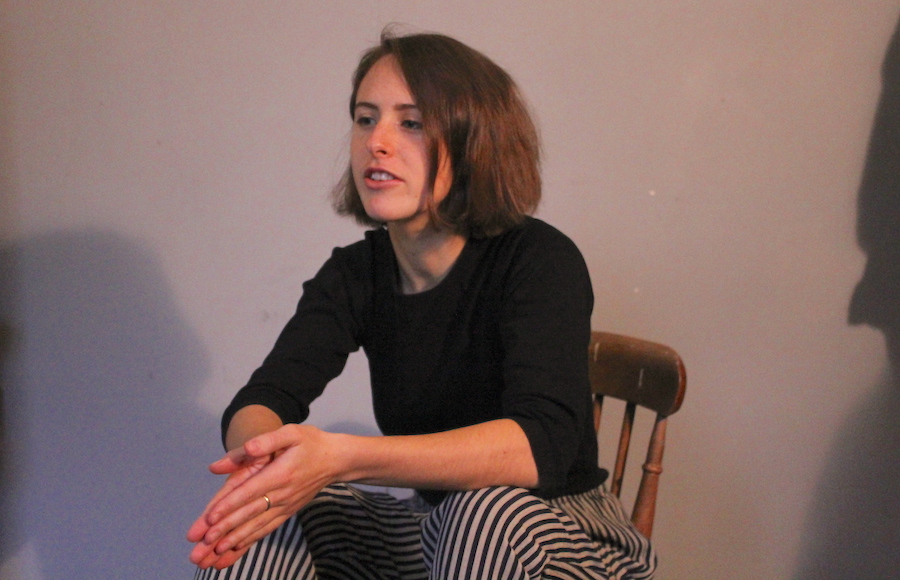
PENNY KLEIN (United Kingdom)
Visual Artist & Musician
Two-Time Arquetopia Artist-in-Residence: Puebla & Peru
Arquetopia 2018 Residency Scholarship Award Recipient
Click for Artist Blog
What is your artistic practice?
I am an artist and musician currently based in London.
On what projects are you currently working?
I am involved in a few different projects at the moment. Most recently I’ve just finished a short residency in South Pembrokeshire, Wales. Leaning into the idea of the visiting artist, and their (sometimes) problematic involvement with short term, community related art, I was interested in the expectations and perceptions of a new place in such limited time. A meditation on the needy artist, I placed ads in the local paper, in shop windows and online for local residents to take me on a walk and show me their favourite place. I documented my side of everything, from the agonising process of wording the poster, to the communication with the venue, my anticipation of the meetings, worries about weather, the responses I received and any antagonisms along the way. I went on daily walks with a different person and reflected on these encounters, the shifting impressions I was having as well as the difficulty of translating the intimacy of these experiences. The residency culminated in a performative show and tell, which wove together my introspections with work I made in response to the walks. Music, short films, and story telling offered a revealing self-exposé as a gesture of gratitude to everyone who had helped.
I organise and coordinate a platform called the Surround with musician Rose Dagul. We host a regular, nomadic DIY event for musicians and performers to come together and test out new ideas in London. It’s a constant motivator to perform and create new work ourselves and provides a solid framework for proj- ects with other artists and musicians locally. As a platform we also compile music compilations of every- one’s work when we can, and are working on self publishing and releasing our own music, bypassing some of the more established routes and taking everything into our own hands as much as we can.
I’m also working on an ongoing personal project, spanning performance, illustration and the written word, examining the perception of our bodies while experiencing ill health. I am currently preparing a musical and choreographed performance that explores the shifting relationship I have had with my body after it stopped behaving quite in the way it used to, following a parasitic invasion. Thinking about change, mystery, blame, anxiety, fear of chronic illness, symptoms ‘being in the mind’ and the fragile ecosystem that sits inside of us, the work is a playful meditation on losing control and what it takes to claw it back.
What is the most relevant conversation that you remember having during your residency at Arquetopia?
I think the most significant challenge I got was very early on and regarding my role as the observer. I had proposed a project that would involve me doing a lot of observational drawing, and I was made to look at what it means to be the invisible observer, and the role of scribe within colonial history. It made me thinking about ways to confront my own presence in public space, rather than hiding behind it, and consider the connotations of the all-seeing onlookers touched on above, this idea of the observer and their assumed invisibility is something I think about a lot. It took me a little while to return to observational drawing, but as I do I am so much more aware of the editing decisions, both in terms of setting myself up in a situation and also the process itself.
I also started to question more generally my emphasis on aesthetic and to feel liberated from the ‘page’.
What changed after your residency at Arquetopia?
I had started to confuse the potential to deconstruct with something that could only happen on paper, within an image, and was reminded of physical intervention as a tool, and public space as a stage.
How are artist residencies important to the artistic practice?
They are so vital! A good residency provides the space and time to explore something in depth and follow tangents without constraint. I wouldn’t say they are free of distractions exactly, but they are free of our usual distractions. They declutter our routine which means we can really engage in our surroundings and be sensitive to new or alternative ways of doing things. They can provide really useful interruptions to the way we think.
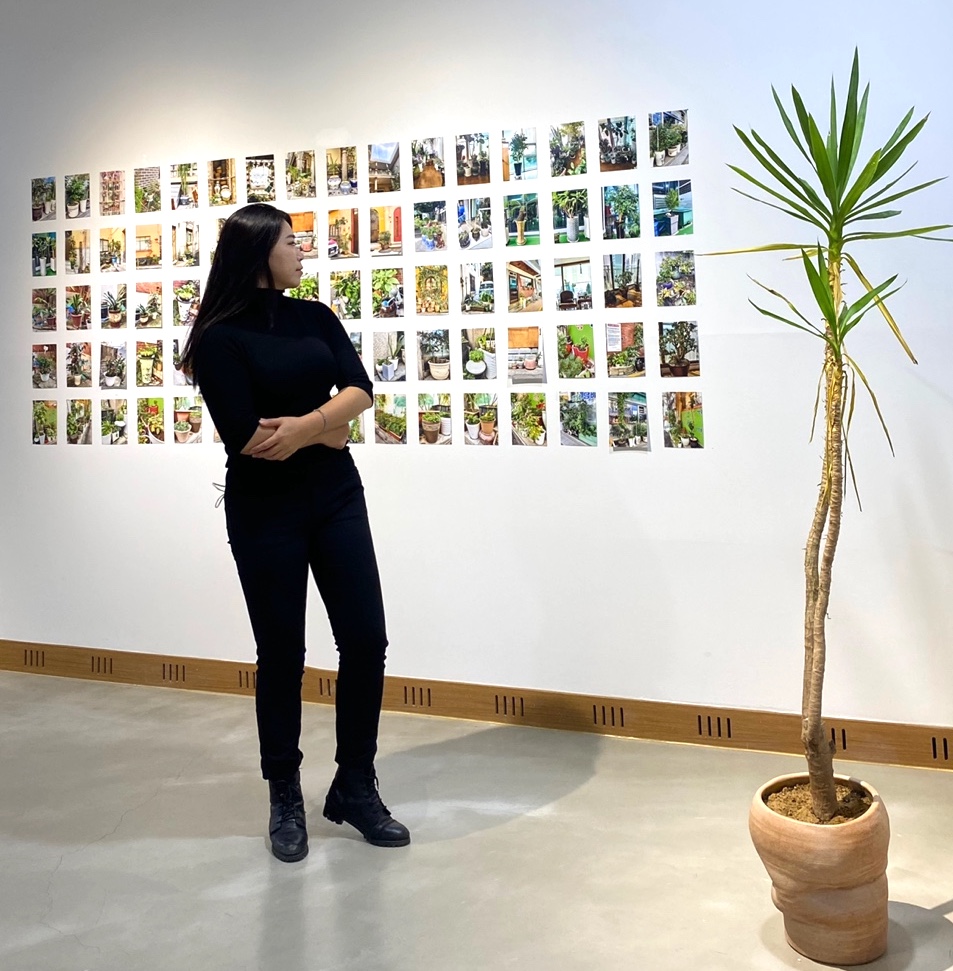
SOYOUNG LEE (South Korea)
Visual Artist – Ceramics
What is your artistic practice?
I am working on various visual arts based on ceramics. I mainly create artwork from a feminist perspective on identity and space. In particular, I am interested in the borderline nature of identities that are scattered outside and on the periphery of a fixed language or frame. I create art from personal emotions, experiences, or observed phenomena around me.
On what projects are you currently working?
Recently, I have been working on seeking a turning point for having a conventional identity in a fixed place. What I made in Mexico last summer is based on what I and my family felt as we moved. I’ve seen my mother’sfavorite flower pots make up a huge part of our luggage when we move. I am not very interested in flower pots, so I started to ponder what flowerpots mean to my mother.
I wanted to talk about the mobility of roots by using a flower pot as an object and metaphorizing it as a subject. The flowerpot, the main theme of the work, is depicted as a dynamic object that moves and scatters the passive image of a plant by its roots. Of all things we believe to have our roots in, we are actually only a lingering being. Nothing is static and fixed.
So, I purposely changed my work environment completely to a village in Mexico where culture, environment, and technology were unfamiliar. Having received pottery education in Korea, I used the techniques and materials I was familiar with to create my own works in the Mexican way in workshops with local artists for about two months. As the finished works were produced, the cultures and technologies of Korea and Mexico were combined in a heterogeneous manner. However, as a result, it was interesting to see that a work that reflects the artist's own unique feelings well was completed. In other words, I was able to discover through this project that the meaning of individuals and places can become unique in the space newly occupied by the artist or in various exchanges. To my family, flower pots are like a declaration to live in harmony with the sun and wind in the place where they are located. Therefore, the meaning of space has been changed anew.
What is the most relevant conversation that you remember having during your residency at Arquetopia?
In the residency, I tried to provide various topics and theories related to my work. Every week, I collected and introduced information and materials that would be helpful in my work. I was interested in the effect of escaping from a fixed place on dispersing identities. For me, space or place was replaced by race or class, and I explained philosophical themes about it. I spoke of a historical case that can be explained from the Mexican point of view. It was very interesting because it had a fundamental commonality with the social problems I observed in Korea.
What changed after your residency at Arquetopia?
I have experienced many changes during my stay in residency, which can be divided into work and personal aspects.
I was able to learn a serious attitude towards art by meeting people who work in various fields. We were able to share the process of finding a unique way for each to express their own story. It has been very inspiring and encouraging to me and I have learned to enjoy art more.
On a personal level, there was a change that made me feel healthier inside. The artists in the residency gave each other unlimited support and interest and formed a camaraderie. Such friendly relationships built trust in me before I started making art, and helped me to be more confident in my artistic practice. We have become more confident. In particular, I was able to exchange influence on a human level by working with writers of various ages. It was an experience that broadened my view of life.
How are artist residencies important to the artistic practice?
Arquetopia was my first artist residency experience. Mexico, like Korea, has a history of aggression and domination and was on the periphery of the Western-centered cognitive system. Also, since Puebla is a historical district where you can feel Mexico’slong history and culture, it is clear that a very new world is for me. I wanted to be fully assimilated into the people’scountry, so I made new adjustments to their language, weather, and way of life.
Arquetopia, an international residency established in the historic center of Puebla, was a very interesting experience for me. In the center of the city of tradition and history, strangers with different eye colors gathered and talked. Their traditions and history have been revived in a new light in the modern world. In other words, residency serves not only to provide an environment in which artists can work but also to share knowledge and regenerate the sense of place in the area. In the past, Puebla reflected in the eyes of a different color was only an object of conquest, but in the present, it is clear that it is a different image. At first it felt like a very quiet little town. It turns out that various industries such as textiles, paper, and automobiles are being produced in Puebla, and numerous museums and art galleries are using cutting-edge technology to vividly convey their history and culture. In a charming city where tradition and modernity coexist, residents were able to enjoy both the calm and fresh stimulation of a new space for creativity. The role of international residency, which opens the door to the world as a base for creative artistic activities, is particularly closely related to the theme of my work this year. As part of my research on space and identity, I chose a residency in an unfamiliar place far from my hometown to practice physically that I can transport my place. Residents can freely move and stay at the root, but it was like my flower pot object that grows and interacts in harmony with all conditions of the space in which it is placed. Since the residency was a common land, I was able to naturally actively exchange opinions about my work with many people. The perspectives of people with different backgrounds and knowledge were very new and valuable to me.
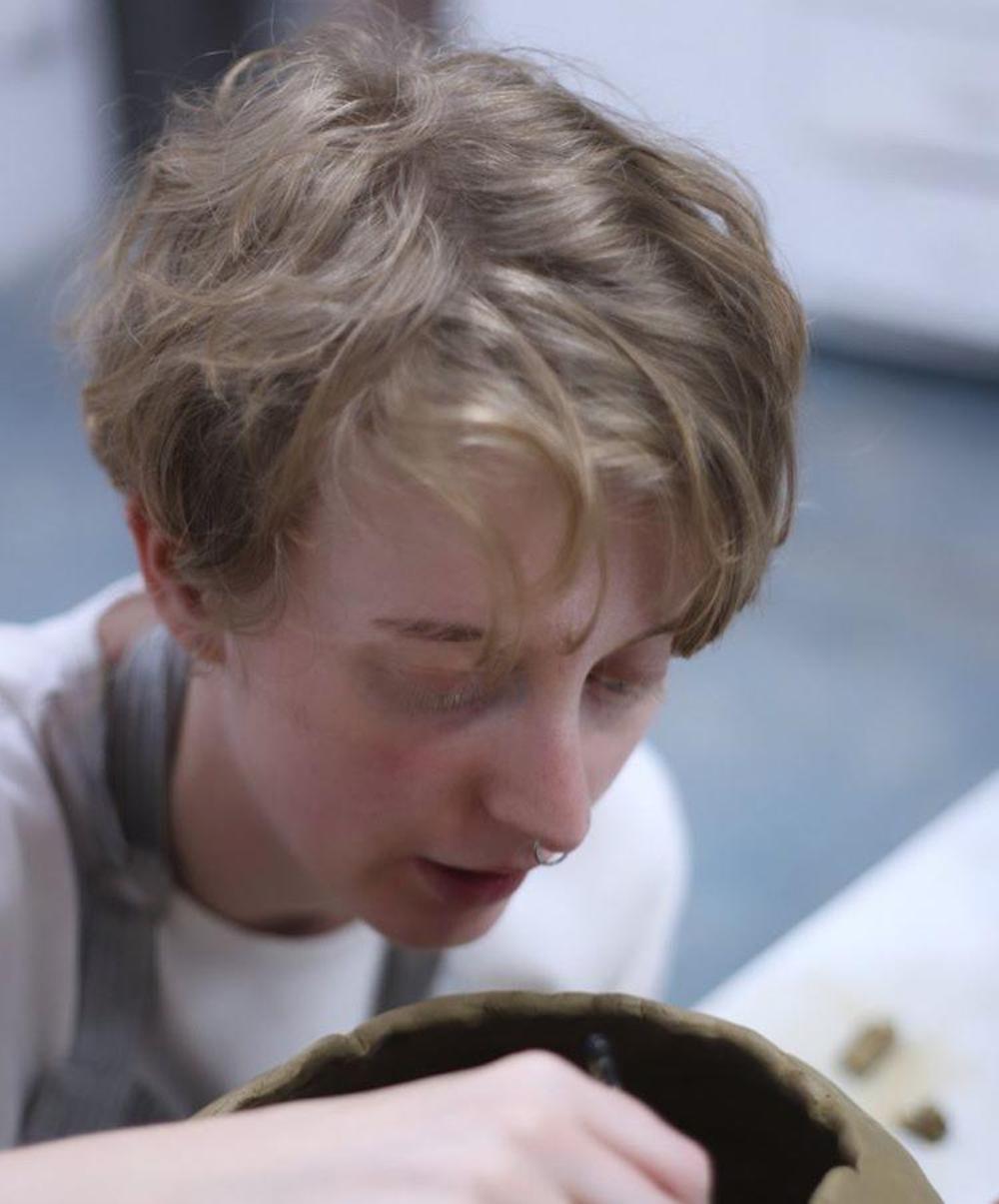
JESSIE LEWIS (South Africa)
Visual Artist
What is your artistic practice?
I am a multidisciplinary visual artist from Johannesburg, South Africa. I have a background in film – particularly in research, writing, and editing. As a visual artist, I have worked with sculpture, installation, painting, animation, jewelry design and, most significantly over the past couple of years, ceramics. It was my fascination with ceramics that brought me to Arquetopia for the ceramics residency in 2019.
Across these disciplines, my practice is usually concerned with notions of home, forced migration, family, family history, and identity.
On what projects are you currently working?
I am currently creating a body of ceramic pieces through which I’m attempting to unpack and understand my relationship with the domestic space. Some of these are large pieces inside of which I’m arranging a series of smaller pieces. The way I arrange everything is a big part of the work, and I am also starting to combine my ceramics with found objects, photographs, drawings, and other things that I make. I am also thinking about how I could incorporate film into all of this. Hopefully, it will come together as a congruent solo exhibition soon.
What is the most relevant conversation that you remember having during your residency at Arquetopia?
I had many wonderful, eye-opening conversations with Francisco, Nayeli and the rest of the Arquetopia staff, as well as with my fellow residents. The most memorable one for me was one I had with Francisco and Nayeli in a meeting roughly halfway through my residency. I had been working on themes of home and domesticity for quite some time, using fluffy terms like “nostalgia” and “belonging.” Not only were these terms pretty vague, but they also didn’t really fit with my work. Over the past few years, the imagery and sculptures I create have increasingly told stories of violence, loneliness, suffocation and discomfort – not exactly things that evoke feelings of nostalgia or express a sense of belonging. I had never deeply thought about why I always drifted towards these kinds of images, but throughout the residency, Francisco urged me to explore my intuition more, and to try and understand why I do what I do. I made a comment to him that all the figurines I was making were either armed with knives, crying or hanging by their necks, and he pointed out to me that this was because I was expressing the feelings of discomfort I associate with home. It seems extremely obvious to me now, but it was a very enlightening moment for me at the time, as I think I had been trying to avoid actually naming these issues. But once Francisco identified them in such a simple and straightforward way, I began to feel much more okay with the stories I actually wanted to tell.
What changed after your residency at Arquetopia?
Before the residency, I often used to make things with very little planning or forethought, letting my intuition guide me, and thinking that my work could only be driven by a feeling, rather than a thought or idea. Because Francisco had pushed me to dig deeper into where my intuition came from, I now feel that I work much more confidently, decisively and conceptually. That’s not to say I ever know exactly what a finished piece will look like, or that I work with a very specific blueprint in front of me, but more that I now work with a clearer idea in my head of what I’m trying to say. It’s made me feel a lot less scattered when I make, and I generally tend to like what I make more than I used to!
How are artist residencies important to the artistic practice?
I think in a practical sense, they are great because very few artists are actually able to be within their artistic practice full-time. Most people have side jobs, or get caught up with general administrative nonsense, or are overwhelmed by the endless terrors of life and the planet, and so to get a space to just make and think and talk about your practice is something rare. The fact that I could just be in the studio all day and night without worrying about the fridge being empty or the dog needing a walk meant that I could just be fully immersed in whatever was in front of me.
I also think that doing an artist residency can take you out of your comfort zone and force you to face people, spaces and cultures that are different from your own, which ultimately expands your way of thinking and making. A residency as intellectually stimulating as this one forces you to challenge the way you have been working, learning and thinking in the past, and I felt like it made me use my brain in a way that I hadn’t for a very long time.
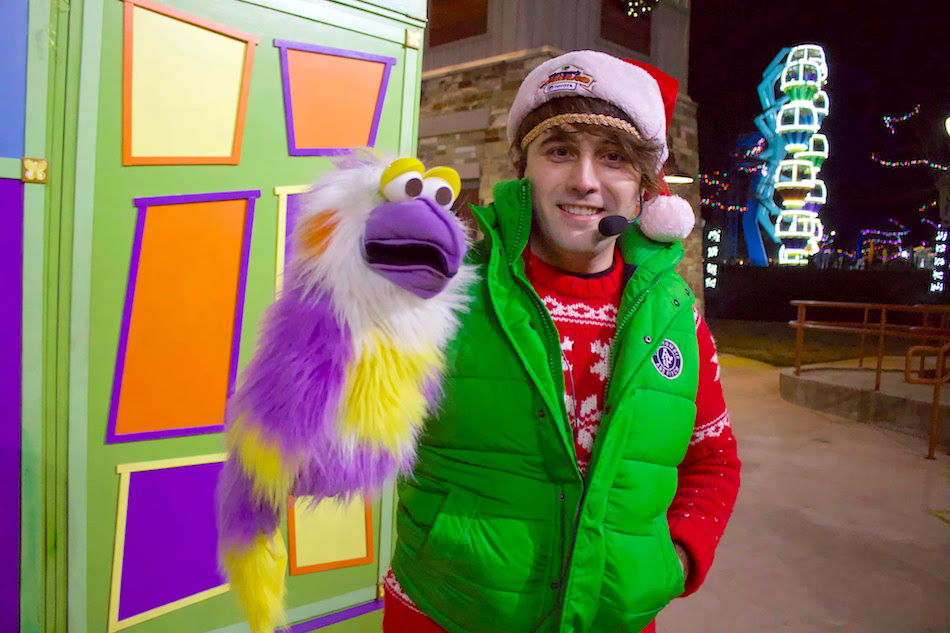
SCHEDEL LUITJEN (USA)
Multidisciplinary Artist, Writer, Actor
Click for Artist Website
What is your artistic practice?
I make comics, plays, toys, short stories, and movies. Since 1999, most of my work has revolved around the universe of a superhero called Hero BLOB, who can turn into any liquid.
On what projects are you currently working?
I'm working on a series of comic and short story reworkings of some early work with Hero BLOB for the 20th anniversary this year. In connection with that, I'm creating a few foam hand puppets to do a short film series featuring Chilipepperman and Hag Lady Bobo, recurring characters in my work.
At the same time, I am continuing a watercolor series illustrating some of my short stories. Hopefully I’ll be getting them out in the form of a zine in the next month or two.
I'm also co-writing an adaptation of Much Ado About Nothing for a mixed special needs and typical cast, which is going to premiere at the ultra-accessible theme park Morgan's Wonderland in San Antonio later this year.
What is the most relevant conversation that you remember having during your residency at Arquetopia?
During the residency, we were exposed to a lot of different essays and readings, and the discussions with the Arquetopia staff were more challenging and exciting than I had expected before coming to Puebla. I can be really opinionated when I approach a piece, and I came to the meetings generally ready for a mental wrestling match worthy of Arena Puebla, the lucha arena in town. More often than not, though, I found that my opinions were acknowledged and instead of meeting resistance, I was shown down completely unexpected paths of thought.
I went to school for Classics and theology, so I really don’t have a lot of background with modern history and social issues, and every week was eye-opening and sparked further explorations in a dozen directions-- luckily, the people at Arquetopia had resources and knowledge of where to look to find more information in all the things I was interested in.
It’s difficult to choose a most important conversation; these talks were really full of interesting ideas and challenging concepts that had a cumulative effect on my thought generally. One thing sticks out though, which is probably far from being the most profound or wildly interesting moment of the residency, but affected my own thought more personally and starkly than any other conversation with staff or my fellow residents.
During one meeting with Francisco and Nayeli, I was airing my worries at feeling directionless at home in the States, in spite of doing more and better-quality work than at any other time in the past. Without missing a beat, Francisco said something along the lines of, “Of course you feel that way; you’re not fulfilling your place in the Capitalist system.”
It just kind of flowed out as if it were really simple and obvious (which maybe it is), but it struck me and has stayed with me since then. The statement encapsulated in its assumptions an acknowledgment of my dignity as a human being and an artist, and set me to thinking for perhaps the first time that feelings of self-doubt I have sometimes about my work or my path in life are not necessarily entirely self-produced; there is such a thing as a social pressure to produce salable work and do profitable artistic ventures. The thought has come back to me time and again since my time at Arquetopia, and serves as a source of strength as I realize that my priorities are, in fact, different from what is expected of me and that the alternative set of priorities I have is legitimate; I have agency and control over the work I produce and the reasons I produce it. What was a source of shame before is often a source of strength for me now. This has been especially comforting as I have come home to a world where we are increasingly expected to curate and monetize our social presences, especially as non-established artists, online and in person. Those things are fine, and building a following is fine, but it’s never been my priority and I’ve come to the realization that it’s fine for it not to be. I’m not and don’t plan to be a “content creator”; I’d rather be an artisan or an artist.
At the risk of sounding like a 16-year-old art school wannabe, I like to make art and to express my ideas, and so that’s what I do.
What changed after your residency at Arquetopia?
The biggest change is just that I've been a lot more productive; with the exception of some of the heavier work days during December, I've worked on one project or another every day. I’ve also followed up on a lot of the things I discovered in Puebla that consumed my interest. While I was there, I got to do several training sessions with a long-established luchador, which fed my obsession with Lucha Libre as not just an aspect of culture, but as a physical practice. I’m still seeking a way to play that out in Texas (where outposts of lucha libre culture do exist), but in the meantime I’m training my body so that I’ll be ready when I do find a way to do that!
How are artist residencies important to the artistic practice?
Beyond that, the opportunity to live and create in a different place sets off a number of mental and creative connections that can collectively change the nature of one's work. For instance, I was exposed to the painter Agustin Arrieta in several museums in Puebla. The color tones and the textures of foods in Arrieta's still life paintings struck a chord with me and I mixed a whole new color palette for my watercolors, which I still use in a lot of my paintings. Before I encountered his work, I had rarely paid any attention to still lifes. My residency provided exposure to new art and the contexts that made it possible to understand it, which is vital in helping an artist deepen their own work.
Residencies also expose the artist to other resident creators, and that's something I certainly enjoyed! I met a number of great artists on my residency, who all worked in different media and utilized very different themes from me. But we ate together, we worked in the same place, and we shared ideas and resources. One artist helped me track down some very rare Mexican Lucha Libre comics that have since influenced my work quite a lot, and I continue to correspond with another artist who is a ceramicist, just to share our work with each other. I made some real friends and learned about their work in a context that allowed us to share and critique our work together (and also eat a lot of great food, which is pretty much the key to all my friendships).
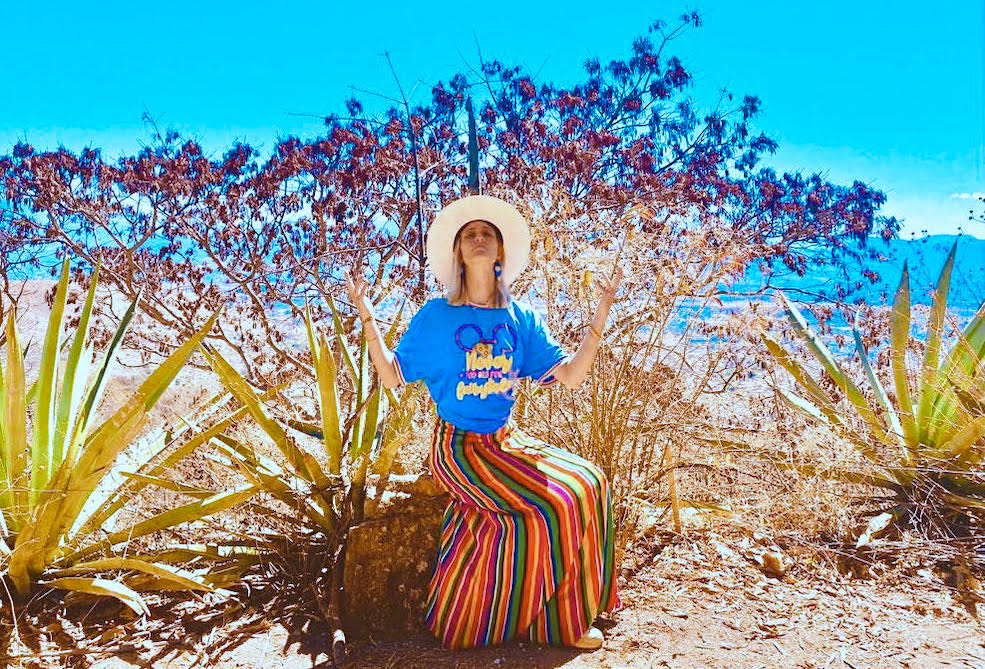
DANAH MCCOLLUM (Canada)
Multimedia Artist
Click for Artist Website
What is your artistic practice?
I am a multimedia artist with a strong focus in visual art, textiles, music and poetry. The process of art making started out as a form of therapy for me and continues to have this nurturing encapsulation to my spirit to this day: as a teenager, I would write poetry and share it with a friend in history class, and we would write the word “Gold” beside the ones we loved. Poetry later in my early 20s served me as a way to express deep and painful emotions especially connected to my experience as a Queer youth living in an environment at the time that was not supportive and very oppressive. There was an explosion of feeling inside of me to live my truth, express who I am creatively and complexly and speak my mind and spirit; I found this language through poetry. This would act as a gate way drug, so to speak, to the art world. I found a realm where I could explore deeper parts of myself and process my connection to the world around me; this is what I continue to do through many various mediums, whatever one speaks to me in the moment.
On what projects are you currently working?
I recently released my first recorded album online called “Old Fortress.” You can describe it as dream folk, and it follows the journey of two lovers parting ways with new love found.
I am working on crocheting a blanket using all the wool I dyed with natural materials during my study at Arquetopia. The dyeing process I learned is ancient knowledge passed down generationally in the Zapotec community in Oaxaca, Mexico. This piece is an homage to my learning experience and a compass to remind me of all the colours I can capture as I continue to explore natural dye.
I am also working on piecing together a poetry book, I weave poetry writing in and out of my daily living; I continue to document it in hopes to form a little book one day.
What is the most relevant conversation that you remember having during your residency at Arquetopia?
Taking time to discuss the power and awe of colour and the affect it has on humans. Learning and discussing the long history of slavery in connection to the production of natural dye, including making shades of red with cochineal and various blues with indigo. There were 18,000 indigo slave plantations in Western Province alone when you look at parts of this history. Often, people who were used as slaves would mix the indigo vat with their bodies. This conversation was important for me to have and be aware of as I continue to work with natural dye as it is important for us to know our history, and have reflections on how we use resources such as colour that was once used as a currency to trade human bodies: how can we transmute it into a currency of love, freedom or higher vibrations of consciousness and peace.
I also loved the conversations about art having the power to create change.
What changed after your residency at Arquetopia?
Having a better understanding of the history and knowledge of natural dye and just how extensive and complex it is in our world. Deepening my exploration and reflections on the profound effect color has on us as humans, and carrying this with me as I work with it as a vibration and element within my own art.
Simultaneously learning the history and knowledge of natural dyes used specifically in the Zapotec community in Mexico, one of several Indigenous communities in Mexico that practice techniques and ancient knowledge that stretch back more than 1000 years. This allows me to sit in my process in this present moment, feeling how my journey is one of very many in the eclipse of time, and having honor for this, culturally, energetically, humanistically, historically, medicinally and spiritually.
How are artist residencies important to the artistic practice?
My time at Arquetopia is the first artist residency I have ever experienced. It has brought me a sense of community with other artists, a space for me to focus in on the development of my craft, and learn many new things that makes me grow as an artist. Also, attending an artist residency in a different country allows you to connect with a culture and environment in a meaningful way, connecting with the people around you and sinking into rhythms of a new space while being present. I used to call myself a bedroom artist because I created a lot of my art alone in my room. I am in a new chapter of my journey, finding more community as I continue to create, and this supports and allows my art to flourish in ways I could not have imagined on my own. Artist residencies definitely contribute to this sense of community and settling into a new space and environment can spark great inspiration.
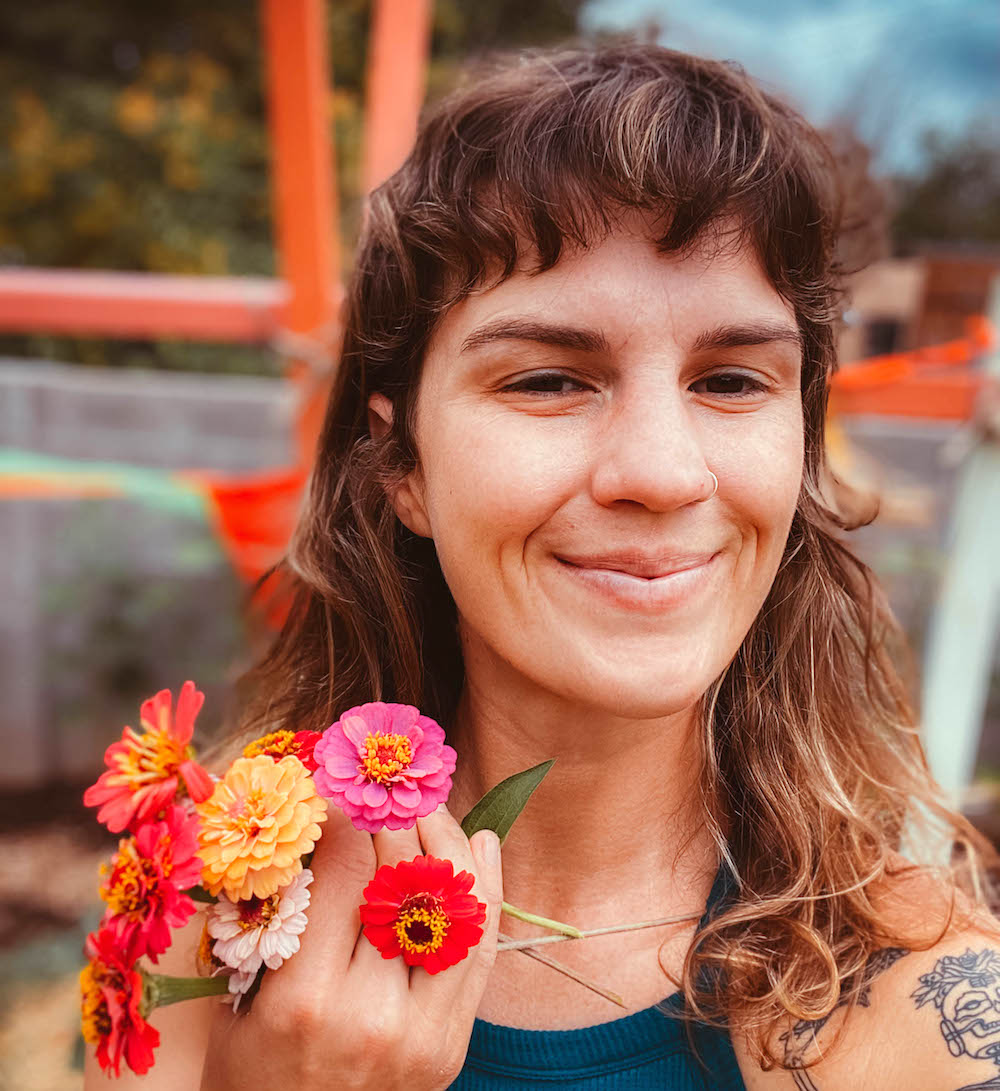
MADISON MCCLINTOCK (USA)
Visual Artist – Fiber, Film
Click for Artist Website
What is your artistic practice?
I am a fiber artist and filmmaker. I work with earth and low-impact synthetic dyes to reimagine reclaimed fiber. I delight in exploring the transformative nature of color and our symbiotic relationship with the natural world.
On what projects are you currently working?
I participated in Arquetopia’s Instructional Residency for Natural Dyeing in Oaxaca in November 2021 where I had the honor to work with Fermina Ruiz Gutierrez, a Zapotec fiber artist from Teotitlán del Valle. My intention for the residency was to rest in present awareness in my artistic process and refine my approach to dyeing through repetition and incorporating traditional Zapotec techniques learned from Fermina. During my time in Oaxaca, I created sets of prayer flags in cotton and embroidered with wool. This end product was my way to explore how to create all the tones of the color spectrum using earth dyes from plants and insects. Since my residency, I have started a small business called Solar Plant & Dye Stuff, in which I dye cotton and wool clothing with both earth and low-impact synthetic dye materials using solar electric power. I continue to refine my process and reflect on my responsibility as a maker to source and work with earth-conscious materials.
What is the most relevant conversation that you remember having during your residency at Arquetopia?
All of our conversations encouraged deep reflection as a whole but a general takeaway that seems to become richer and reveal itself with time is that art, like every other area of life, is subject to our social constructs that create judgements on its value. It doesn’t matter if we have pure intentions, objectivity is an illusion. Our perception is dictated by the moment in time, the environment in which we find ourselves and the causes and conditions that put us here. And so, art and its value is a constantly-changing negotiation between the creator and the community of spectators dependent on these factors. The significance of this realization is profound as it provokes one to reflect on things like how the Western-centric value structures that determine what is “high” art and what is “folk” art, have been violent and imperial, suppressing the artistic voices of indigenous and people of color for generations. I am grateful for these conversations and the challenge to reflect on my intentions as an artist and what it means to the larger landscape of contemporary art.
What changed after your residency at Arquetopia?
Coming home after the residency and reflecting on my time there, I have been strongly re-energized and trust that I can live a vibrant and creativity-filled life in which making art is in the forefront. Being in the residency and having my primary intention everyday just to make art has taught me how to incorporate a similar routine in my life back home. And most importantly, having the honor to spend time with Fermina, her family and the community of weavers in Teotitlán del Valle showed me how people have made a life for themselves by making art for generations. Being present in that environment broke down the mental barrier I had constructed about how one makes a living off their art based on American-centric social constructs of what it looks like to be a full-time artist. I left with a new widened perception and the drive to honor and trust that what I have to contribute creatively has value and is worth sharing.
How are artist residencies important to the artistic practice?
Artist residencies like Arquetopia’s are both a privilege and a necessity for artists. It is rare to have the opportunity away from one’s regular routine and daily distractions to focus deeply and freely on one’s art and process. Being in another environment and the practical aspects of that force artists to adapt and work in different ways. It is a safe mental space to experiment and explore without the fear of failure. They can also be extremely restorative, an opportunity to look inward, focus on oneself, and slow down. New studies have shown that creativite thinking is supported strongly by taking breaks and time in nature. Attending an artist residency can help artists reimagine their processes.
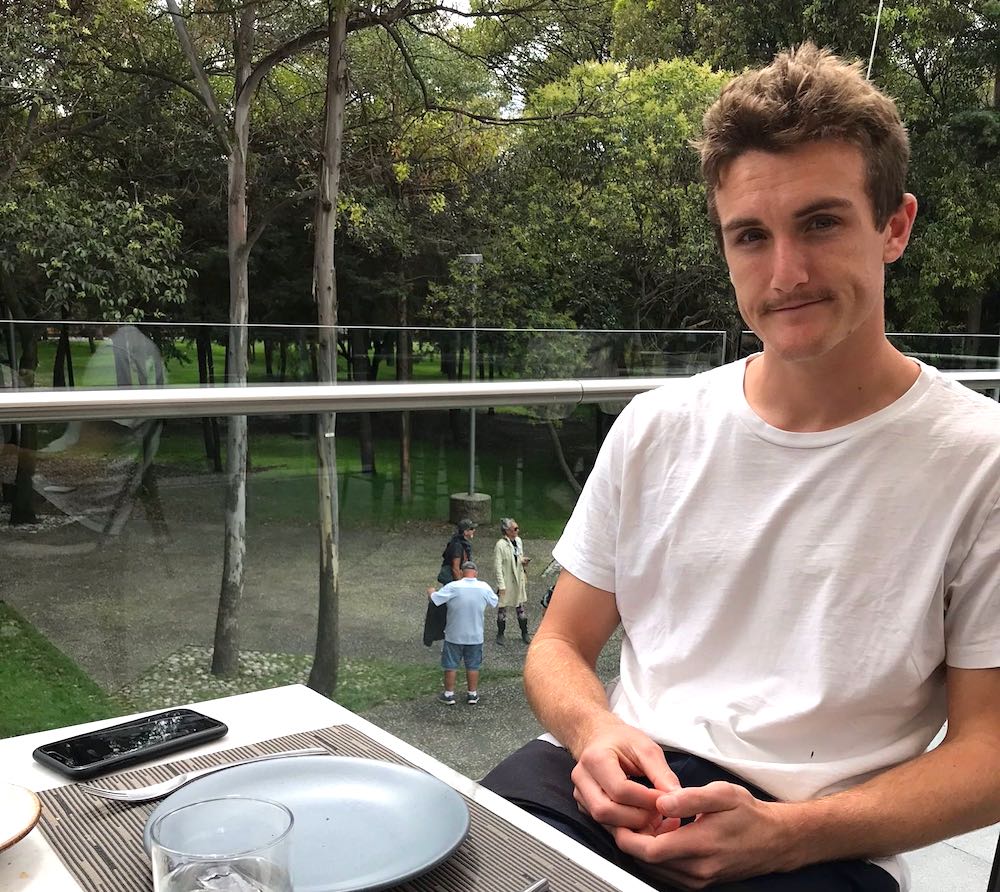
CASEY MIX (USA)
Visual Artist – Printmaking
Click for Artist Website
What is your artistic practice?
I work mostly in printmaking. Specifically, screenprinting and linoleum, as well as film photography, graphic design, and artist books.
Within these art forms, I am currently exploring how imagery in public space operates and relates to institutions of power. I’m interested in the presence of these institutions, e.g., capitalism and religion, and how they exist, oftentimes indirectly and/or subconsciously, in everyday language, symbols, and objects. I am also interested in and exploring the concepts of function and ambiguity as they relate to everyday objects.
On what projects are you currently working?
I’m very excited to be currently working on a couple print series and editions. Once I returned home from Arquetopia, I built a screenprinting set up and workspace in my home, which I guess was a project in and of itself!
I am also working on organizing an artist book & zine press/collective with some friends. I hope to use the artist book and/or zine format to explore the concepts listed above.
What is the most relevant conversation that you remember having during your residency at Arquetopia?
All of the conversations and meetings I had while at Arquetopia were very meaningful and impactful; however, in my last meeting, we discussed the reading, Facing the Other, the French Philosopher Emmanuel Levinas, and his concepts of the encounter with the Other and face-to-face interaction.
I believe these ideas are not only relevant to my artistic practice, but relevant to the current state of the world and how we interact with each other and “others.”
“Freedom is a privilege, not a license to commit murder.” Levinasian ethics remind us that the world is not an uninhabited site for our unfettered enjoyment. Living beside us is the other, who’s right to freedom not only equals ours, but as Levinas insists, “precedes ours.”
I really enjoyed the phrase, “Obligation to otherness,” which Francisco likes to rephrase as “understanding and respecting the integrity of others.” Francisco, on the topic of the encounter, also said, “When we encounter each other, we are aware we have to correct time and space... Levinas makes a shift... and changes the ‘I’ to the self, to understand the other is the important one in the encounter. And if we all did that, it would be a different world.”
I could go on and on, but Levinas. Check him out.
What changed after your residency at Arquetopia?
I believe a lot has changed. The way I see and think in everyday life; my faith in institutions; my interest and desire to read and learn outside my comfort zone; my appreciation for local, organic tomatoes; and probably, most importantly, the way I think about, interact with, critique, and create my work.
How are artist residencies important to the artistic practice?
If done the right way, artist residencies will help change the way the artist thinks. Or, rather, they will provide and educate the artist with new ideas, methods, and tools to help them grow and broaden their beliefs and practice. I’m very fortunate to have been given the opportunity to be a part of Arquetopia, a residency that does all of these things. More important than providing a destination, or an isolated studio to solely focus on and create new work, artist residencies should cultivate and develop different “ways of seeing.” Arquetopia did just that.
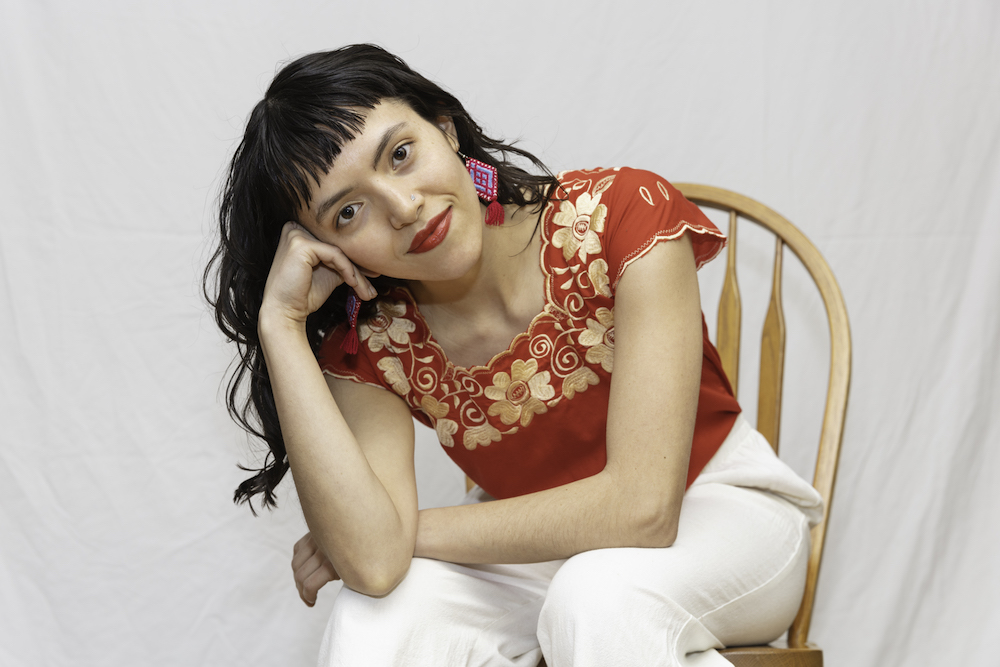
LAURA MONSREAL (Mexico/USA)
Visual Artist – Multimedia
Click for Artist Website
What is your artistic practice?
My artistic practice includes a variety of mediums. Painting, photography, stop motion animation, video work... and pretty much anything where I can use my hands.
On what projects are you currently working?
The current project I am working on is a passion project. In 2018, I started to document my Abuelita (Grandma) through photography. I named the project, “La Historia de mi Abuelita” (The history of my Grandma), a documented photography series that shared a part of my grandmother. The series displays a part of her Mexican culture through food, rituals, close family, and daily routines. This series has become an ongoing passion project.
The goal was to tell her story. After this, the project grew into a passion project where I wanted to document my whole family and its Yucatan Culture. The intentions have changed and evolved as I continue to work on it. What I am exploring in this project currently is my identity as a Yucatan-American Immigrant. Something else I am exploring through this project is the journey of Alzheimer’s with one of my family members.
What is the most relevant conversation that you remember having during your residency at Arquetopia?
The most relevant conversation I remember during my residency at Arquetopia was a conversation I had with Francisco about how important it is to have a question you are trying to answer or explore during your art process. He painted me an example, stating that if I was a performer, standing in front of the stage about to share a question everyone had been waiting for, what would it be? After this conversation, I have found myself questioning “What is it that I want to explore or understand in this project or idea?”
What changed after your residency at Arquetopia?
What changed after the residency was my thought process in how I express my ideas. Arquetopia encouraged me to continue to explore other ways I could expand one idea through different medium or a combination of mediums. My experience at Arquetopia also made me think about how an idea can forever move into a variety of discoveries and the importance of questioning our artistic practice.
How are artist residencies important to the artistic practice?
Artist residencies are important in the artistic practice because they help us grow as artists. I believe they can help artists evolve and expand their ideas, process, and projects. Through a residency, we get the opportunity to share our current work and receive feedback and mentoring from other artists about the work that can benefit us. I think residencies can also serve as another space for artists to reflect, get inspired, deepen their artistic practice and gain knowledge and learn new skills.
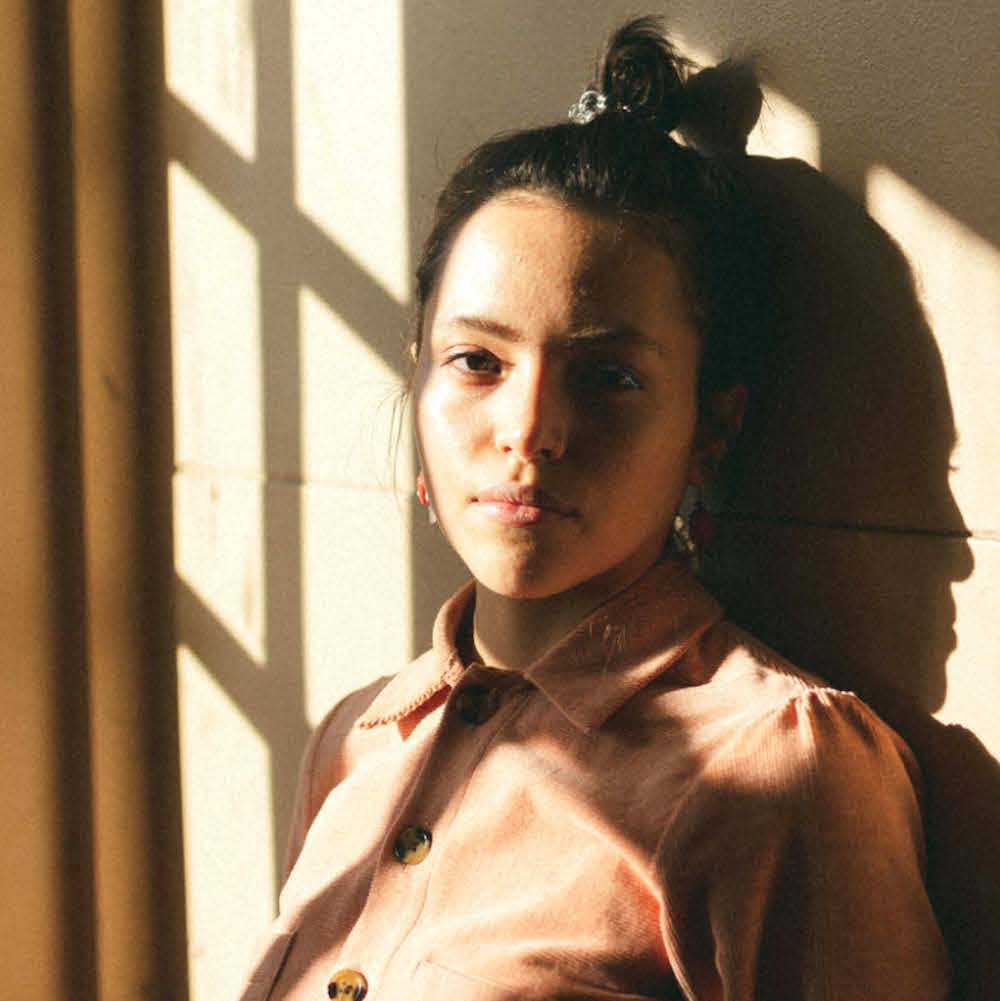
LIZZIE MONSREAL (Mexico/USA)
Visual Artist – Multidisciplinary
Click for Artist Website
What is your artistic practice?
Some of my artistic practices include illustration, textile design, music, and writing.
On what projects are you currently working?
Currently, I am working on a digital portrait commission for a client. As for my textile art, I am focusing on practicing my craftsmanship on my crocheting skills. As for my music, I am continuing to write and play my songs; eventually I would like to create and album.
What is the most relevant conversation that you remember having during your residency at Arquetopia?
One of the most relevant conversations I remember having had to do with my project which related to change. It made me question how could I represent change in a way that is an organic representation instead of looking at it as a symbol in my project. I valued the opporuntiy to translated philosophical and spiritual meaning into my artwork with the help of my mentor.
What changed after your residency at Arquetopia?
Lots happened after I left Arquetopia. I myself feel reborn. Once I left I traveled to Merida, back to my homeland, and stayed there for a month. Afterward, I traveled to Mexico City, and after that, Las Vegas. Now that I’m home, I'm searching for a new chapter. I’ve learned so much, but I haven’t quite processed it all. I’ve noticed how my mindset has changed and is continuing to change when it comes to my artwork.
How are artist residencies important to the artistic practice?
Artist residencies are very important to helping artists gain new perspectives about art and their art process. Normally, we always create art in the same environment or unless we go to art school. Space is essential to create. It offers new experiences and growth with the creative process and thinking.
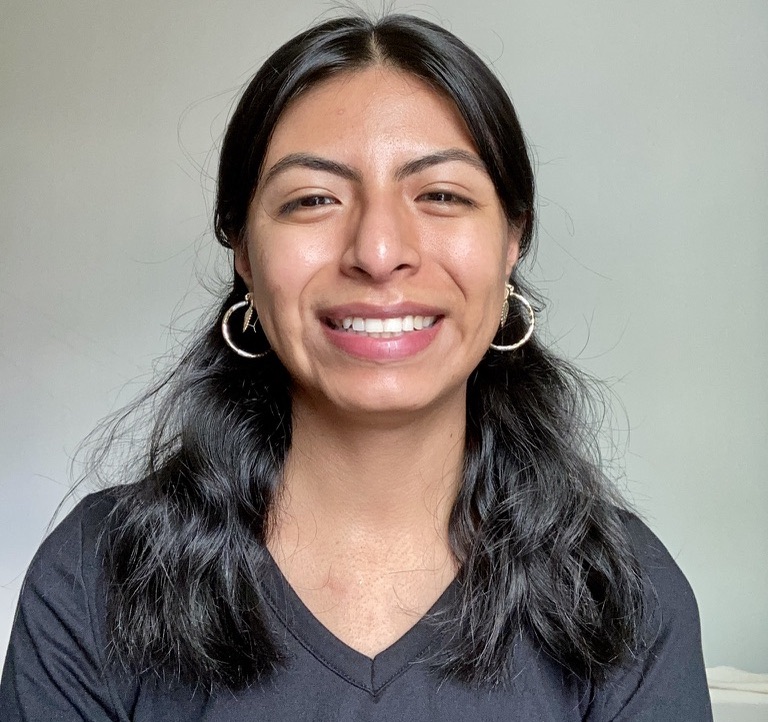
SANDRA MORA (USA)
Multidisciplinary Artist
What is your artistic practice?
I am a multimedia visual artist currently focused on metalsmithing. Through my work, I attempt to capture a sense of comfort in the face of constant change through imagery and now, use of materials.
On what projects are you currently working?
Currently, I am working on a body of work focusing on the exploration and experimentation of materials that are normally unvalued. I hope to bring up the question of value and preciousness through the juxtaposition of precious metals and common materials.
What is the most relevant conversation that you remember having during your residency at Arquetopia?
During my residency at Arquetopia, the most relevant conversation I remember having was one discussing different methods of research for topics related to my work. Before, it was difficult for me to expand on the themes that interested me, I felt limited in the messaging I was trying to convey through my art.
What changed after your residency at Arquetopia?
What has changed after my residency at Arquetopia are my views on the materials I use in my practice. I’ve previously used common jewelry materials, precious and non-precious metals. But now, I want to challenge the value that’s placed on these metals by using more unconventional materials.
How are artist residencies important to the artistic practice?
I believe artist residencies are very important to artistic practice because it’s an opportunity for the artist to learn and experience a new way of art making. Arquetopia was my first residency, the weekly discussions and readings got me thinking about my work in a way I hadn’t before. Along with the conversations I had with the other residents, it’s an experience I wouldn’t be able to recreate alone.
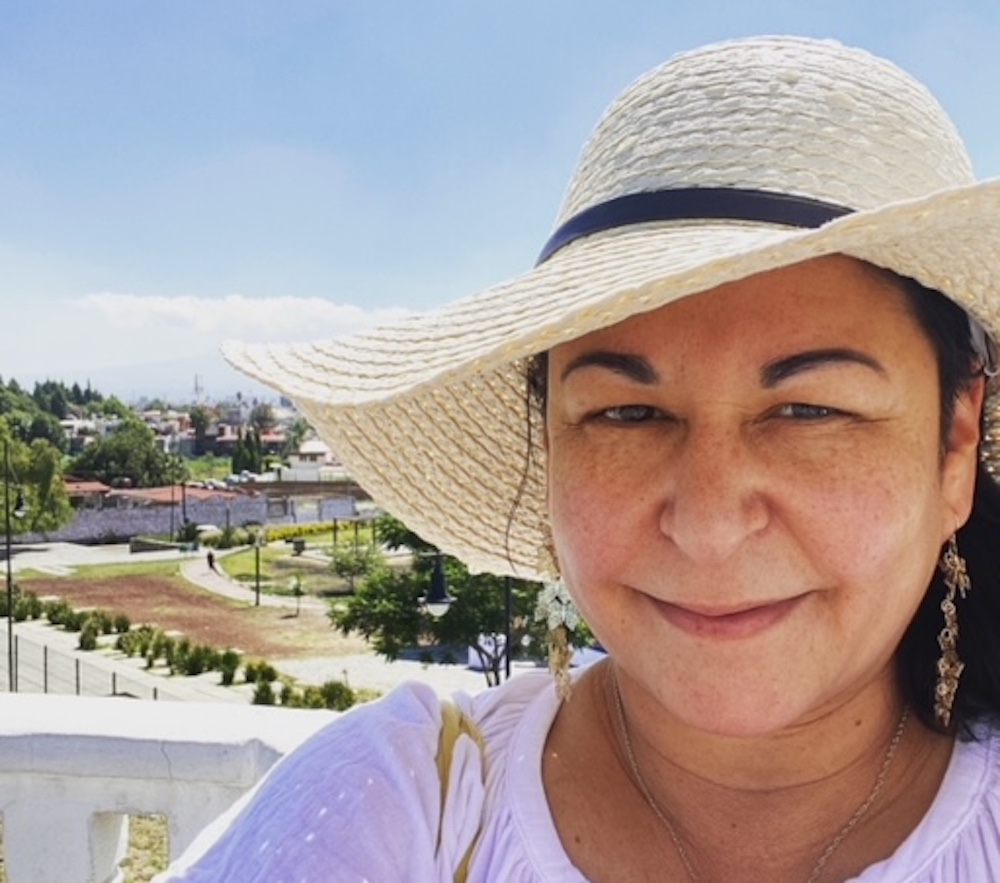
MICHELLE MULLET (USA)
Visual Artist – Painting
Click for Artist Website
What is your artistic practice?
I am a painter.
On what projects are you currently working?
I am currently working on a series of abstract hands inspired by an artist named Saul Bass. I am also working on drawings of pre-Columbian hands over iridescent paint. I am learning how to use light and color-shifting paint in my work.
What is the most relevant conversation that you remember having during your residency at Arquetopia?
I loved all my conversations with the staff at Arquetopia. However, my final conversation was the most productive and substantial. Not only did Francisco and Nayeli encourage my practice, they asked questions that I never asked myself until this point. Why am I making this work? Why paint? Where does it fit into an expanded worldview and the history of art making? These conversations helped me become a stronger artist and these questions have led me to see my work as multifaceted as a diamond and equally important.
What changed after your residency at Arquetopia?
I learned a great deal about my art practice and what a strong work ethic I have when I am immersed in an environment that is free of distractions and interruptions. I gained a renewed sense of joy in making new paintings and I realized the importance of working alongside other artists to share ideas and meaningful conversations.
How are artist residencies important to the artistic practice?
Artist residencies extend a unique invitation to give artists the time and space they need to create new work. As a working mom and self taught artist, it was difficult to carve out time for my artwork until I spent a month in Mexico at Arquetopia. Since then, I have been able to continue painting almost on a daily basis. Leaving Arquetopia, I felt a renewed energy for painting and I discovered a bright new vision for my future and my work.
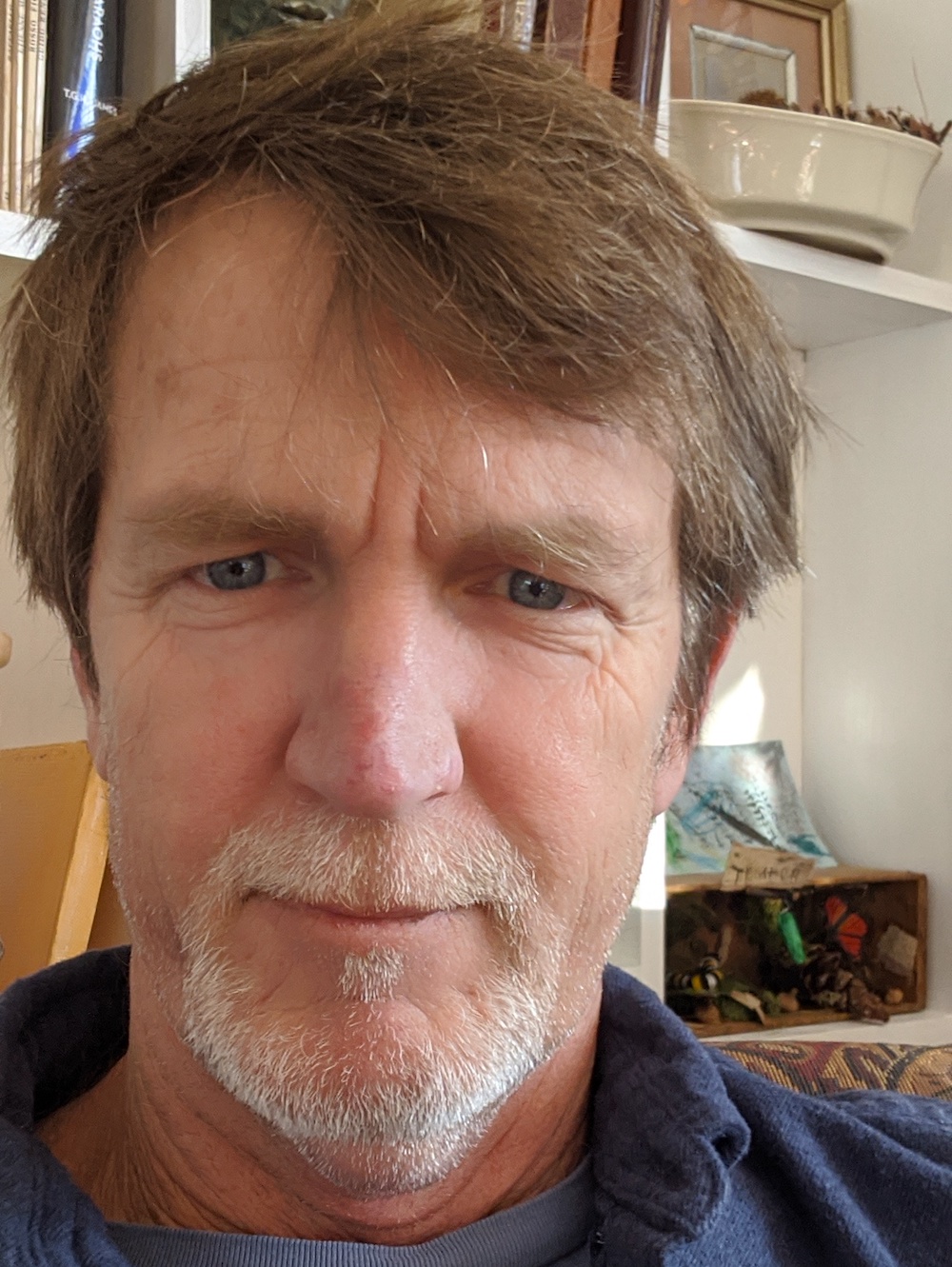
THOMAS MURRAY (USA)
Multidisciplinary Artist
Click for Artist Website
What is your artistic practice?
Painting, drawing, collaborative installation.
On what projects are you currently working?
As we are in the process of relocating our studios and practice, I am in the process of an inventory. The inventory runs deep. Not an inventory so much in the physical sense, but rather in finding threads that align with my current beliefs. During the course of working, I veer into directions that, in the moment, are of some interest. Not all these are in direct line with my interest in painting. In retrospect, I rarely walk in a straight line. Looking back affords me the opportunity to find works that align with a sense of honesty that is heartfelt, as opposed to critically manufactured.
What is the most relevant conversation that you remember having during your residency at Arquetopia?
So much information and ideas were discussed during my residency it is difficult to weigh in on one dialogue. Certainly as I write this I will focus on one dialogue, and then another will come to mind (already, Race and Manifest Destiny, the Origins of American Anglo-Saxonism, Reginald Horsman, 1981, and the weight of “performing whiteness” comes to mind).
For the moment, I will address Performing the Body/Performing the Text, edited by Amelia Jones and Andrew Stephenson, 1999, and the ways the ideas are permeating my processes.
Thoughts of an audience whom I will never meet seem freeing in a deep sense. The desire to create work that is narrative and somewhat pedantic springs from a place slightly less than true.
Time plays a new role, visual language opens, and thoughts are conveyed directly through making. The text is a recurring event that follows inevitably, and is remade to suit flowing time and political perspective.
What changed after your residency at Arquetopia?
I have a renewed sense of urgency. Though I embrace adoration, it is ultimately impermanent.
How are artist residencies important to the artistic practice?
I was reticent to dedicate a month to a residency. More importantly, I was reticent to open my practice to external dialogue. I choose my teachers carefully and with suspicion.
Being teachable continues to be an indispensable habitual motif, yet finding a teacher I trust is harrowing. Opening one's ideas to critical dialogue takes courage. Without the courage and openness, we cannot grow. The artist residency affords us the opportunity to engage in dialogue and grow in a safe space where vulnerability is valued.
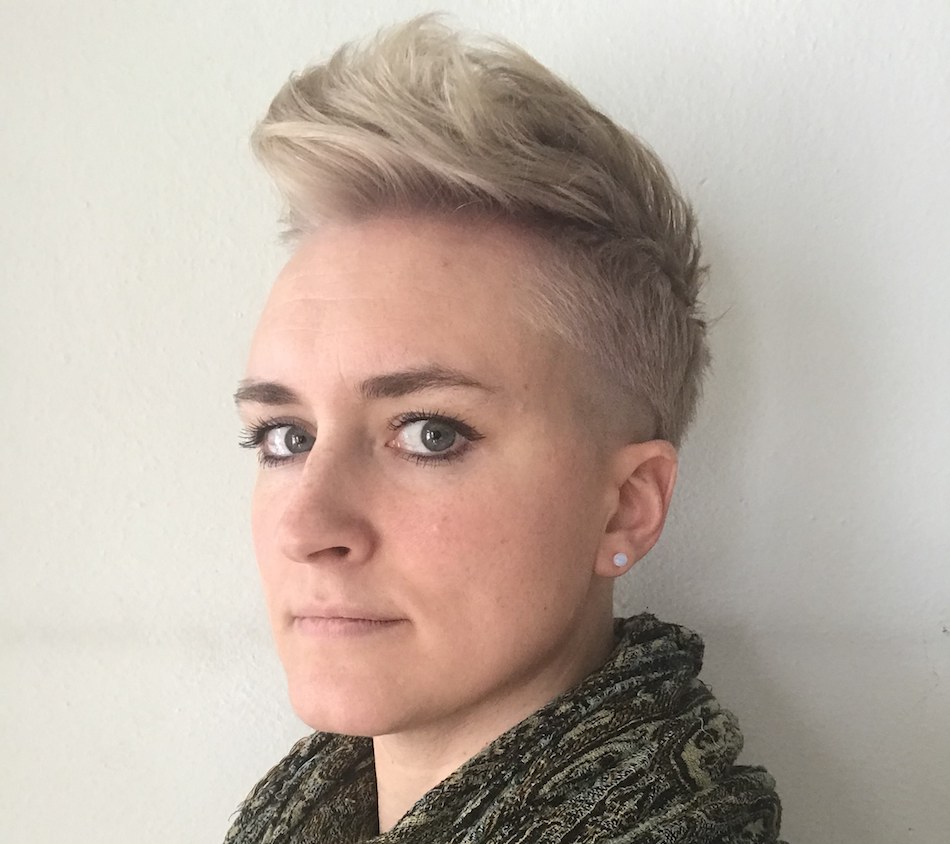
RAE NOBLE (USA)
Multidisciplinary Artist & Writer
Click for Artist Instagram #1
Click for Artist Instagram #2
What is your artistic practice?
Art in this season of my life takes all forms of making: cooking colorful meals, journaling, parenting, photography, creating visual work in a variety of mediums. The art practice I currently prioritize is writing, incorporating text and line drawing.
On what projects are you currently working?
I am creating a book that celebrates the metaphors and small miracles within my daily gardening practice. The pieces are taking shape as handwritten, illustrated poems, fables and short essays. Beyond studying my own plants and lived experience, I research writers who center stories from nature and the interdependent systems that we exist within. Photographs support my writing and drawing work, as visual research and documentation of the garden’s seasonal shifts.
Another ongoing project is a handmade art zine that I initiated in 2018. “MOMZEANS” is a compilation of writing and artwork by local artist mothers and myself; the content highlights birth stories, parenting perspectives and affirmations, and mental health resources. My intention is to normalize the full experience of mothering and stand in nonjudgmental, openhearted honesty. Mothers are often deified, and held to impossible expectations and standards. This project seeks to increase dialogue around the complexity and humanity of mothering.
What is the most relevant conversation that you remember having during your residency at Arquetopia?
Most relevant conversation during the residency: In our first weekly meeting, mentors Francisco and Nayeli asked about my intention for the three weeks of residency. I described my hope of detecting the parameters of this book project, utilizing the quiet space away from home and the ceaseless, quotidian minutiae of life as a mother. They listened deeply as I painted the project’s imagined container, in word and gesture. At the end of that first conversation, Francisco offered something that spoke to me in a bone-deep way, “Never concede to (or acknowledge/accept) the center, and never romanticize the margins.” Within this encounter, I recognized the option to self-authorize expansion: to hold round, soft space for my practice and the eventual completion of the book. He encouraged me to use the residency time to rest, lean into my intuition, and to write whatever arrives. I left that meeting in a deep, rejuvenated exhale that infused and informed the entirety of my stay.
What changed after your residency at Arquetopia?
What changed after the residency? Since returning home from the residency, I have nourished increased spaciousness and ease within my artistic practice. My writing now lives at the intersection of make and allow. The book project feels gentle in a tangible way, as though my time in Oaxaca allowed me to soften/thicken something with sharp edges. As well, my writing practice is more robust thanks to the protected and well-organized space Arquetopia has cultivated for participants. As Francisco and Nayeli taught us, the residency truly begins after the residency, so, here at home, I suppose I’ve just begun.
How are artist residencies important to the artistic practice?
How are residencies important to the artistic practice? Residencies are a powerful opportunity for artists to rest and encounter other minds, in a safe and necessary container. I understand that my experience as a working mother artist is not unique; there are endless distractions competing for artists’ attention, with trauma or to-do lists pervading whatever consistent studio time one may have established. The mind can be a busy place. Residencies offer fertile, boundaried sanctuary to energize and expand one’s practice.
I thank you all for this exceptional residency program and opportunity to share my practice.
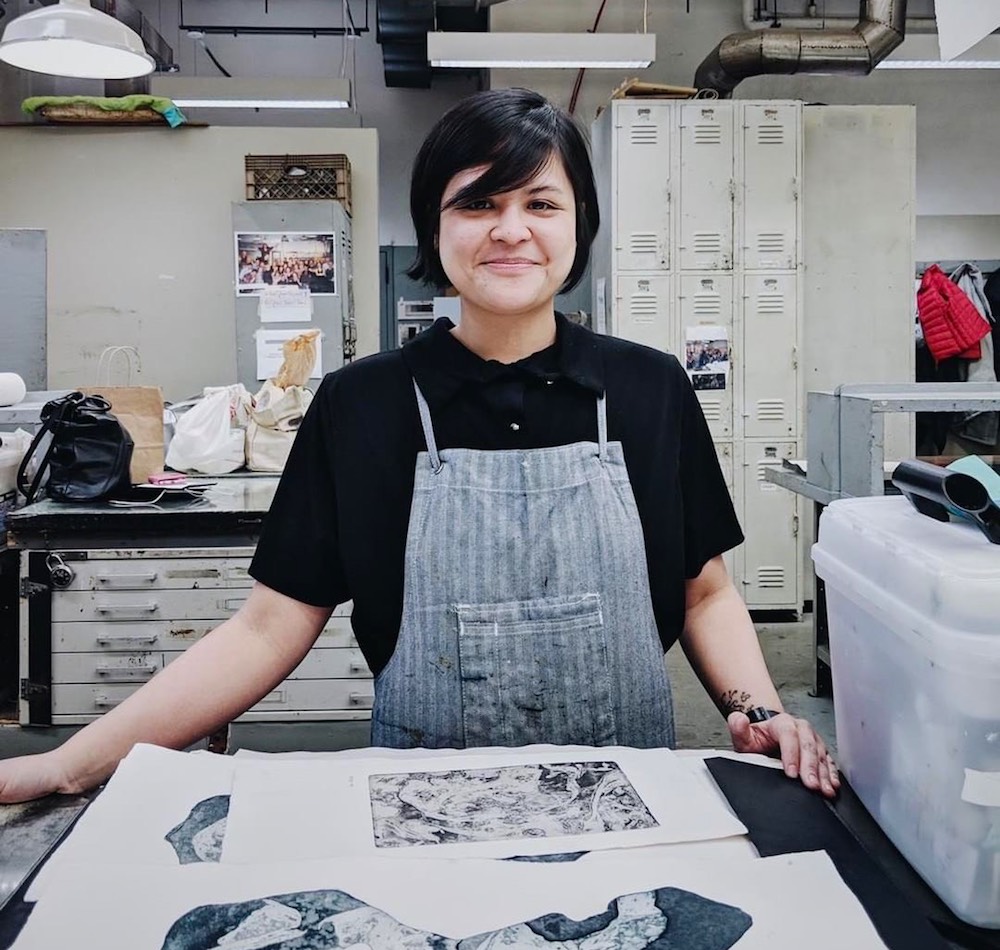
CAROLINE ONGPIN (Philippines/USA)
Visual Artist – Printmaking
Two-Time Arquetopia Artist-in-Residence: Puebla
Arquetopia International Mentorship Program Award Recipient
Click for Artist Website
What is your artistic practice?
I do printmaking: relief, etching, and lithography.
On what projects are you currently working?
I am currently working on an etching series of topographical views of imaginary landscapes. The matrices are shaped irregularly to resemble islands and are etched with a combination of various techniques such as marbling, embossment, hard ground, white ground, and aquatint. I intend to make several dozens of unique islands that can eventually be printed in groups as well as individually.
What is the most relevant conversation that you remember having during your residency at Arquetopia?
The conversation was brought on by a sketch of an artwork that I was planning to execute; the sketch contained visual elements that to me were distinctly Filipino and Mexican. I was asked why I felt the need to include such details and I realized that I was trying to give the work an obvious Filipino and Mexican look to make it authentic and acceptable. One of the problems with this was the fact that almost all of the imagery was based on objects viewed from the context of a museum, or even designs that were clearly lifted from historical records of ethnic culture. I became aware that I was looking at these cultures –and in effect also at my own identity– not with my own eyes but those of others e.g. the dominant, male, European viewpoint.
What changed after your residency at Arquetopia?
After the Arquetopia residency, my thinking process for developing ideas completely changed. I was directed towards exploring abstract compositions when I had previously been working with representational and very literal imagery, and suddenly a whole other resource and language became available for me to explore and utilize. Since then my work has been largely abstract. Another big change was my understanding of how art is redefined by each person that encounters it. Because artworks are read like a text, the meanings change for each person depending on their background, beliefs, and so on. Understanding this made me more conscious about the choices I make and the sources of my images. In addition to that, I now aim to make work that encourage questions rather than ones that insist on a singular answer.
How are artist residencies important to the artistic practice?
Artist residencies are important to artistic practice because they provide a space and time that is fully devoted to the art-making process. They are also venues that foster dialogues and critical feedback from a curator and fellow residents. Being in a totally different milieu can also redefine the artist’s perspective of his or herself and the works that are being developed.
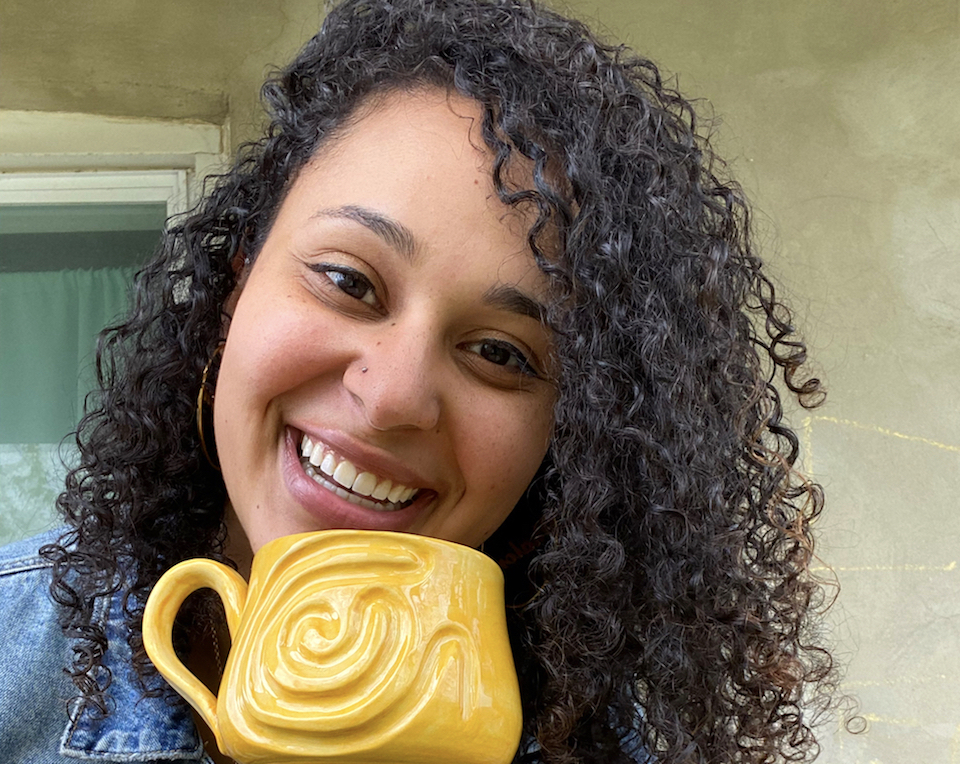
SHALOM PARKER (USA)
Visual Artist – Ceramics
Click for Artist Instagram
What is your artistic practice?
My artistic practice is functional ceramics.
On what projects are you currently working?
I am currently experimenting with new clay bodies and using found objects from nature to create texture on my pieces. I am also working on a project exploring the journey of grief using vessels.
What is the most relevant conversation that you remember having during your residency at Arquetopia?
It is really hard to narrow it down to one conversation because the entire experience shaped my worldview. The conversations with Francisco and Nayeli provided the bedrock for the other knowledge and experiences I was gaining to be built on and I am so thankful for the wisdom that they shared with me. My conversations and time with my instructor are ones that I will always cherish and know that I view my medium differently as a result. I feel a different level of connection to the clay and the process, as well as more freedom to play, experiment, and try new things.
What changed after your residency at Arquetopia?
The biggest thing that changed is the way that I view ceramics. All of the facilities and tools I have used in my career before Arquetopia were modern, convenient, and created to make the process easier. I value the connection with the material of clay and a wider variety of techniques and tools now as a result of my residency.
How are artist residencies important to the artistic practice?
I believe that residencies provide artists with a chance to be surrounded by new people, perspectives, conversations, sights, sounds, and experiences that can inform their work. It is important to be consistently growing and learning as an individual in order for your work to mature along with you!
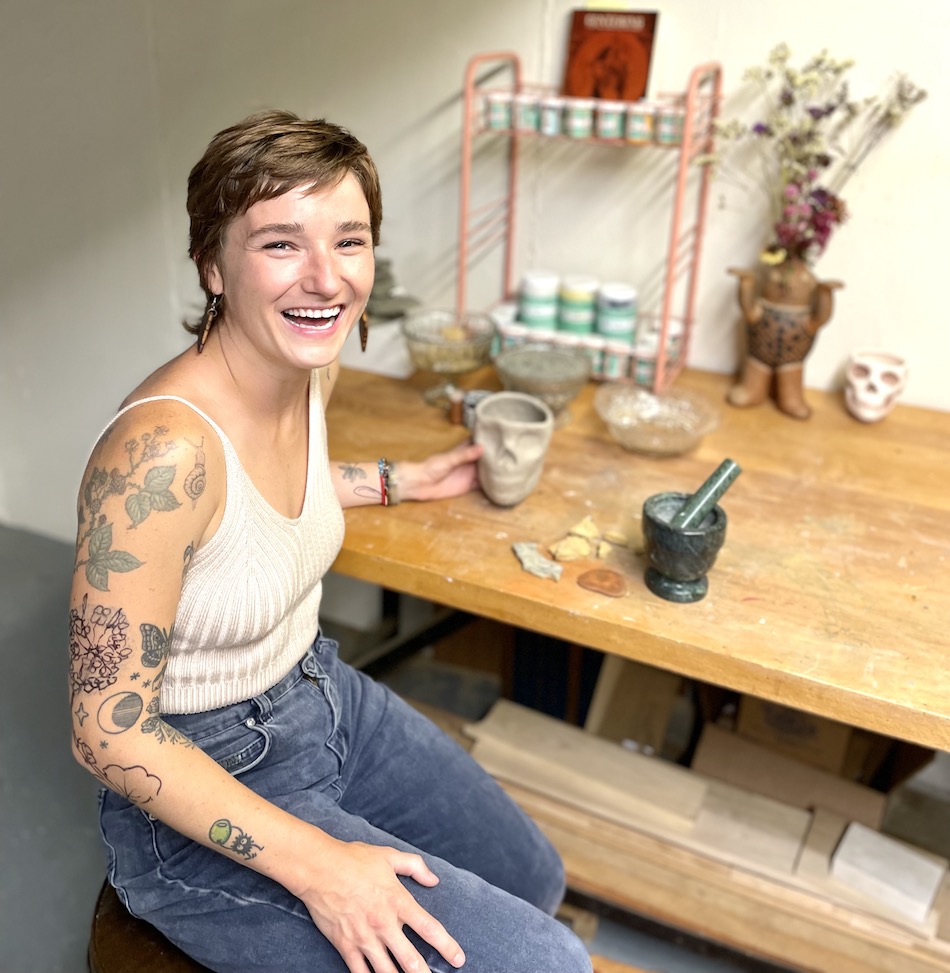
SARAH PARR (USA)
Visual Artist – Ceramics
What is your artistic practice?
I practice ceramics.
On what projects are you currently working?
Since returning to Michigan, I have finished a few pieces that I made at Arquetopia with beeswax, so they are able to hold liquid. One of these pieces is a ceremonial mezcalera, and I enjoyed using this special bottle for the first time with friends. I have also been continuing to explore themes from the pre-Hispanic pottery residency. While at Arquetopia, I learned about harvesting and “washing” clay for use and how to make pigments from natural materians. I have been able to collect iron from black sand along Lake Michigan, which I turned into a pigment that surprisingly turned from purple to red after the first firing. I’ve also collected clay samples from a different Lake Michigan beach and a nearby forest. Being able to source some of my own ceramic materials connects me to the Earth and ancient ceramics process in a much more intimate way, and I am excited to continue experimenting.
What is the most relevant conversation that you remember having during your residency at Arquetopia?
All of them, haha! Really, though, it’s hard to say because they all felt so meaningful. I learned so much from the readings, my weekly meetings with Francisco and Nayeli, the classes, and other people I met through the residency. My time at Arquetopia helped me to begin to embrace my own rhythm, discarding some preconceptions about how I “should” operate that do not serve me, which has been incredibly valuable. I also feel that I have become more aware of how I want to show up as a traveler and as a community member at home.
What changed after your residency at Arquetopia?
A lot has changed since Aquetopia. One of the biggest changes that I’ve noticed is that I feel more connected to the Earth in my ceramics process. One reason I love pottery so much is that working with clay grounds me, and now that I’m gathering and preparing some of my own materials, I feel even more connected to both the Earth and the ancient history of ceramics in my practice.
How are artist residencies important to the artistic practice?
In my own experience, artist residencies have been like a power-up star to the development of my own artist style and body of work. At Arquetopia, I learned about entirely new techniques, like the traditional stone burnishing technique used in pre-Hispanic Mexico. Learning the traditional techniques of Puebla/Cholula while experiencing them was an honor, and I couldn’t have learned these techniques in such a meaningful way elsewhere. Being in Mexico and working with new clay bodies also pushed me outside of my normal creative processes and inspired me to try new forms, surfaces, and approaches to creating.
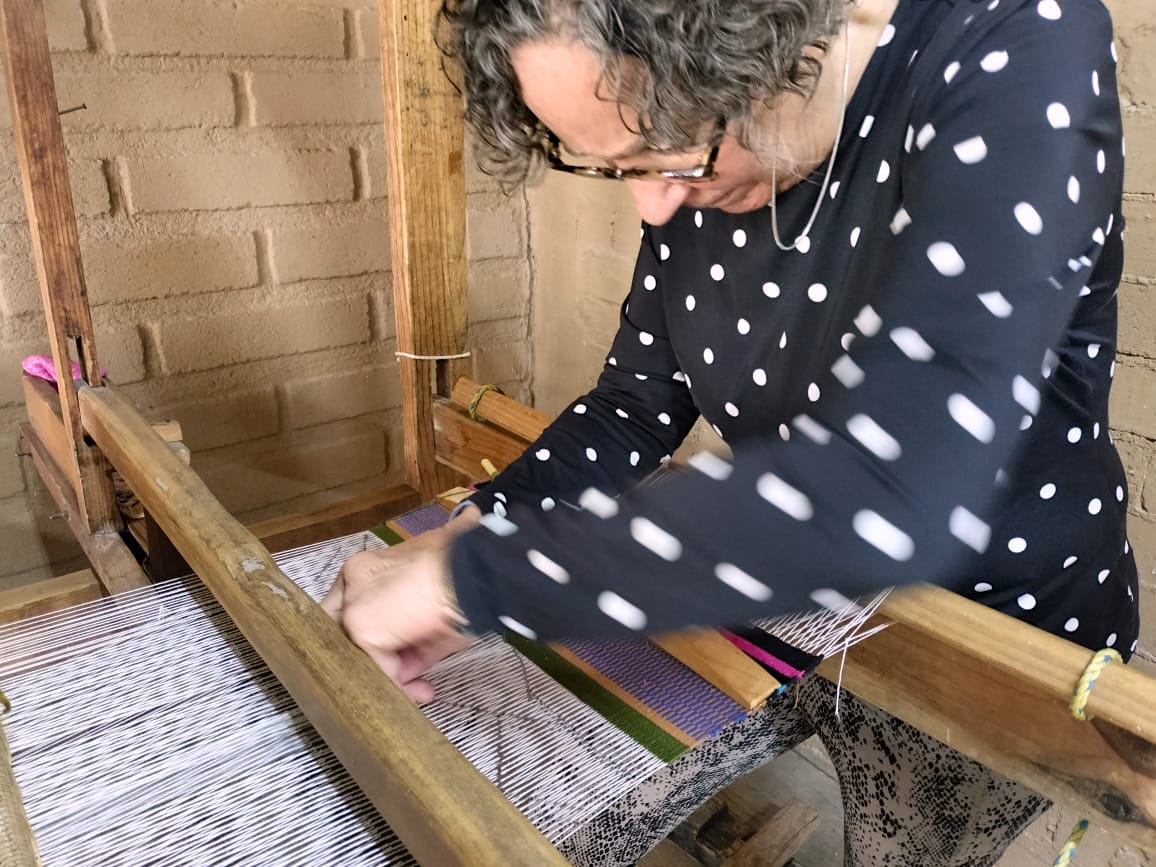
TERRY PETERS (USA)
Visual Artist – Textiles
What is your artistic practice?
Tapestry weaving.
On what projects are you currently working?
Right now, I am learning Double Weave. Double Weave is weaving two layers of cloth at the same time, one above the other. I have purchased the book Double Weave by Jennifer Moore and am teaching myself the technique from the book. Double weave uses many of the same techniques and weaving structure that are found in the backstrap loom.
What is the most relevant conversation that you remember having during your residency at Arquetopia?
Some of the most relevant conversations I had while at Aquetopia where those with my fellow students. We were a group of four, all from different countries (USA, Canada, Great Britain and New Zealand) and all of varying ages. We shared the space and saw each other as equals. Our best conversations were when two or more of us were give the same weekly reading. We would discuss them together and bounce our thoughts off each other.
What changed after your residency at Arquetopia?
I am extremely thankful to all the people at Arquetopia for giving me the opportunity to participate in their tapestry weaving residency program. Not only did I learn a new weaving technique, but I also gained a new understand of myself. I learned to settle into my practice with a calm and patience – no rush – that has now carried over into everyday life. Just do the task and do it well.
How are artist residencies important to the artistic practice?
The residency gave me the opportunity to focus entirely on my weaving. Everything else was done for all of us. The staff prepared our meals, cleaned the house, and even took us on excursions to see artistic practices in the region. Removing all outside tasks and stress allowed me to relax into my artistic endeavors.
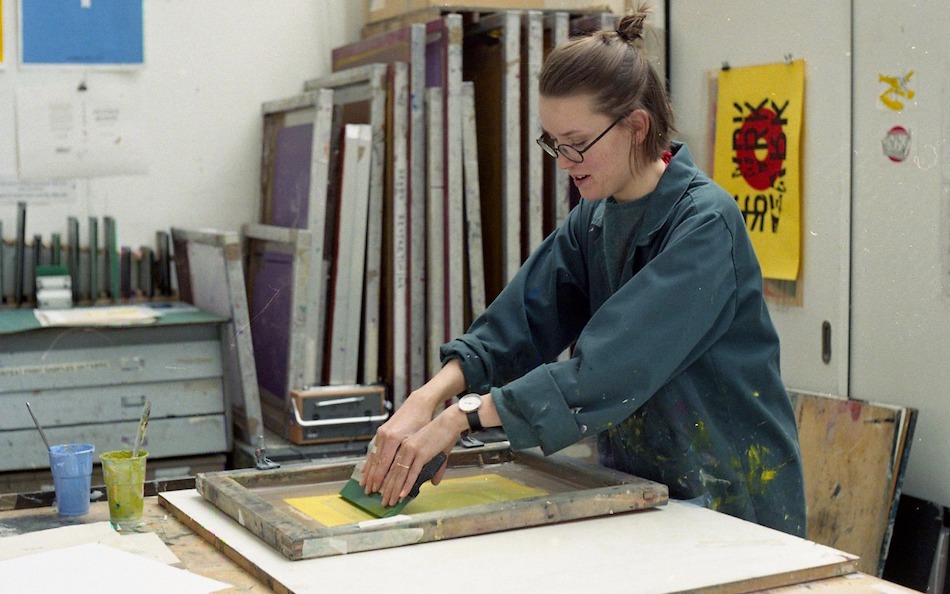
SANNI PYHÄNNISKA (Finland/United Kingdom)
Visual Artist – Multidisciplinary
Click for Artist Website
What is your artistic practice?
I am an illustrator and printmaker from Finland living in the UK. My practice takes mainly the form of silkscreen art prints, and occasionally textiles and animation. My work is inspired by observations and occurrences from my life that fascinate me: use of language and humour, movement and dance, and conversations and social interactions that I both spectate and share with other people.
On what projects are you currently working?
I am currently working on a couple of new personal projects: one looks at childhood and home, and the effect of sentimentality on memories. Since moving away from my childhood home and the country I grew up in last year, I have started to get flashbacks of specific places, objects, and moments. In my work, I want to inspect the transformation of life becoming memory, the move from experiencing to reminiscing.
My second ongoing project is to create a series of prints based on anecdotes and narratives I gathered whilst traveling around Mexico. I intend for this body of work to be showcased in a solo exhibition. Since completing my instructional course for Natural Ink Silkscreen printing in Oaxaca, I want to turn my focus to applying the knowledge I gained on residency to sourcing natural materials locally to continue making my own inks back home.
What is the most relevant conversation that you remember having during your residency at Arquetopia?
A few come to mind, but one of the conversations I had with Francisco and Nayeli that stands out was on the lack of control we have over the meaning of our art once it is released, and where the responsibility for these meanings lies. Additionally, I had some amazing moments of connection with the other resident artists discussing womanhood, relating to each other a lot, and learning from the differences in our experience. These kinds of conversations will never go amiss.
What changed after your residency at Arquetopia?
Since the residency, I have found a fresh lease of energy to go find my place in the art world professionally, and to seek out some of the support I got on residency from artistic communities in my city. The way in which we were invited to read around a variety of different themes inspired me to become more open to letting anything and everything I consume and experience to have an impact on my work. Lastly, I fell head over heels in love with the way colour is used in Mexican art and craft; I don’t think I will ever see colour in the same way again.
How are artist residencies important to the artistic practice?
Artist residencies for me are a perfect example of the kind of working environment all artists should be granted in everyday life: a desk, materials, engaging conversation, academic resources, feedback, support and time. I personally struggle to balance my artistic practice with part-time jobs, but residencies are a way for me to regain some of the time I go without fulfilling my creative needs. This residency was an opportunity for me to jumpstart my practice again, create new work, obtain a new skill, connect with a lot of new people, learn about a culture completely different to mine, and lastly, fully enjoy myself doing what I love to do without the pressure of having to justify that to anyone.
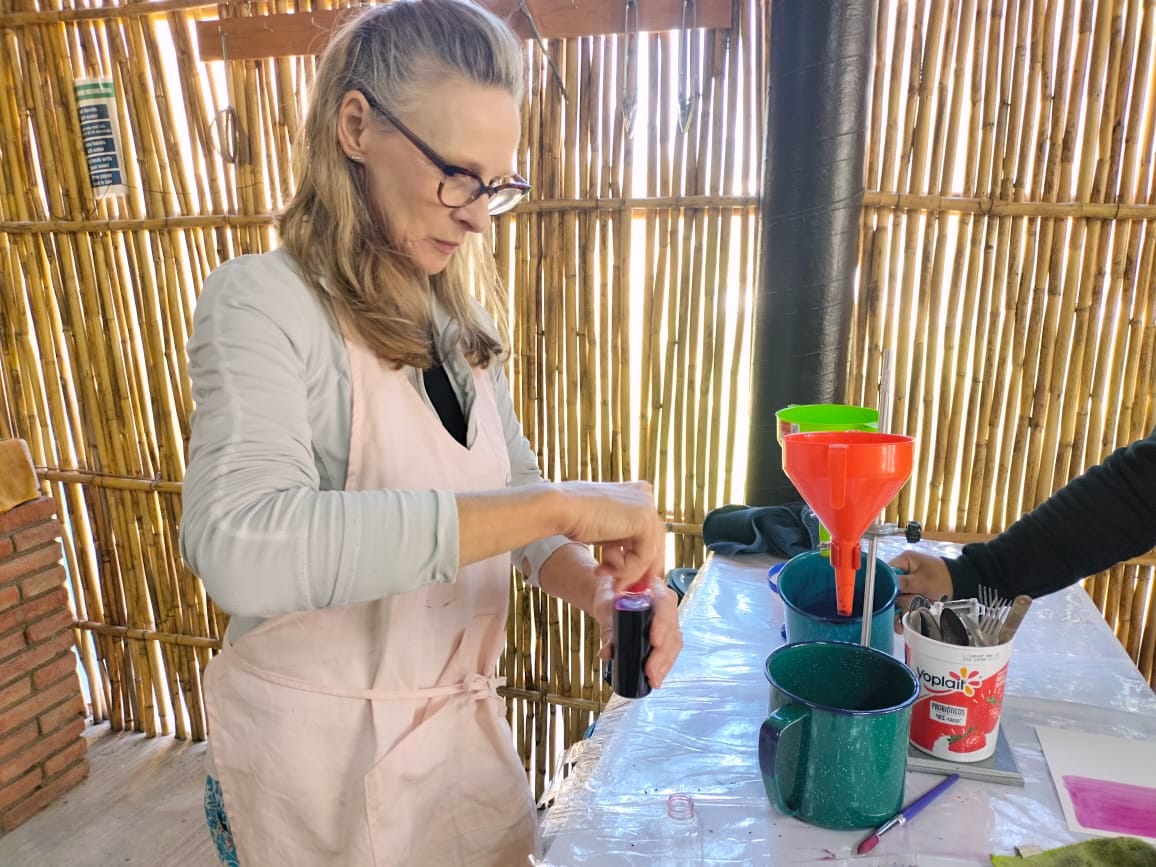
ELIZABETH ROBERTS (Australia)
Visual Artist
Click for Artist Website
What is your artistic practice?
I’m interested in the human body, and reproductions of it, as metaphoric sites for our experiences of the world. This interest has been heightened since the global pandemic where our bodies were both under threat, and at the same time a major source of resilience. Bodies appear in many of my paintings, prints and drawings, as I’m inspired by life models, mannequins, family, colleagues, and friends. I frequently draw from my own professional dance experience, especially regarding the visual aspects of body weight and movement.
I’m also curious about how botanical science has been a feature of colonisation, and the ways in which local knowledge about plants has been suppressed historically. I’ve been working towards a Certificate in Botanical Art at the New York Botanical Gardens since 2019, which I began when I was living in New York City. Watercolor, pencils, printmaking and pen and ink are important mediums in this type of work.
On what projects are you currently working?
There are two major themes that drive my practice. My first project for 2023 will question historical modes of the representation of women in visual art and is a direct outcome of my residency at Arquetopia, Oaxaca. My theory readings and discussions provided a catalyst for my ability to act, as my ideas were in embryonic form when I arrived. I’ve now started a collaboration with an experienced life model and together we’re coming up with scenarios that will drive my imagery for the rest of the year. Secondly, I’m always looking at plants and making studies as I try to work out how to visually depict some of the darker historical aspects of scientific collecting and categorisation.
What is the most relevant conversation that you remember having during your residency at Arquetopia?
One of the most relevant conversations I had with Francisco Guevara and Nayeli Hernández was about how visual culture contributes to collective views about people, places, and time periods. I began to understand that some aspects of art production contribute to power imbalances and have negative consequences for vulnerable people and environments. In my residency there was an emphasis on the importance of considering unconscious structures, biases, and motives behind the artist’s gaze. These discussions were underpinned by historical references as well as contemporary modes of disrupting such structures. The weekly meetings also helped me consider the shadow side of my own art production as my works go out into the world.
What changed after your residency at Arquetopia?
The main thing that has changed is that I’m acting on my intuition more independently, rather than waiting for validation from sources that may not understand my voice until it exists in visual form. In other words, I was able to take charge of my own direction and was emboldened to collaborate with a colleague to make my first painting studies from life. I began in January 2023 and find that things are beginning to consolidate and distill as I simply make a start.
How are artist residencies important to the artistic practice?
I think what makes Arquetopia’s instructed residencies very impactful on an artist’s development is the combination of theory with practice over a month-long period. So often art theory is disconnected from actual practice. On my residency, there was time to absorb the readings and discuss them with the other residents, as well as to learn practical and artistic skills from amazing local artists in Oaxaca. The individual tailoring to each resident is also crucial as this doesn’t always happen in larger academic institutions.
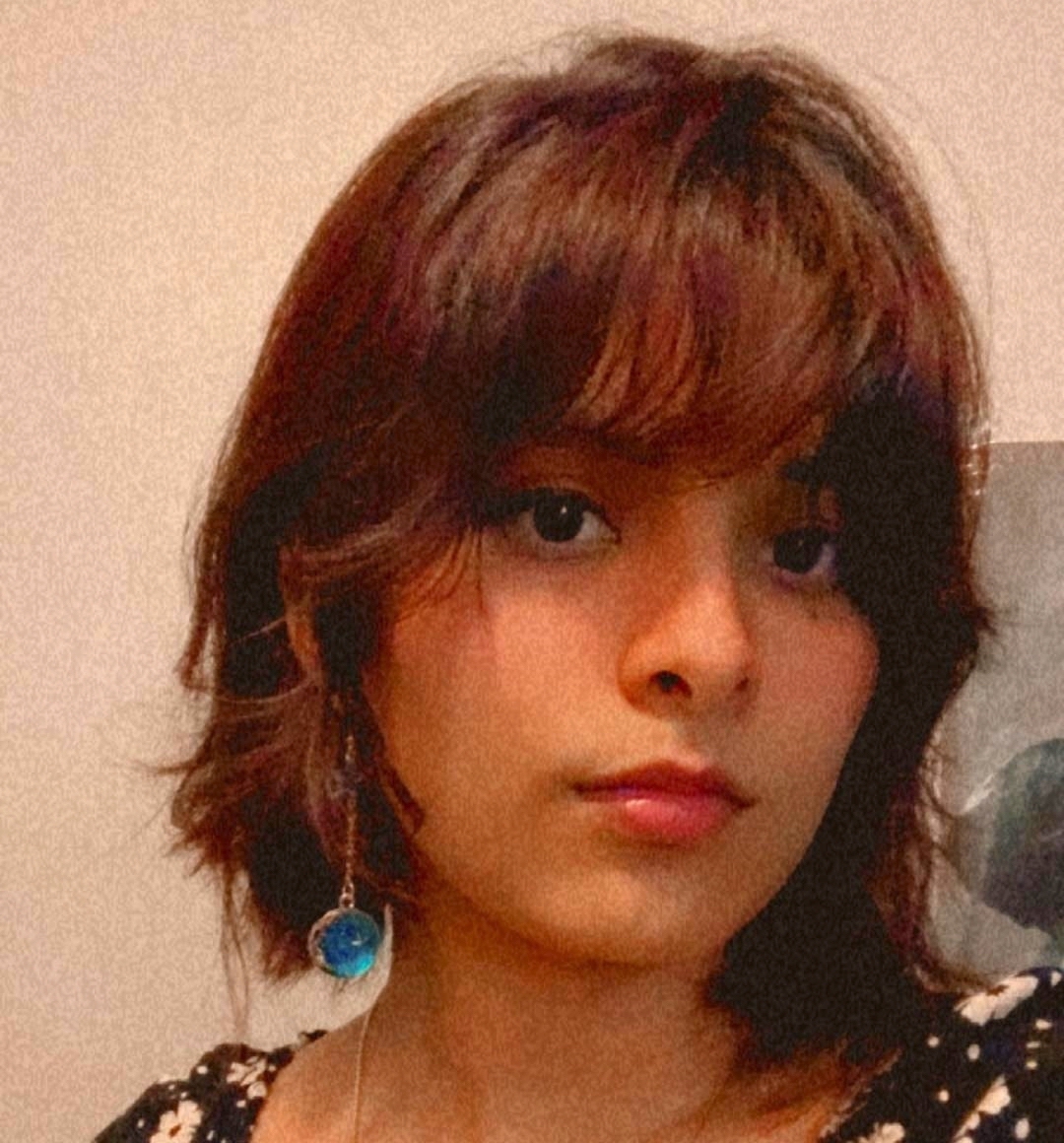
NYDIA SALINAS (USA)
Visual Artist – Ceramics
Click for Artist Website
What is your artistic practice?
I work primarily with clay.
On what projects are you currently working?
I am currently continuing research that investigates questions that were brought up in conversations I had during my time in Puebla. I have dabbled into some video collaging and painting. I am hoping to depict and address the forced or fluid nature of a region with the use of soil and water through sculpting and performance projected onto an intentionally painted surface. A larger, long-term project I am working on is a mural design for the University of Texas, Rio Grande Valley. Alongside that, my time is spent working one on one with students at the university, where I currently attend and work.
What is the most relevant conversation that you remember having during your residency at Arquetopia?
The conversations I had with Francisco and Nayeli drastically changed the artistic direction I was taking. All of those moments we shared in Arquetopia allowed us to deconstruct my way of thinking. I was left to ask myself why I have chosen to address critical conversations in a creative process. Through our encounters I felt myself changing and rethinking all of my artistic ideas.
They were primarily interested in what I thought about the readings and the ideas that caught my attention. Did I agree or disagree with what I was reading? For the most part, I found myself to be very understanding of the readings, and I found them necessary. The readings spoke on injustices, and the responsibility of an artist. I always made sure to take notes of everything that was said during our meetings – everything spoken was important for me to fully grasp. I ended the residency with the question, What am I asking with my art, and who am I asking? Why is it important to me to have others assess these ideas? I continue to ask myself all these questions and share the types of discussions I had in Arquetopia with the community back home.
What changed after your residency at Arquetopia?
Every time a conversation is started, in my mind I refer back to those readings I tried really hard to understand at the residency. I now think critically about most interactions through this different set of lenses and ears as a result of my time spent there. My process does not end or begin at the touch of material anymore; it has become a day to day experience. Bueno, mas o menos.
How are artist residencies important to the artistic practice?
Residencies create a space where artists can explore their ideas in depth. Arquetopia specifically, provided access to text and in-person interactions among artists and mentors. Their ceramic residency in Puebla especially created the opportunity for international ceramicists to develop a great network with the community of creatives there in Puebla.
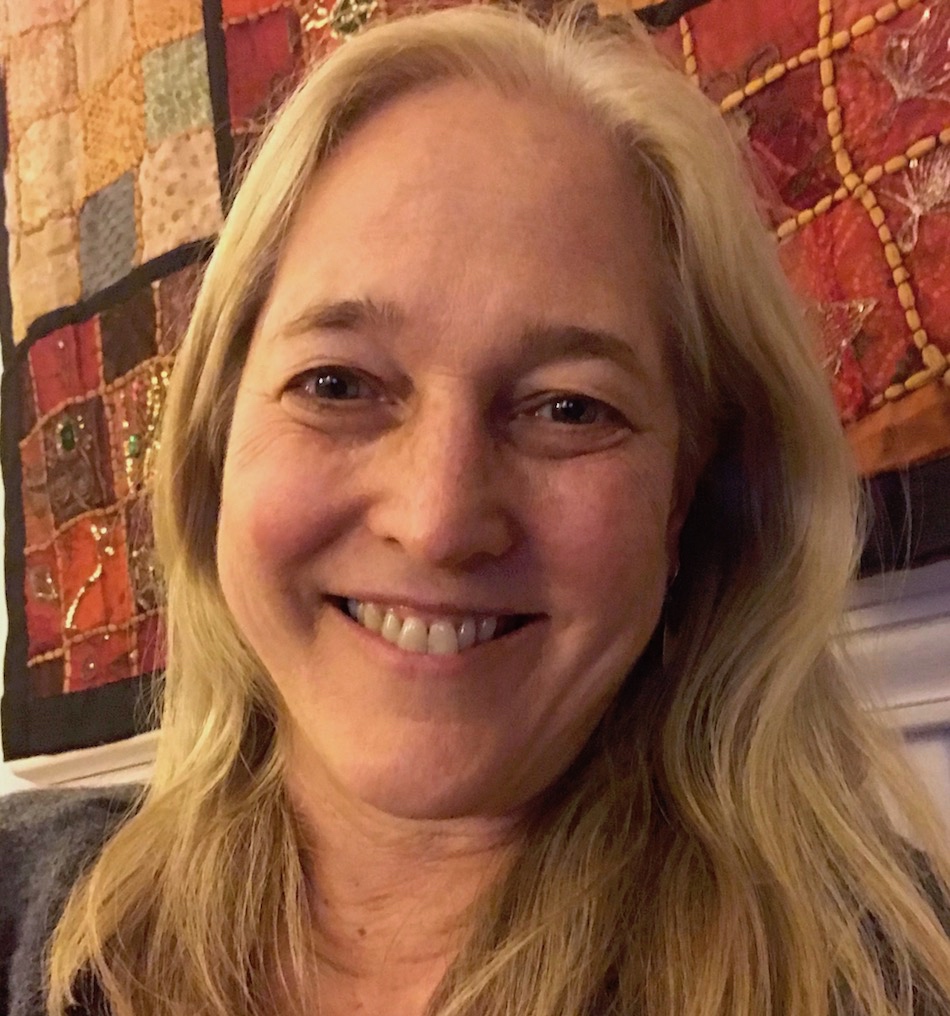
NANCY SAUSSER (USA)
Visual Artist – Sculpture
Arquetopia 2019 Residency Scholarship Award Recipient
Click for Artist Website
What is your artistic practice?
I am a sculptor working primarily in clay. Recently I have also begun to work in an installation and wall installation format, and to work with other materials such as wood and mirrors.
Conceptually, I am interested in exploring a conversation between interior and exterior worlds. I am drawn to containers and vessels, as they encapsulate, protect, preserve and metaphorically point to the coexistence of the universal and the individual. The human body as a functioning and conceptual container is also of interest to me. Working primarily through abstraction, I draw on our innate understanding of the language of form, referencing early life forms, basic biology, the natural world, and our physical and philosophical selves.
In addition to my work as an artist, I am an active curator in the Washington DC area, and serve as the Exhibitions Director and Curator at McLean Project for the Arts, a nonprofit visual art exhibition and educational organization in McLean, Virginia, where I put together exhibitions of work by contemporary artists from the Mid-Atlantic region of the USA.
On what projects are you currently working?
From April through October of 2018, I exhibited an outdoor sculpture in the Foggy Bottom Sculpture Biennial exhibition in Washington DC. In September through October my work was in a three-person curated exhibition at the Brentwood Arts Exchange in Mt. Rainier, Maryland titled “In A Fertile World”.
I am now preparing for a one-person exhibit at International Art and Artists at Hillyer, in Washington DC. The show will be titled “Quotidian Splendor” and will include mixed media sculpture, installation and wall pieces that celebrate and reflect on the nature of our everyday lives and ways of inhabiting the world, the resilience of the natural world, and the importance of preserving it.
What is the most relevant conversation that you remember having during your residency at Arquetopia?
I had to think hard about the best answer to this question, because I of course had many wonderful conversations during my residency with both the staff and my fellow residents.
But I think the MOST relevant conversation was an on-going, non-verbal conversation that took place in the Talavera factory during daily quiet working time there, across a Spanish/English language barrier. Although not a lot of words were exchanged between me and the Talavera artists working, there was curiosity, helpfulness and openness, and the familiarity that comes with the proximity of making things side by side. This felt both good and sometimes awkward and uncomfortable. Being in that position took me outside of myself in a way that was thought provoking. It’s good to get out of your comfort zone and inhabit an unfamiliar environment. It can give rise to some sense of new perspective.
The conversation that I had with the city of Puebla also turned out to be important to me. I spent a lot of time walking around that beautiful city, and the details of the architecture and the energy of the place were moving. I’m grateful to have had to opportunity to see it.
What changed after your residency at Arquetopia?
My work changed direction a bit as a result of my residency in Puebla, and although I didn’t make finished work there, I started a series of works which later developed into a series of nine wall sculptures called “Puebla Suite”. I brought the vessel format into my work, a direct result I am sure of spending time surrounded by Talavera pottery and incorporating the unfired ware directly into my work. Also, blue and white, once important to my practice, returned as a conceptual and visual underpinning. I also began to explore some of the structural elements of the of the Talavera ceramic tradition, such as the Niche and the reverential format of the Virgin of Guadalupe. So while my work remains personal in subject matter, the framework was expanded by my exposure to the visual culture of Puebla during the residency.
How are artist residencies important to the artistic practice?
Artist residencies are wonderful because they offer the gift of expansion. Traveling to a new place and focusing on making art while there, provides the unusual opportunity to have active creative time and new experiences and stimulation simultaneously. The seeds of artistic growth are planted, and although it can take time to see where they will lead, they will always lead into new territory if one is open to it. For an artist particularly, I believe it’s important to broaden one’s perspective. This will inevitably lead to stronger, more relevant and impactful art.
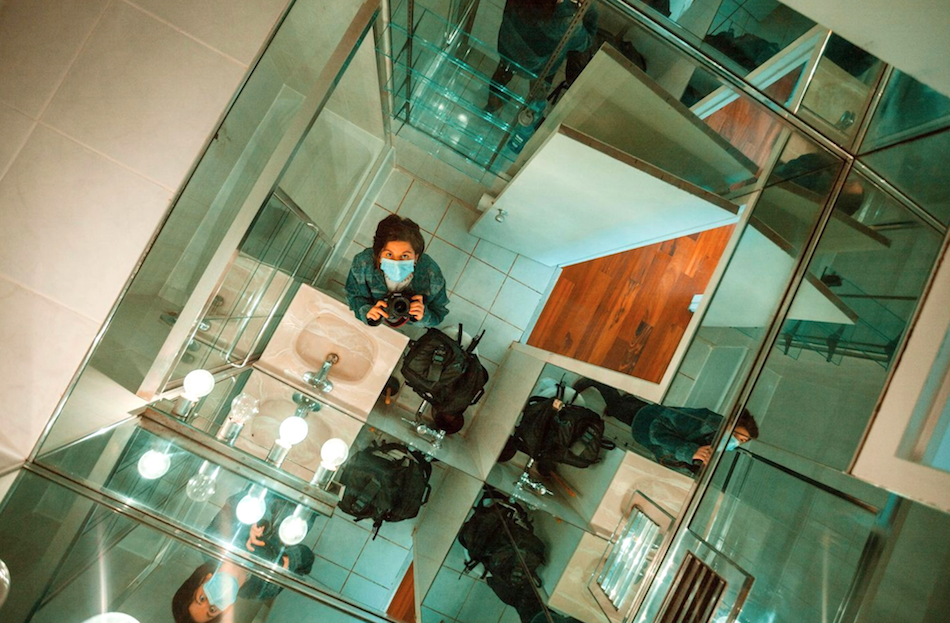
NAVI SCHIFF (USA)
Visual Artist – Multimedia
Click for Artist Website
What is your artistic practice?
Photography, Stop-motion animation, film, video, and new media.
On what projects are you currently working?
Currently, I am working on a large array of photography for several magazine publications and independent artists. Most of my work is centered around spooky themes since it’s October, which is my favorite time of the month to make work. I have a big team of creative individuals and we shoot different concepts of mine for future publications. I am also putting together my applications for grad school, I am looking at getting a masters in Creative Photography and Experimental Media on the West Coast of the US. I’m also working on finishing some client videos such as commercials, wedding highlight reels and so much more!
What is the most relevant conversation that you remember having during your residency at Arquetopia?
My most relevant conversation was centered around the idea that photography is subjective. This was a known concept for me, but it really stuck at that moment because I realized my power in creating art. I think a lot of people assume photography is an easy medium where you’re simply capturing what exists already. However, this conversation made me see how untrue that is and how I am actually seeking out photographs to show off my perspective of the world. This is something that has stayed with me long passed the residency and now shifted the way I create art.
What changed after your residency at Arquetopia?
Arquetopia really helped me grow up in all definitions of the word. It helped me to be independent and find new found confidence in my work and my ability to be alone. Since returning home I am often struck with sudden bursts of mindfulness that was a gift from my residency in Peru. The approach to life there is much more calm and tranquil and that’s something I will carry with me for the rest of my life. I love to talk about my experience with friends and family, but I really can't put it into words how life changing it was for me.
How are artist residencies important to the artistic practice?
Being a working artist is hard, because we’re balancing so many things. Running our own businesses and marketing and trying to get our work out there while trying to maintain a practice. It can really be hard to find time to create or think about your purpose while you’re trying to survive and make money to pay rent. When doing a residency all of these things are set aside and all you have to focus on is your art practice. That makes creating feel free again like it did when we were children. Creating, because it feels good to do so and you have the space for it.

ROBERTA SCHREYER (Germany/United Kingdom)
Visual Artist – Mixed Media
Click for Artist Website
What is your artistic practice?
I am an interdisciplinary environmental researcher, storyteller and artist. My mixed-media textile artworks investigate how the arts can restore the broken human-nature relationship in order to tackle the climate crisis. I work with and for nature using a variety of textiles processes with a focus on natural dyes, silkscreen printing, knitting and stitching in combination with organic fibres, family heirlooms as well as discarded waste materials. I give the natural environment a voice by dreaming of a hopeful future where humans don’t deplete their ecosystems but heal them based on nature’s circular economy. I aim to set hope within the climate narrative to encourage and educate society so that humans and nature can return to living in balance on Earth.
What has been your artistic process during the residency?
At Arquetopia, I completed the natural ink silkscreen residency where I learned to extract pigments from plants, woods and grana cochinilla. I spend a lot of time learning about pigments from my incredibly knowledgeable teacher, Edgar. At the same time, I explored different symbolisms to talk about grief and healing through nature and textiles. My main focus was on how plants act as connectors between heaven and earth. This way I connected my research through my materials, process and tools.
Which has been the text, essay or quote that you read at Arquetopia that most influenced your practice and why?
There were a variety of insightful texts and conversations I held at Arquetopia, but one that was most poignant to me talked about “Text and Textile”, as it had me reflect on the connection between systems and textile making. It made me realise the connection between dying and dyeing. The plants I use to dye, need to die in order for me to use them to colour my fabrics. As my project dealt with grief and healing trough nature, this quote specifically helped me connect different components and influences in my practice.
What is next in your artistic practice after the residency?
The residency left me inspired and full of ideas. I want to continue extracting pigments and work with natural dyes to make textile artworks that talk about hope in the climate narrative. I feel inspired to continue building communities of care, to share and exchange knowledge and skills to open up challenging conversations that lead us to find solutions in the climate discourse.
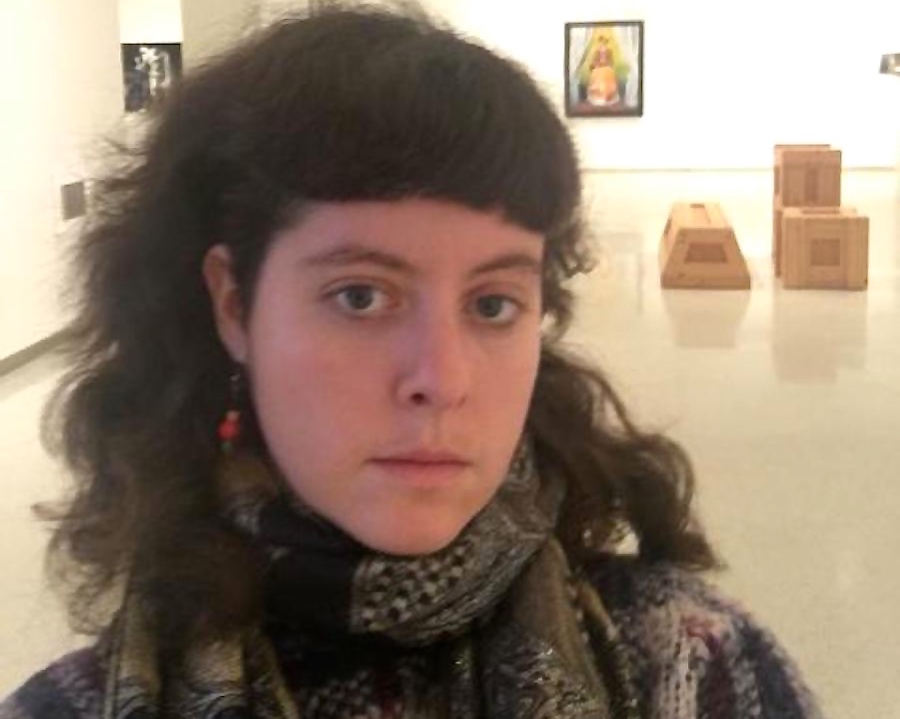
HARRIET SMITH (USA)
Visual Artist – Printmaking
Click for Artist Website
What is your artistic practice?
I define my artistic practice as waking up within a dream. I was raised in a family of artists. My mom and brother are both painters and my dad is a writer, so such creative activity has always been engrained in my daily life. I have dabbled in many mediums, always guided by bright colors and big questions.
On what projects are you currently working?
I use art making as an opportunity to explore the implications of living in a dream world. My practice is above all about remembering the incorporeal nature of my being, and living according to that recognition. I aim to express the inherent unity I sense in this reality. In a dream there is no distinction between subjects. They are all projections of the same mind, a unified consciousness peering out at it self from seemingly separate bodies.
What is the most relevant conversation that you remember having during your residency at Arquetopia?
Francisco would often refer to history and place as a distortion of time and space. He shared the idea that the only moment lived out side of colonization is the present encounter between subjects. As artists our creations are encounters with subjects that happen outside of time. Through our work we have the opportunity to create another filter of distortion that attempts to correct the first two. If we are not conscious of the shadow implications of our work, we will inevitably perpetuate the destructive distortions of history and place.
What changed after your residency at Arquetopia?
For me, the residency was a moment to pause and re-evaluate what it means to be an artist, and the impact I am liable of making on the world. I feel a new sense of responsibility and commitment to creating in a way that questions and disrupts dominant narratives. The residency imparts an obligation to strive towards an ever less destructive and more informed practice of making.
How are artist residencies important to the artistic practice?
I was able to secure a grant through the Greater Pittsburgh Arts Council that funded my residency. I think the most important part of the whole experience for me was realizing I was empowered to create such a dreamy scenario for my self. The excitement of having people read about my ideas and see potential in them, enough to provide me with the space, time and resources to work. It gives me a new sense of possibility. That empowerment is something I can hold with me and move forward with. Truly living the dream.
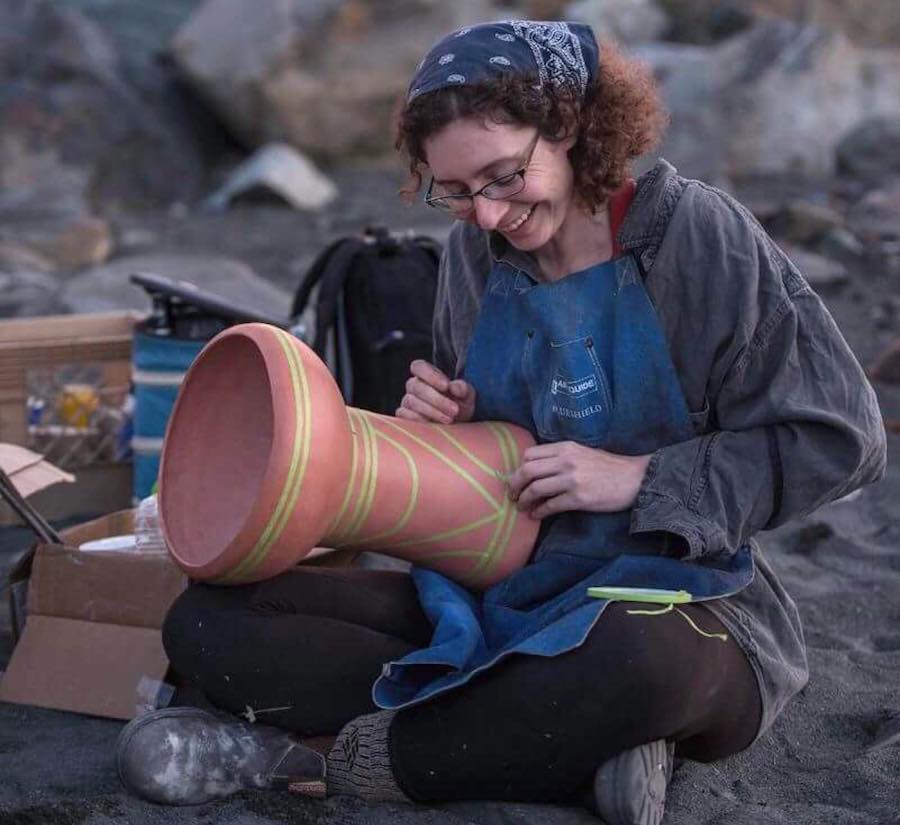
STEFANIE SMITH (Canada)
Visual Artist – Ceramics
Click for Artist Website
What is your artistic practice?
I am a ceramic artist based in St. John’s, Newfoundland, Canada. My work is divided between functional pottery and one of a kind conceptual pieces.
On what projects are you currently working?
I am currently working on a collection of handmade ceramic musical instruments that will be featured in the upcoming group exhibition ‘Instrumental’ that will be held here in St. John’s at the Craft Council Main Gallery.
What is the most relevant conversation that you remember having during your residency at Arquetopia?
This is very difficult to narrow down to just one. All of the dialogues I had with Franscisco and Nayeli were incredibly useful and engaging, particularly those focusing on the issues of feminism in art. Probably the conversation that stands out the most would be the discussion about Audre Lourde’s “The Master’s Tools Will Never Dismantle the Master’s House.” The issue of how to have an authentic voice as a woman in a male focused society without relying on the same tools used by that society is of particular interest to me and remains a significant challenge.
What changed after your residency at Arquetopia?
The residency at Arquetopia help me realize how much I was missing critical dialogue from my artistic practice. This recognition has actually motivated me to apply to a number of grad schools for this fall.
How are artist residencies important to the artistic practice?
I think the greatest value of artist residencies lies in the opportunities to work alongside artists from all different backgrounds and disciplines. The conversations and inspirations had with the other resident artists helped me to see my own work with fresh eyes, and to gain a greater appreciation for the work being created by my contemporaries. The cultural immersion is also significant to an artistic practice because it reawakens one to the world and offers new and exciting perspectives.
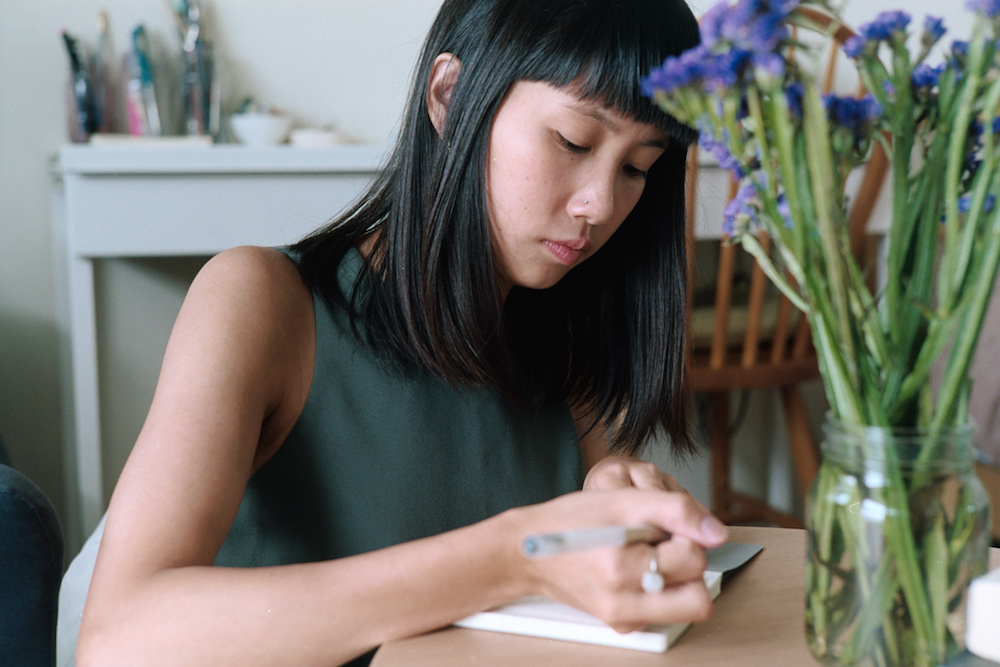
EMILY SOO (Canada)
Visual Artist – Graphic Design
Click for Artist Website
What is your artistic practice?
I’m a multifaceted graphic designer.
On what projects are you currently working?
currently working on an immersive show at my apartment, a night of music, art and performance. Reflections is the theme of the show, in the physical and abstract sense.
The physical reflection is created through calming video projections, made from recording the light bouncing off the experimentation of reflective objects. Abstract reflection is addressed during one’s self reflection during the musical performance and the meditative intermission.
The symbol of the moon, through it’s light and shape will tie all the elements of the show together. As the moon’s visibility is made possible by the reflection of the sun’s light.
Another project I am working on is a documentary film series about one’s relationship with their home and the routines that arise from being in their space. Home can be thought of as the extension of one’s personality, and I hope to capture that.
What is the most relevant conversation that you remember having during your residency at Arquetopia?
I’ve had countless interesting, challenging conversations at Arquetopia with Francisco. I started the residency, thinking that I would create a piece that was universal, which could be understood by anyone. That’s impossible, I learned, as everything is relative and everyone’s experiences are different. The idea that no one could be closer and more different to you than your mother, shows this thinking. We can relate to one another but that doesn’t mean that we understand each other. No two people will ever experience the same thing in their minds. It’s with the friction from these differences that causes new ideas to form. To be less universal, be more specific. I understood that your own experiences can take on another dimension profound to you, and that in itself is valid.
Another important idea was to think about your work as an open ended question. Changing the statement into a question allows the piece to stand the test of time as it can adapt to different contexts. As Francisco mentions, these questions enforced with your artistic technique transforms intention into agency.hey were all relevant! I think the best aspect of the conversations was getting a range of answers about the history of Puebla and cultural vagaries that helped me to start developing an understanding of the area and history.
What changed after your residency at Arquetopia?
As an artist, I have pushed myself in directions that I didn’t know I was capable of arriving at. I’ve become more critical and have embraced the process much more, instilling confidence and excitement in me to keep pushing through to create.
How are artist residencies important to the artistic practice?
Artist residencies allow for us to have all the desirable elements for fostering learning, embracing the process and pushing beyond what we thought we were capable of. It’s important for creatives to be able to dedicate the time, whether it be a week, a month, or a year to be able to focus solely on investigating what they care about inwardly and outwardly. It is by stepping away from the comfort of your own routines, that you are able to change your perspective to make something profound for yourself and possibly others.
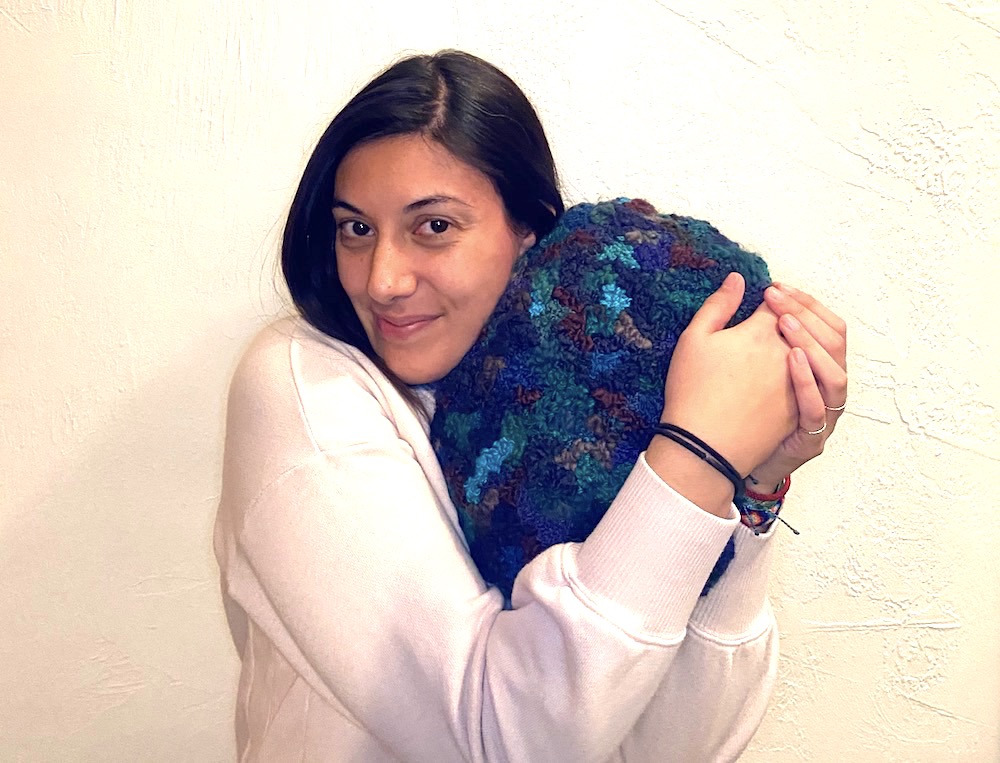
AMANDA STUMPF (USA)
Visual Artist – Jewelry
Click for Artist Website
What is your artistic practice?
I am a jewelrymaker and artist.
On what projects are you currently working?
I am currently working on a few different projects. When I came back from Peru, I wanted to work on a project just for fun, so I decided on weaving custom pillows. Along with that side project I have being doing experiments and research for a new jewelry collection focusing on the concept of the mind and racing thoughts.
What is the most relevant conversation that you remember having during your residency at Arquetopia?
The most relevant conversation I had was talking about how art is viewed and how the opinion of the viewer continues to change and evolve over time do to the continuous change in our world and society. It was eye opening for me to realize the meaning of a piece will continue to change over time as societal norms continue to change. I learned it is important to understand how other people see and view your work because even if you have a concept for your work it might not translate to the viewer especially one with a different background.
What changed after your residency at Arquetopia?
Before my residency I would have an idea and a plan out what I was going to make and what materials I was going to use. During my time at the residency I learned from master weaver Maria that you cannot always force materials to work with a technique. Rather you must find harmony between your materials and techniques.
How are artist residencies important to the artistic practice?
Artist residencies are an important part to any artist’s practice. As an artist you much be committed to the continuation of learning; not only learning new techniques, but learning about oneself. I believe that artists need to keep exploring and expanding their knowledge in order to keep making relevant work. Artist residencies give artists the opportunity to continue to grow in a safe and supportive environment.
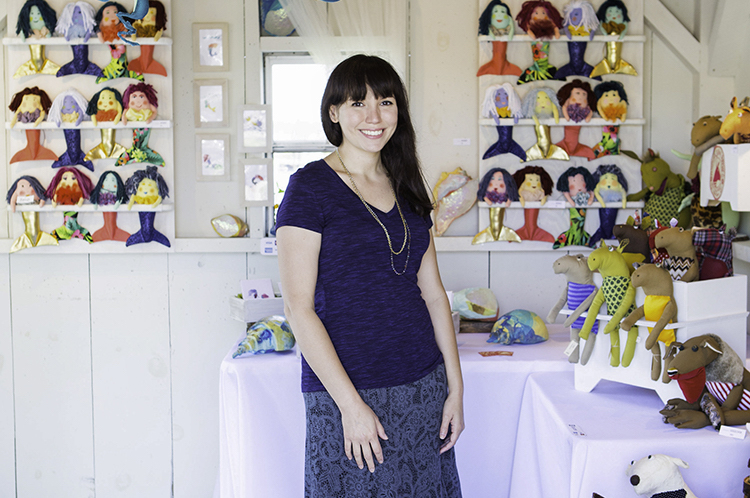
ANNE TOCHKA (USA)
Visual Artist – Painting, Sculpture
Arquetopia 2019 Residency Scholarship Award Recipient
Click for Artist Website
What is your artistic practice?
I am a visual artist working primarily in painting and sculpture. I draw inspiration from the tangible process of artmaking by learning the traditions and histories of the mediums themselves. My own practice explores decorative objects and realistic subjects that also have inherent layers of meaning. I seek to establish a new narrative in my art while fostering a connection to artists and craftspeople who have come before me.
I am currently working on miniatures crafted from spun cotton and inspired by techniques used in 19th-century Germany. Researching this project has been a fascinating look into a cottage industry that produced some beautiful surviving figures but left few details behind of their process.
I am also painting a series of landscapes on Cape Cod (Massachusetts, USA). Cape Cod has been attracting plein air artists for over a century and I am considering it a challenge to show my own vision of my home through painting.
On what projects are you currently working?
I am currently working on miniatures crafted from spun cotton and inspired by techniques used in 19th-century Germany. Researching this project has been a fascinating look into a cottage industry that produced some beautiful surviving figures but left few details behind of their process.
I am also painting a series of landscapes on Cape Cod (Massachusetts, USA). Cape Cod has been attracting plein air artists for over a century and I am considering it a challenge to show my own vision of my home through painting.
What is the most relevant conversation that you remember having during your residency at Arquetopia?
One of the things that set Arquetopia apart from any other residency I’ve done is the devotion of time to critical thinking and discussion of art. Although I had many conversations about Mexican history, feminism, class wars, culture differences etc, one of the most shocking discussions I had was when Arquetopia Co-Director Francisco Guevara told me that my art could be meaningful simply because it was from me and I am my own unique human being. My art doesn’t have to reflect that I am a woman or say anything about the labels that define me. I wish I had recorded that conversation because his exact words left me but the feeling of being stunned has remained. Up to that point I had never had an art “institution” state so directly that I didn’t have anything to prove because of my gender. Of course upon reflection, it’s deeply ironic that I had to have someone affirm that for me before I could realize it myself, but I will always be thankful for that conversation that led to an introspective look at my “whys” for creating art.
What changed after your residency at Arquetopia?
Before arriving at Arquetopia, I was feeling directionless in my art practice. I did a Novohispanic Sculpture instructional residency while I was there with artist Memo. His devotion and spirituality involved in his art and teaching could be deeply felt in a way I didn’t need translated. Through his instruction, and my discussions with Francisco and Nayeli, I was able to realize what areas of art making were most im- portant to me and see what was lacking in my practice. When I left I had about a hundred new ideas and paths to explore and now, over a year later, I still haven’t exhausted them.
How are artist residencies important to the artistic practice?
Artist residencies allow an artist time away from the demands of everyday life to focus on their art. By disrupting the regular habits of process, artists are able to explore their art more deeply and see it in different ways. And while the time to focus on art and developing skills is very important, the life-chang- ing part in a residency comes from being immersed in another culture. The experience of living and working in someone else’s community, removed from your own, is completely eye-opening. It forces you to question “how does my life, my art, fit into the world?” Artist residencies allow you to have the unique mindset of being a student of both art and life.
BRONWYN TREACY (Australia)
Visual Artist & Educator – Printmaking
Two-Time Arquetopia Artist-in-Residence: Puebla
Arquetopia 2015 Residency Scholarship Award Recipient
Click for Artist Instagram
What is your artistic practice?
I trained as a printmaker but more recently have been involved in participatory art projects.
On what projects are you currently working?
This year I became a mum, which is of course now my major project. I have however also started developing new studio work in printmaking.
What is the most relevant conversation that you remember having during your residency at Arquetopia?
I have been lucky enough to undertake two residencies at Arquetopia. Over the course of those two visits, I had many conversations around issues of privilege and disadvantage. Most pertinent were conversations around the complexities of privilege and how many factors impact upon an individual's agency in the world.
What changed after your residency at Arquetopia?
I learned the value of working collaboratively to make work. During my first residency I worked with a group of secondary school students to make relief prints and develop an exhibition of work. I found that working with others, rather than on my own, was more engaging and purposeful and I felt that the final work was greater than what could be achieved when working solo. I also just really liked making work that wasn't about myself. Since then I have devoted my time to a collaborative project with a small group of women, wherein we sought to document the experiences of women artists working today. I left the project to focus on parenthood, but the project is still ongoing. (The website for the project is favoureconomy.com). It feels right that a socially engaged project should continue to develop and have life, though the individuals working on the project might come and go.
How are artist residencies important to the artistic practice?
Muy importante! They give an artist the opportunity to focus on their practice and to broaden their artistic thinking through cultural exchange and conversation.
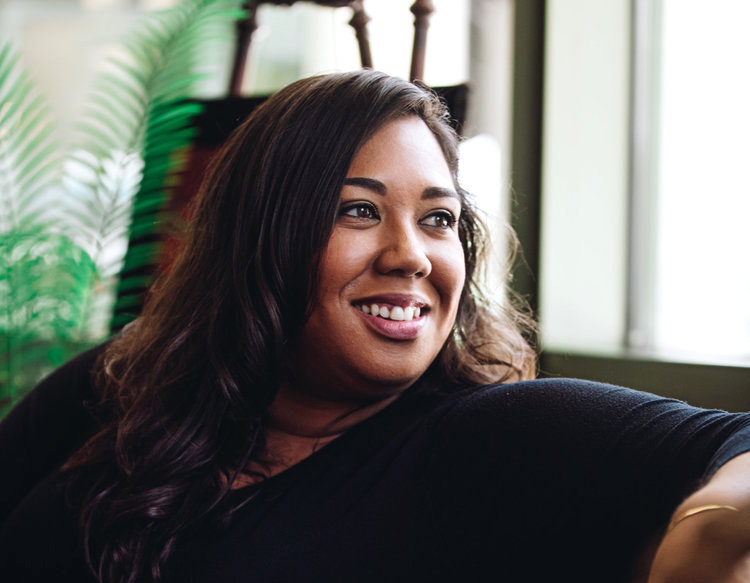
GINA TYQUIENGCO (Guam/USA)
Visual Artist – Painting
Click for Artist Website
What is your artistic practice?
I am an abstract artist devoted to exploring the theme of cultural duality in my work. My work also explores themes of universality, peace, love, purity, process, mystery, and beauty. My paintings are largely inspired and influenced by music, which I believe spans our differences and connects us across race, religion, ethnicity, and culture.
On what projects are you currently working?
I am working on smaller abstracts on paper using acrylic, ink, and gold leaf foil. I'm also in the process of moving into my first studio space that will be shared with up to three other artists. We're creating a space where everyone is welcome and we plan to host monthly workshops, open studios, and other various events.
What is the most relevant conversation that you remember having during your residency at Arquetopia?
I have to preface this question by saying that all of my conversations at Arquetopia were profound. I have never been in a space where everyone is so vulnerable and open to sharing their creative process. It was so refreshing to be surrounded by people who shared their perspectives on all aspects of life, and did so unapologetically and articulately. However, the one conversation that was most relevant to me was a meeting with Nayeli and Francisco where I was asked why I repeat certain patterns in my work. It was such a simple question, but I didn't have an answer. I have always been aware of the patterns in my work, but I have never asked myself why I create those patterns. Francisco then prompted me to seek the reasons and take detailed notes while I'm creating. That one conversation completely changed how I work.
What changed after your residency at Arquetopia?
My creative process has changed a lot and I've become more confident and open-minded. I used to zone-out while painting, but now I have become more mindful of the movements that I make and the thoughts that I think. I became more confident in myself as a woman (of cultural duality) and I started to change the language that I use, such as replacing "I feel... " with "I think... " when expressing myself. I also started a new practice of journaling about my work, which has helped me to understand myself better. As an abstract artist, I want my work to speak for itself, but I've realized how important it is for me to communicate my thoughts through language as well. This practice of being more mindful and asking myself questions as I create has helped me communicate better, which was my ultimate goal for the residency.
How are artist residencies important to the artistic practice?
I broke open at Arquetopia... it was truly a life-changing experience. Residency programs are important to the artistic practice because, as artists, we are all on a journey of seeking truth, and residency programs help us get closer to the truth. They help us get closer to the truth by creating the space to be vulnerable and ask the big questions and see things from a different perspective. At Arquetopia, I was surrounded by like-minded people who were talented and intelligent and passionate. Arquetopia did a great job of curating who shared the space and I appreciated their selection process. Nothing compares to the energy you create when you’re doing something with passion and honesty. It fills you up and you radiate inspiration. This was the energy I was surrounded by all the time at Arquetopia, and it’s why it was so easy to break open.
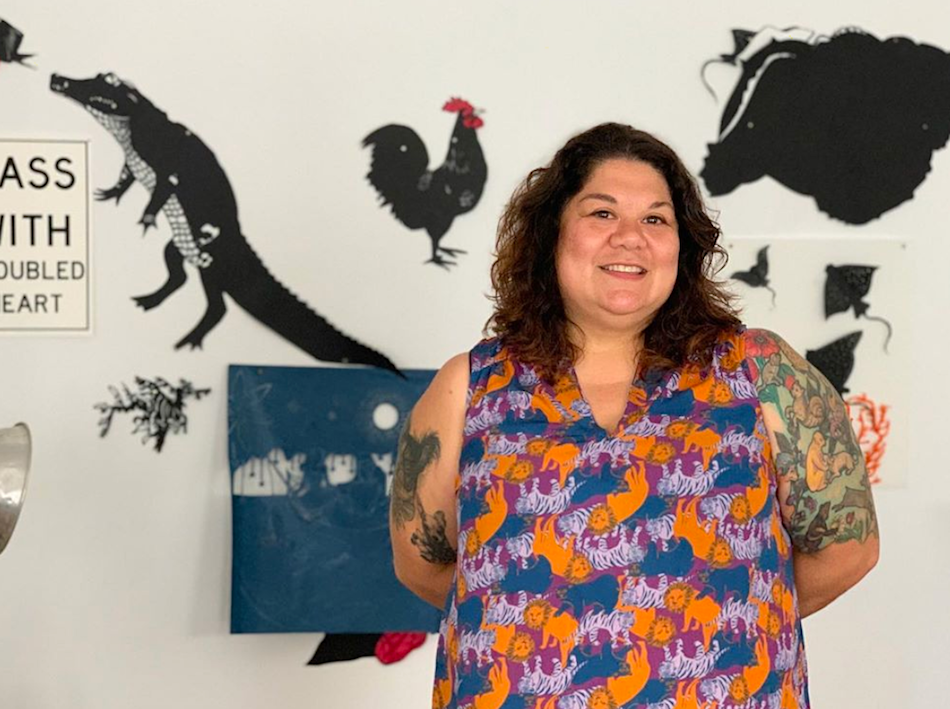
SANDRA WILLIAMS (USA)
Visual Artist – Cut Paper, Community
Click for Artist Website
What is your artistic practice?
“Anthropocene Blues: Nature and the Social Imagination” investigates the boundaries between human and animal, realms perceived as entirely separate by the modern mind. I explore the intersection of nature and culture through cut paper artworks. The simple act of cutting paper is a study in transformation, reducing visual information down to the essentials. In this medium, an outline alone can carry meaning and narrative. Cut paper practice carries incredible tension; a single mistake can compromise the entire architecture of a piece. Anthropocene Blues reflects this tension in its subject matter: giving alternate consideration to the extinctions of species, threatened ecosystems, and the global decline of biodiversity with the natural history of wildlife species deemed worthless, filthy, or invasive.
On what projects are you currently working?
I am preparing for two exhibitions, one at The Museum of Nebraska Art and one at Stone Soup in Key West. I am working a series of papercuts. The imagery intertwines narratives and stories assigned to remote and endangered landscapes and threatened species. While at Arquetopia the history of the convents and bodies of knowledge forged by nuns leading sequestered lives became fascinating to me. I have been rethinking my previous assumptions about nature and gender.
What is the most relevant conversation that you remember having during your residency at Arquetopia?
Our meetings were so insightful. I have always done things somewhat intuitively, and Francisco had a way of presenting articles and theories that gave shape to things that I knew or felt but could not express. I would read the articles and think, “This is what I have been trying to say.”
There were several phrases from the first conversation, that were jolting because of their honesty. Subjects that I thought I was so familiar with were recontextualized in such a way that it upended what my previous understanding of them. “The history of scientific illustration is violent,” I had never really considered that it was part of the cycle of objective and subjective violence.
What changed after your residency at Arquetopia?
As I engaged in conversation, I realized how often I couch my language (about controversial topics) in euphemisms or vague language. Francisco would say, “It isn’t sort of violent; it IS violent.” I walked away from Arquetopia with a sense of strength, the ability to state something plainly and stand by it, regardless of which toes you are stepping on. In De-Centering myself, I found strength.
How are artist residencies important to the artistic practice?
I loved being in that space with other artists. As more people arrived at the residency, the better it became. It became this opportunity to explore new places you probably wouldn’t have otherwise, to see with other eyes things that had previously gone unnoticed and to have utterly new conversations.
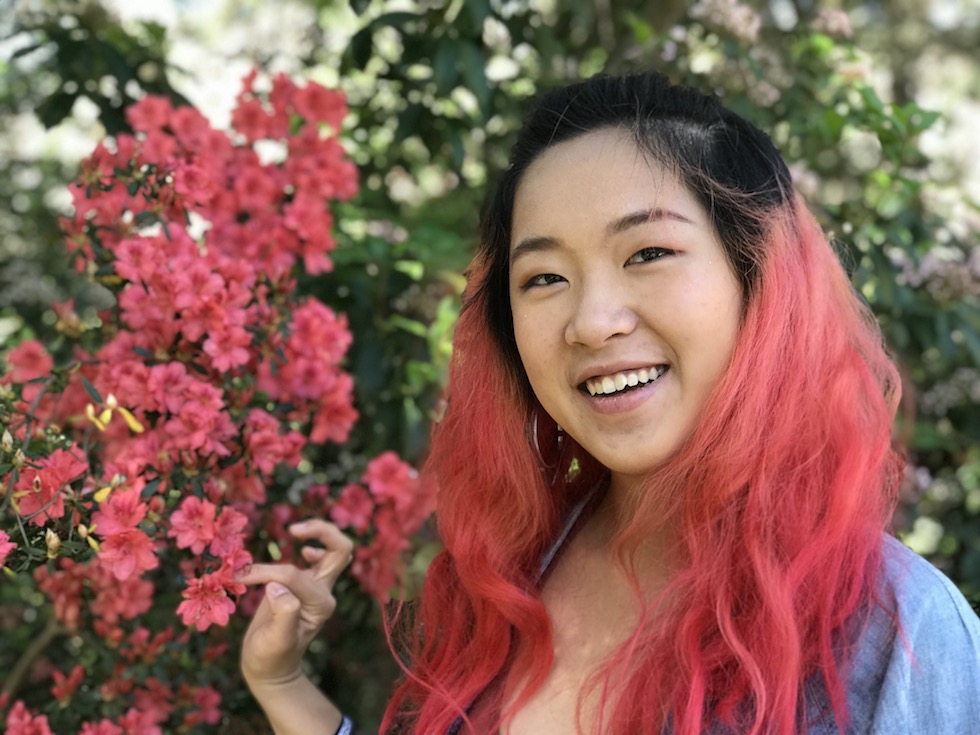
WENDI YAN (China)
Visual Artist – Multidisciplinary
Click for Artist Website
What is your artistic practice?
For the past year and half, I have been mostly doing virtual environment building, architecture, and documentary. My artistic practice has been very scattered: I also have backgrounds in oil painting, sculpture in various materials, performance, and creative coding.
What ties the greatest majority of my work together is an interest in the boundary of the self and places where that boundary dissolves. I am in particular a fan of the emotional experiences of awe and absurdity. Both experiences take people out of themselves—their egos, usually very briefly, but these experiences often create a sustained period of taking oneself a bit less seriously and sometimes result in a peaceful state. Or, in some philosophical frameworks, awe and absurdity help people understand a bit better that there is no individual self.
I label myself as an artist in the broadest way, to exempt myself from any additional identity labeling that would limit what I do. I love exploring different materials, dimensions, and mediums of expressions that engage with different senses, to understand or facilitate the experience of ego reducing.
Another part of my identity is that I am starting my sophomore year this fall at Princeton University. I plan to study history of science, architecture, cognitive science, and computer science, while keeping myself creatively engaged in my free time. I have always loved working with my STEM friends who are also incredibly creative, so I look forward to doing more cross-disciplinary collaborations in the future.
On what projects are you currently working?
I am making a feature-length documentary about the student psychedelic clubs at Princeton, Penn, Harvard and UCL. It features the student leaders’ personal stories battling with suicidal depression, anorexia and bulimia, their journeys of starting the student clubs in respective colleges and organizing the Intercollegiate Psychedelic Summit at Harvard in 2020, my interviews with world-leading psychedelics scholars Karl Friston and Robin Earhart-Harris, and an actual psychedelic trip undertaken by a few of the student leaders. The film is not only about the story of bringing psychedelic research further into the system, but also about a group of friends transitioning from the college bubbles into the society, while they continue to find ways to dream for humanity. I started making this film in October 2019, and it should be completed by early September of 2021.
I also recently started an internship with the Qualia Research Institute (QRI). I am creating illustrations for their main research articles and doing web design for QRI’s upcoming html book. QRI is a small group of scholars tackling consciousness research, with the goal of building an intellectual foundation for engineering a more blissful future. I am excited about using my skills in digital painting, 3D modeling, creative coding and graphic design, to help QRI’s research reach a broader audience.
Apart from these two projects, I want to spend my time on practicing the skills I have been trying to build, especially in the last year. At Arquetopia I did a weaving piece on my reflection of death and the shaping of Mexico’s national identity, repeatedly using the mitla pattern that represents death-life cycles.
Prior to the Arquetopia residency, I made a sound piece with Max/MSP about the fundamental human experience of being trapped in one’s own consciousness. Before then, I built two virtual environments that reflect my wordless world models in reaction to what is going on with contemporary society: one about the subtle religion of the cute that manifests in politics and tech world, and one about America’s capitalism on self-expression. The summer of 2019, I did independent research at the Positive Psychology Center of University of Pennsylvania on designing awe-inspiring spaces. I wrote a paper that incorporated philosophy, positive psychology and neuroscience, and curated a gallery of examples in architecture and art.
I hope to create multi-sensory experiences in the future, whether in physical reality or virtual reality, that would inspire egoless internal experiences.
What is the most relevant conversation that you remember having during your residency at Arquetopia?
I didn’t know very much about Mexico prior to this residency and bought into the popular images of what the Day of the Dead is to the country. I proposed in my application to Arquetopia that I wanted to make a piece about the similarities between what death means in Mexico and in Tibet, as these two regions are both known for their radical acceptance of death. But through my research, especially reading the book Death and the Idea of Mexico, and my Skype calls with Francisco and Nayeli, it didn’t take too long for me to realize there is almost nothing that Mexican and Tibetan cultures share about death. Death is an entirely religious issue in Tibet, whereas in Mexico it has been a lot more politically based than I imagined. This realization was a critical point in my residency. I completely got rid of the Tibetan part and just designed my work solely around what I have learned about death (and the Day of the Dead) in relation to the shaping of Mexico’s national identity.
What changed after your residency at Arquetopia?
The more concrete thing I took away from Arquetopia is knowledge of weaving. Arquetopia for me was a branching out with the openness that I could be introducing something new to my overall artistic practice. I had never done textiles before and it was especially exciting to learn weaving in Mexico as I had been curious about both weaving and the Mexican culture for a long time. I loved the soft and patterned volumes I could create with weaving and I definitely want to integrate textiles with my other skills that tend to be digitally based. I am thinking of interactive textiles or wearables!
There is also something abstract about my experience at Arquetopia that I can’t quite tease apart if it is more about the residency or more about the Mexican culture, but I noticed that even in the weeks after Arquetopia, I have been able to peacefully focus on the process of making and experiencing more. The dynamics the staff brought into the house every day, excursions to the Oaxaca City and nearby historical sites, the schedule and pace of the residency itself, all nurtured a mental state that is different from what the US or China — two countries I have spent almost all my life in — tends to induce in me. I found myself focusing more on the process and the present experience than some type of “end” or “result.” And I have been able to maintain this more peaceful state of mind I gained from Arquetopia in the weeks since I finished the residency.
How are artist residencies important to the artistic practice?
Artist residencies provide an environment for immersive dialogues among creators. I loved my conversations with other artists at Arquetopia: taking foraging trips with Margaret and learning how to find pigments in rocks, hearing about Bill’s immersive theater pieces, etc.
Residencies also help create a structure for artists who tend to juggle a lot of uncertainties in their professional life. A change of environment, programming, people and theme helps with framing a period of the artist’s life. I like introducing this kind of structure to my life because I know in a given period of time I can experiment with something in my practice or experience a completely new culture, so that I can keep challenging myself and growing creatively.
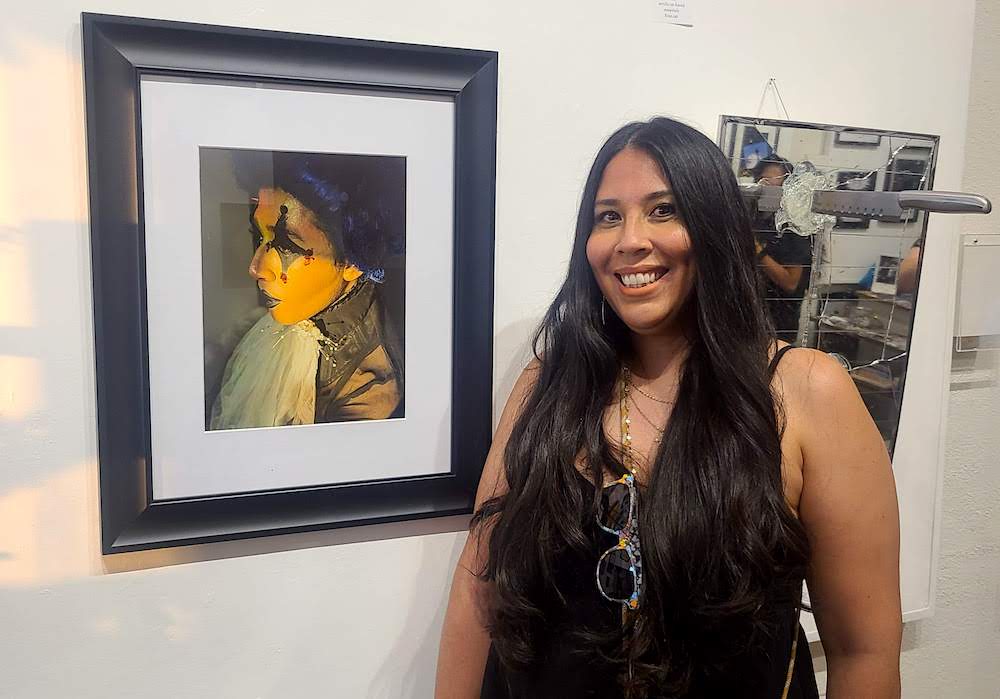
AMY ZAPATA (USA)
Visual Artist – Multidisciplinary
Click for Artist Website
What is your artistic practice?
My artistic practice involves photography, documentary filmmaking, and printmaking.
On what projects are you currently working?
I am currently back in Puebla, continuing the work I started at the residency. I am also working on a exhibition show dedicated to creating a safe queer space in San Bernardino in conjunction with the Garcia Arts Center that will open in September 22. I am also working on “Pocha,” a show that highlights underrepresented artists. I am a featured artist for the online magazine “The Pomonan,” adding stories and photos throughout the year.
What is the most relevant conversation that you remember having during your residency at Arquetopia?
The most relevant conversation that has truly helped shape and form my current work, was a discussion in which the topic of anger came up. Immediately, Francisco understood my fear of allowing the anger I felt take hold. The readings assigned and the discussion that occurred the following week, has allowed me to accept and use the anger that I feel. It has allowed me to remain hopeful in spite of incredibly difficult times ahead. My artist practice has always attempted to address, even if subtly, the racism, sexism, homophobia that has plagued people in disenfranchised communities. I was challenged to be honest, in a way that scared me, but has since left a profound impact on me as an artist and more importantly as a person.
What changed after your residency at Arquetopia?
The most impactful thing that the residency did for me was open my eyes to what a practicing artist could be. Prior to my residency in Puebla I had a very specific idea of what type of artist I needed to be, but my time in Puebla, the work with the Artists in the program, the readings and the discussions has allowed me to work with a level of freedom and openness that I had not had prior to my experience. I fell in love with the city so much that I have since returned to continue my work. I have new ideas and that would not have happened had I not been in Puebla.
How are artist residencies important to the artistic practice?
Artist residencies challenge you to look at the space around you and attempt to understand your place within it as an artist and as a person. As an artist the desire to be a machine and turn out work, to also turn out marketable work, is something that within capitalist societies is prevalent. The artistic practice at times cannot be defined in a homogenous way, and residencies allow artists to explore and immerse themselves in a different environment to help define and open up other means of what being an artist can be.
We add content to this page on an ongoing basis. Come back for more profiles of our outstanding alumni.
Click for Special Residency Programs for Arquetopia Alumni
September 2023 – We are excited that Arquetopia is included on this list of
The Top 10 Artist Residencies in Latin America!
June 2023 – We are thrilled that Arquetopia is included on this list of
10 of the Best International Art Residencies around the World!

